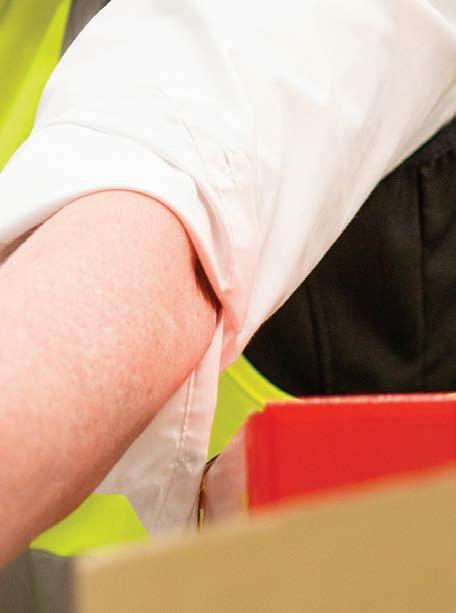
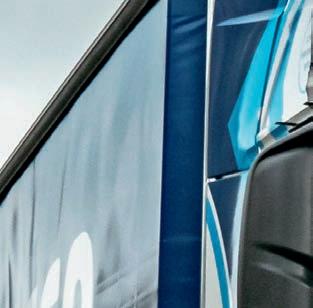
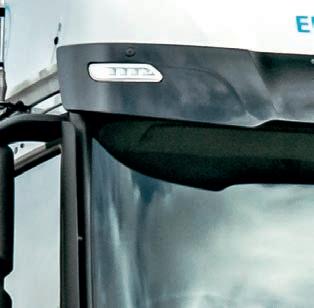
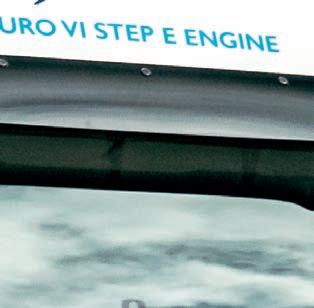

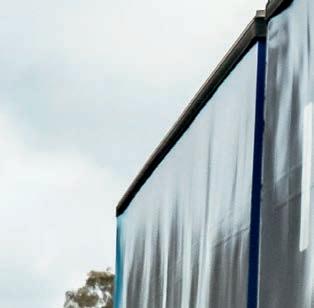
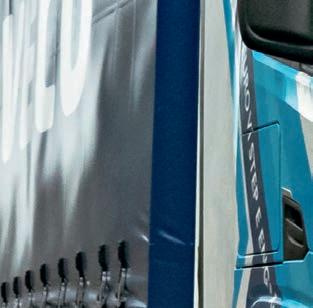
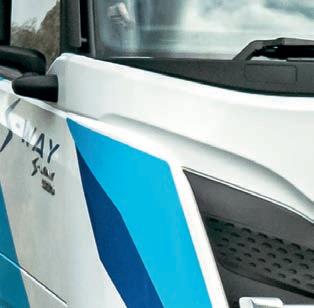

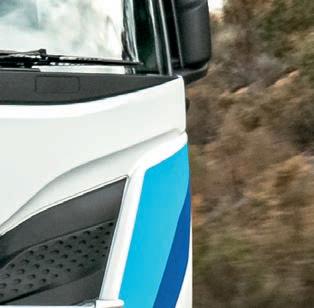
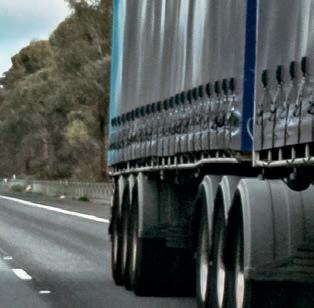

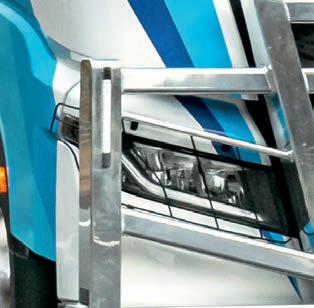
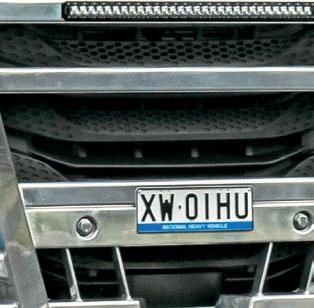
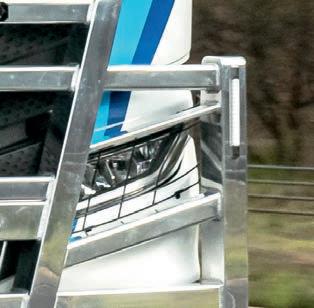


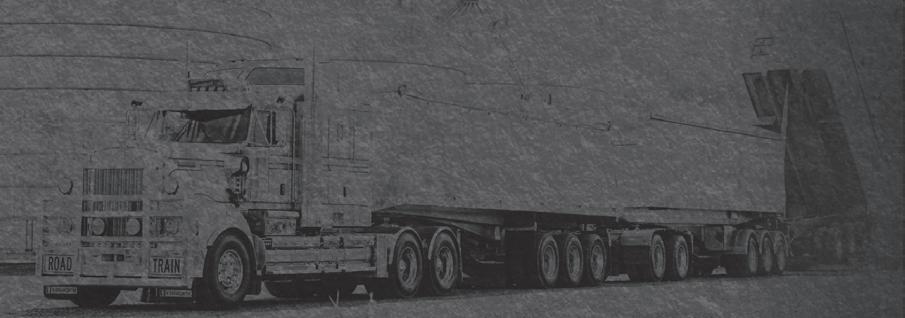



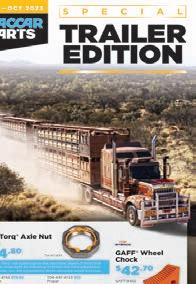
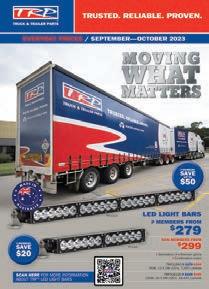



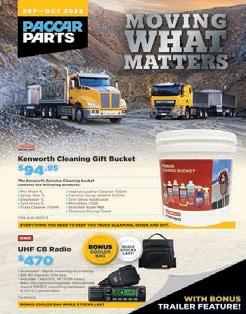

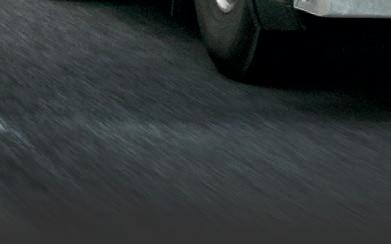
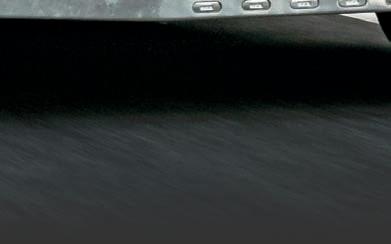
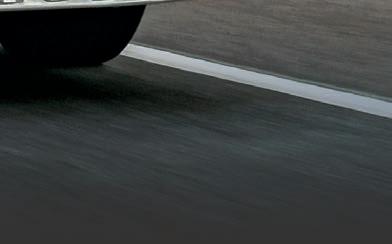

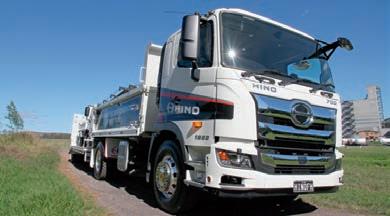

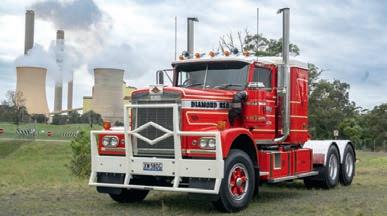












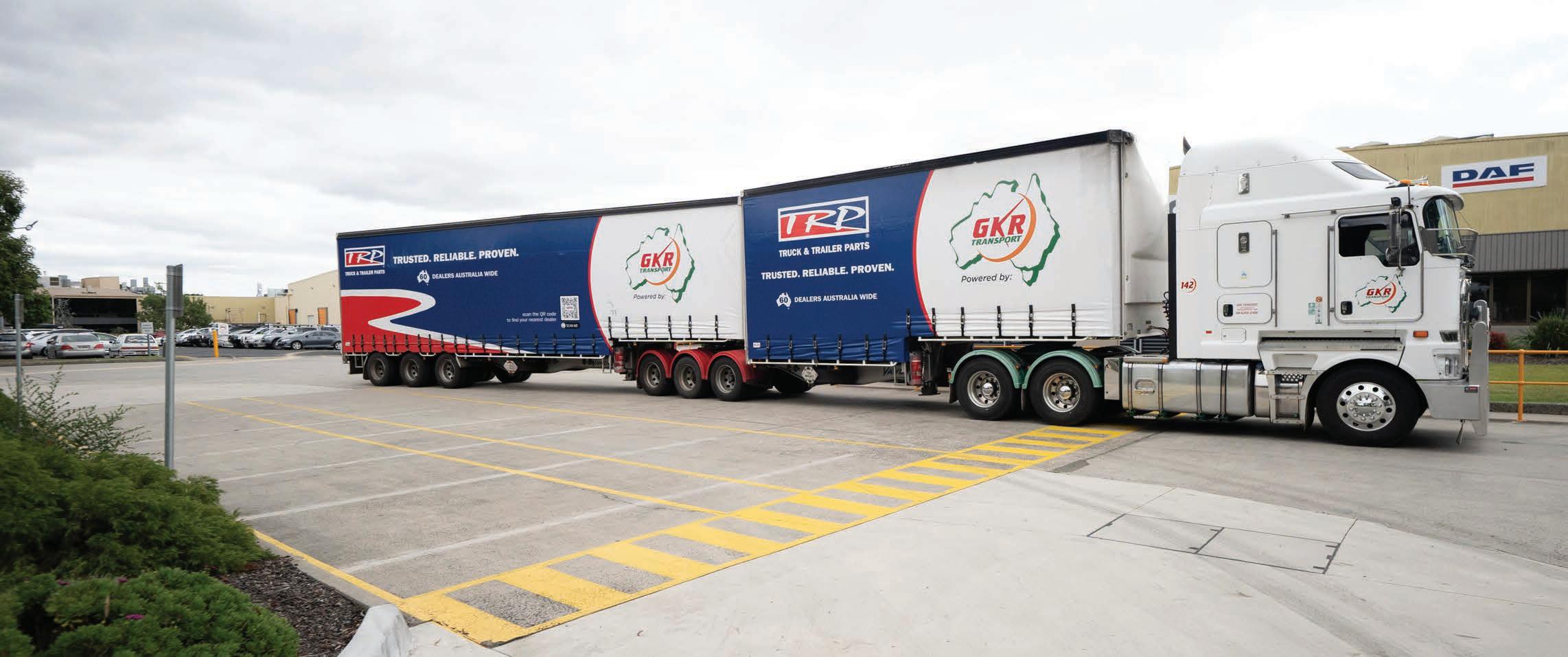







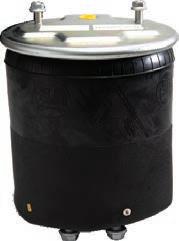


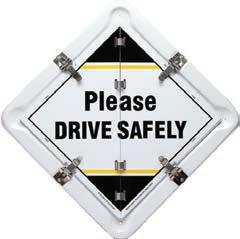
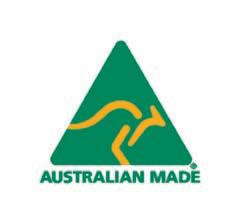


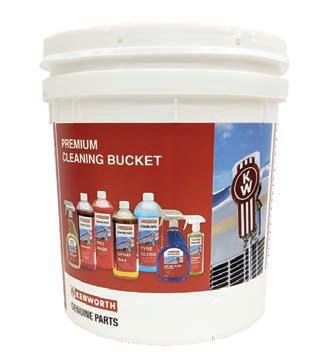
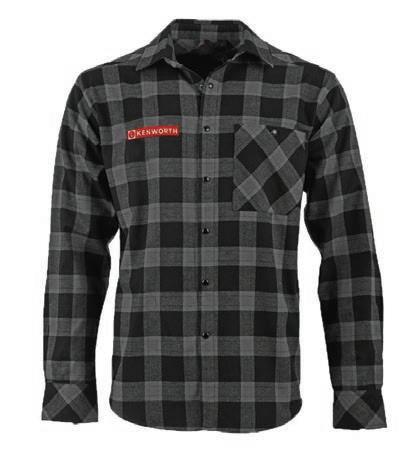

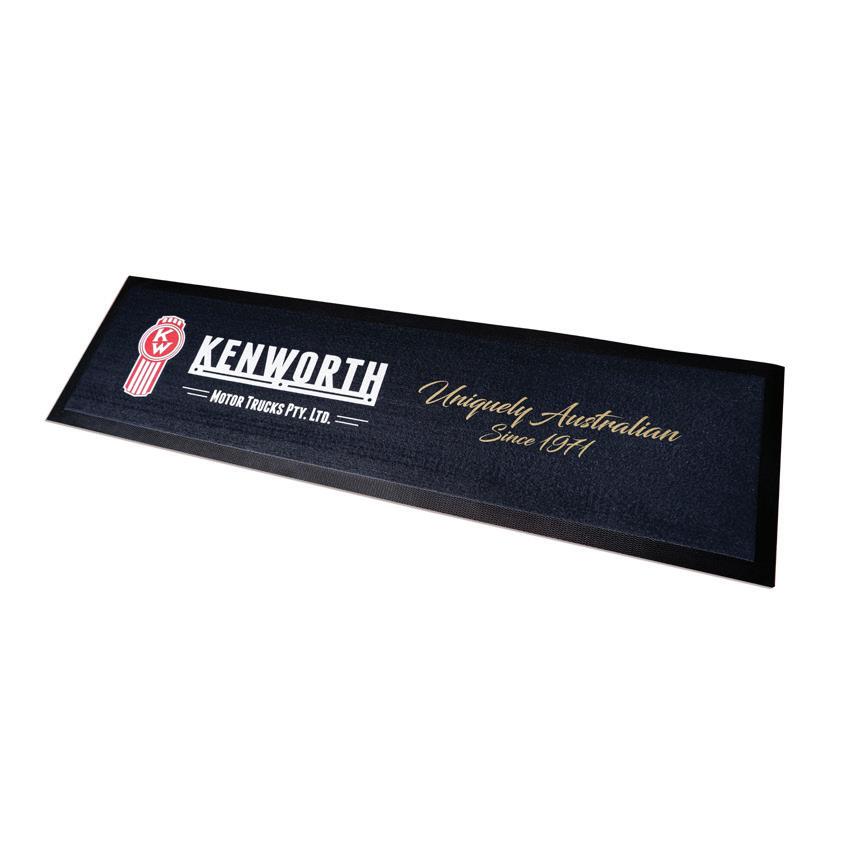

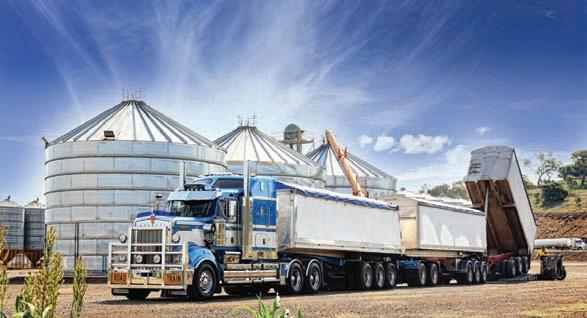











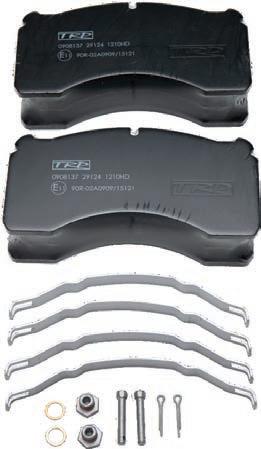


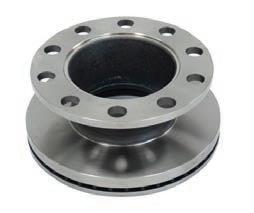
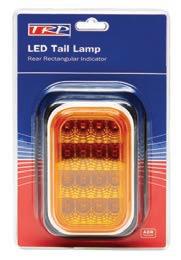

























































































Make no mistake, Iveco’s S-Way flagship is an all-round more appealing product than anything the European conglomerate has ever before offered the Australian market
Alpha Omega Excavations on Queensland’s Gold Coast has become a two-year success story, thanks in part to their fourstrong fleet of Fuso Shoguns
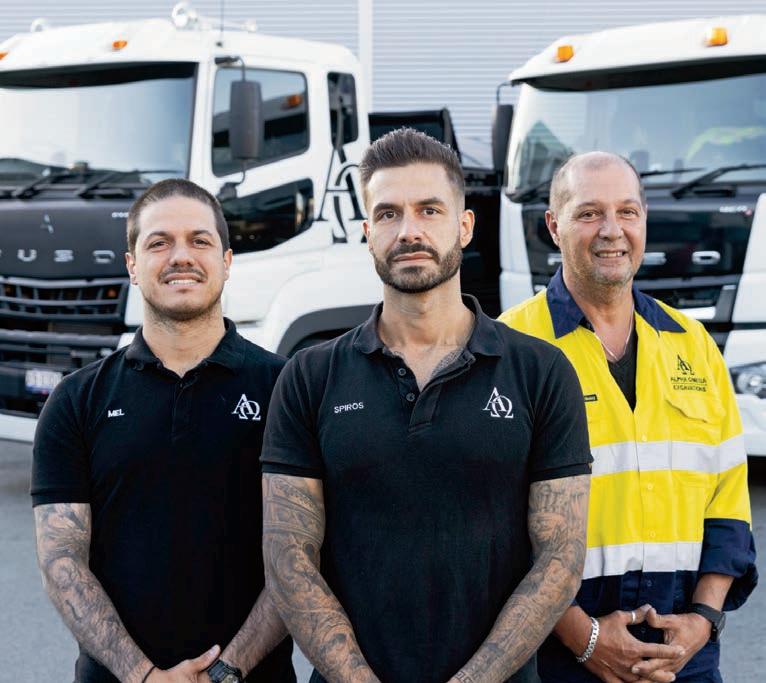
Memories of a ’69 Diamond Reo leaving his 185hp ACCO in its wake came flooding back 50 years later when Norm Bransgrove discovered the classic up for sale
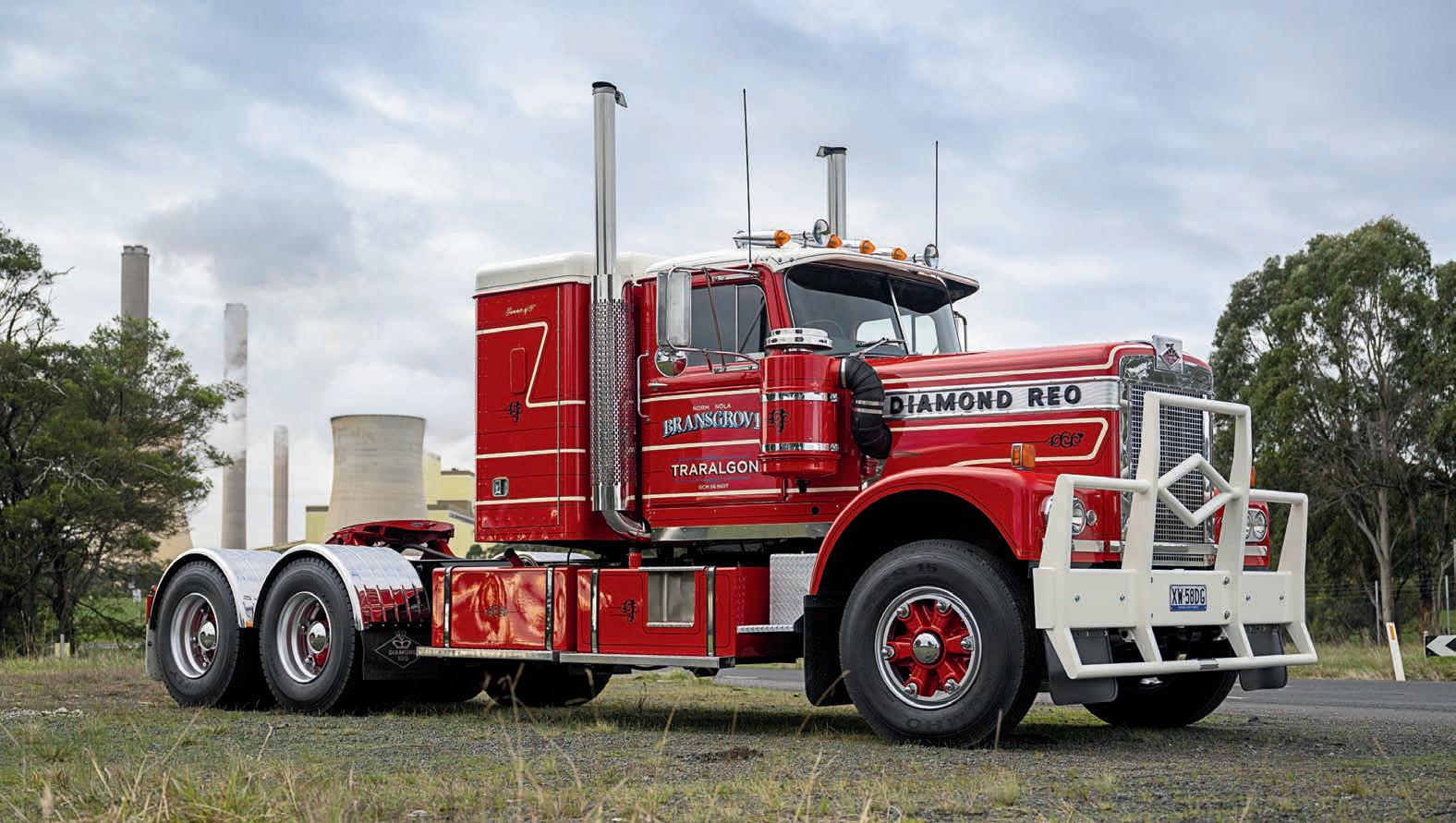
North Coast Petroleum-sponsored Casino Truck Show organisers were delighted when more than 600 trucks rolled up for the big August 5 event


Engine brake technology has resulted in reduced noise in recent years, but older trucks are still having a negative impact on residential areas
Hino Australia is today equipped with the best product range in its long history here, including the versatile 9.0 litre line-up capitalising on the modern-day brilliance of Allison automatic shifters
Janus Electric’s CEO Lex Forsyth discusses energy transition and emissions reduction in road transport, and how the electric truck shortage can be overcome
“We want to make truck driving pretty much an art form.”





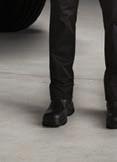
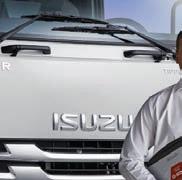

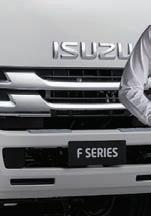








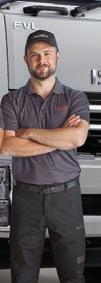














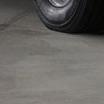























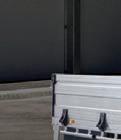



















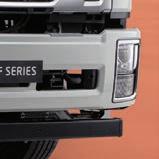

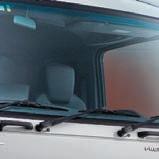




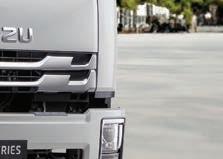


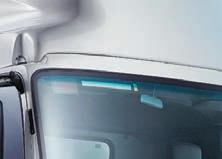






































































































































The last thing anyone needs is an unexpected bill landing on their desk. But with an Isuzu Service Agreement, you can choose from three packages to fit your needs and flatten your servicing costs into a single, predictable, monthly payment. Plus, you’ll have the peace of mind knowing that you’re helping to meet your chain of responsibility requirements. And that all means a big load o your mind. To find out more, visit isuzu.com.au or see your nearest Isuzu Truck Dealer. Care. It’s what we do.
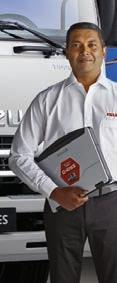
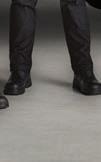

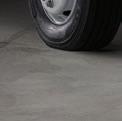




EDITORIAL
Editor Greg Bush
E-mail Greg.Bush@primecreative.com.au
Journalist Alex Catalano
E-mail Alex.Catalano@primecreative.com.au
TechnicalEditor Steve Brooks
E-mail sbrooks.trucktalk@gmail.com
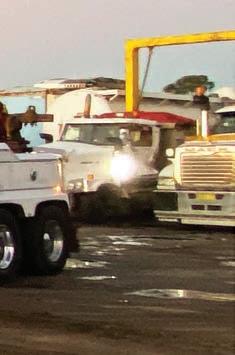
Contributors Warren Aitken, Robert Bell, Frank Black, Warren Clark, Julian Daw, Rod Hannifey, Michael Kaine, Dale McDonald, Jake B. Rake, Michelle Tayler, Ken Wilkie
Cartoonist John Allison
PRODUCTION
Art Director Bea Barthelson
Print IVE Print
ADVERTISING
Business Development Manager

Hollie Tinker Ph 0466 466 945
E-mail Hollie.Tinker@primecreative.com.au
SUBSCRIPTIONS
www.ownerdriver.com.au/subscribe
Phone +61 (0)3 9690 8766
Mon-Fri 8am-4.30pm (EST)
Email subscriptions@primecreative.com.au
Mail 379 Docklands Drive, Docklands, VIC 3008 Australia
EXECUTIVE GROUP
CEO John Murphy

COO Christine Clancy
Operations Manager Regina Fellner
Trader Group Sales Director Brad Buchanan
How often do we hear the term, ‘just a truck driver’. Surprisingly, it’s a phrase repeated by certain truckies who have become resigned to the fact that it’s a widespread opinion among the public based on their perceived place in society. It could be part of the reason why good truck drivers are opting out of the industry.
Truck driving is a skilled profession – and it’s not for everyone. Working for a reputable business, either large or small, can earn drivers a decent living despite, in the case of long-haul drivers, the long hours staring at the white line on the highway. Another factor to consider are the days, or weeks, spent away from home, family and friends.
Reliable, competent truck drivers should be an asset to any business – and usually they are. In articles appearing in OwnerDriver over the years since its founding in 1992, it’s not uncommon to read that bosses of trucking companies, when considering a new truck purchase, seek advice from senior drivers within their ranks. With years of experience behind the wheel, those drivers are able to pinpoint the strengths and weaknesses of truck brands in terms of comfort, drivability and performance, and pass their opinions onto management.
Owner
So, it’s disappointing to say the least when a minority, whose wages rely on truck sales, makes disparaging and unprofessional comments about people at the coalface driving their precious products. Another point to consider is that many truck drivers will eventually take the plunge and purchase their own commercial vehicle. Or is that fact overlooked in the corporate world?
Owner-drivers and small fleet operators are responsible for a large percentage of trucks on the road, whether they’re running their own race or subcontracting to a large fleet. What’s certain is that eventually the owner’s older trucks which will have chalked up big kilometres will be sold off, retired to the truck show circuit or left in the yard as a source for spare parts. That’s when thoughts turn to a replacement truck.
If a customer, no matter how small their business, is brushed off or receives discourteous service, he or she will soon be on their way to a rival dealership.
Getting back to truckies – the way the transport industry is now, drivers need to be on the pace with technological advances that are changing year on year. It’s not a job for ‘just a truck driver’. Businesses rely on competent, skilled operators.

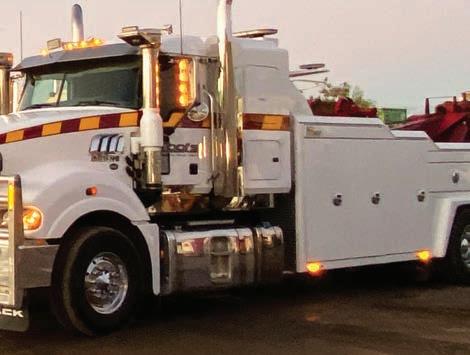
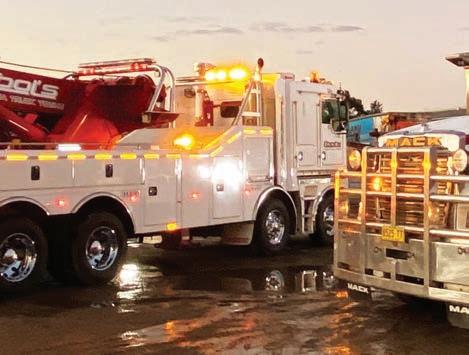
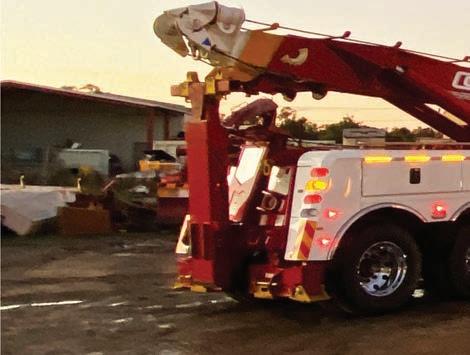
An enlightening comment comes from an article on page 32 of this issue where Spiros Flogeras of the successful Alpha Omega Excavations small business on the Gold Coast, remarked, “We want to make truck driving pretty much an art form”.
The image of the pie-eating truckie in singlet and thongs has been pretty well buried, despite the regurgitators’ efforts. Truck driving is a demanding occupation and requires skill and professionalism. As for this publication, OwnerDriver will continue to run stories about the various sectors of the industry. More importantly, as our motto says, this publication has and always will be, “dedicated to the success of the person behind the wheel”.
ISSN 1321-6279
OwnerDriver magazine is owned by Prime Creative Media. All material in OwnerDriver is copyright and no part may be reproduced or copied in any form or by any means (graphic, electronic or mechanical including information and retrieval systems) without written permission of the publisher. The Editor welcomes contributions but reserves the right to accept or reject any material. While every effort has been made to ensure the accuracy of information Prime Creative Media will not accept responsibility for errors or omissions or for any consequences arising from reliance on information published. Opinions expressed in OwnerDriver are not necessarily the opinions of, or endorsed by the publisher unless otherwise stated.
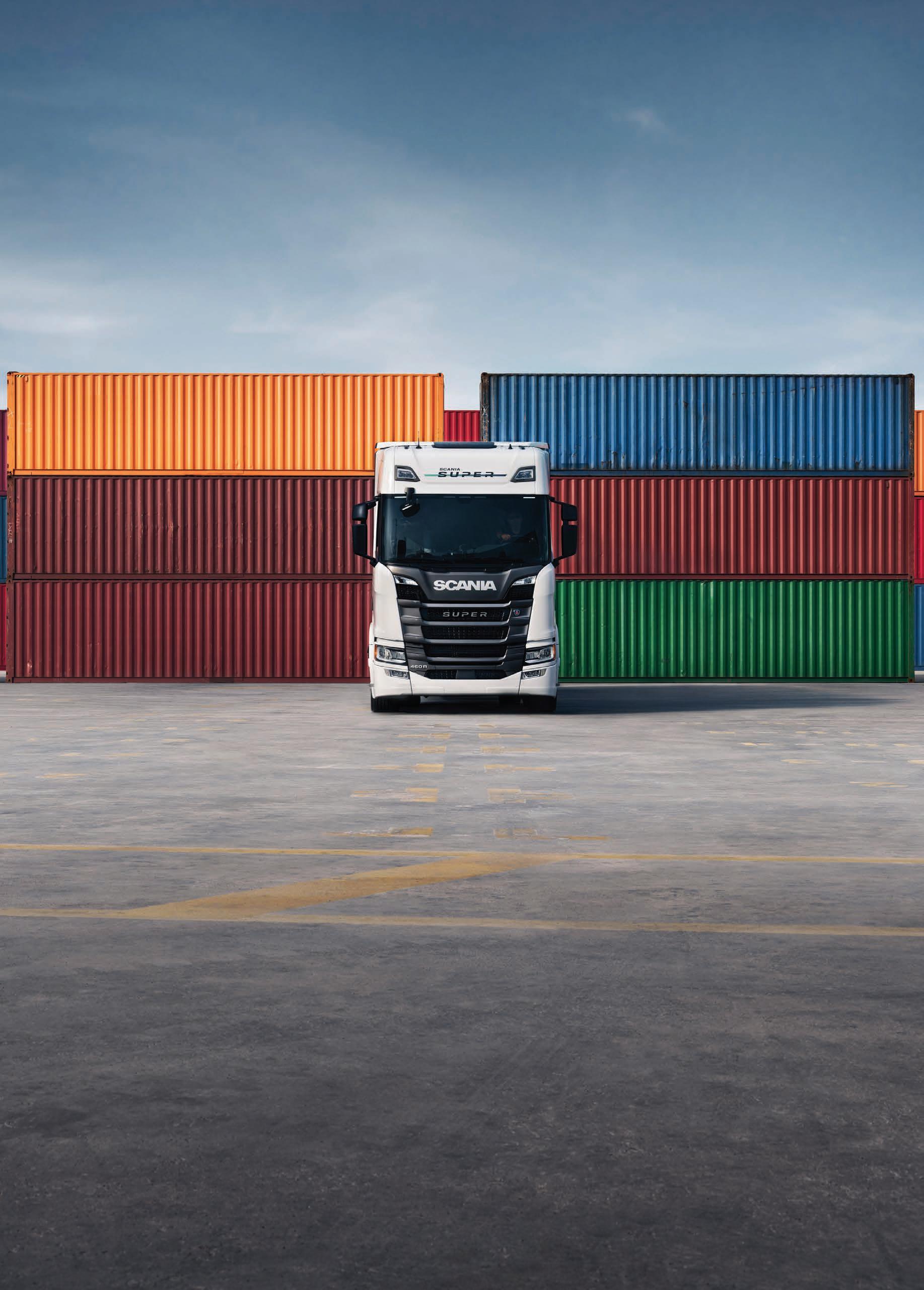



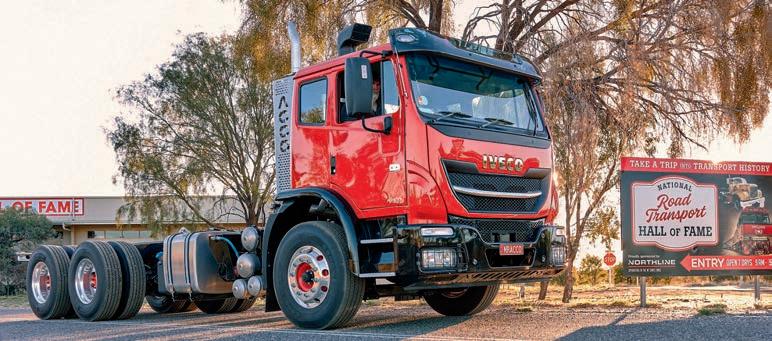
Ahead of a new model launch later this year, the last locally-manufactured ACCO is now on regular display at Alice Springs’ National Road Transport Museum.
The donated 6x4 ACCO cab chassis which is finished in bright red paintwork, was produced in November 2019 and has since been in storage; it’s the last example of the fully built local model before being superseded in 2020 by a new ACCO version based on a global platform from Europe.
The ‘Australian Constructed Cab Over’ was recently transported from Melbourne to Alice Springs just in time for the Australian Festival of Transport which was held at the Museum from August 24 to 27.
Iveco

 managing director
managing director
Michael May says the National Road Transport Museum was a fitting home for the final Euro 5 ACCO produced.
“In the late 1960s through to the early 2000s, the ACCO played a massive role in Australia and New Zealand, being the truck of choice for a great many applications including general freight, linehaul, emergency service work and vocational duties including waste collection and agitator work,” May says.
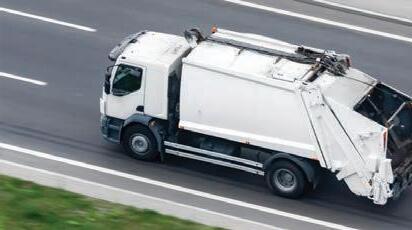
“In more recent years ACCO’s primary focus was the refuse industry where it continues to be a favourite among operators for its extreme reliability and low total cost of ownership benefits, in what is arguably one of the most demanding truck applications there is.





“At the end of 2019, Iveco celebrated the delivery of the 90,000th ACCO, a testament to the overall success of the model, so the truck’s inclusion within the National Road Transport Museum is deserved and well earned.
“And while it may mark the end of an era, we very much look forward to what the future holds with the imminent release of all-new ACCO,” May says.

In accepting the donation, Road Transport Historical Society Inc. CEO Nick Prus cites the contribution that
ACCO has made to the Australian road transport landscape over many years.

“We’re very very happy and grateful that Iveco considered us for this donation,” Prus says.
“As an exhibit, the last locally manufactured Euro 5 ACCO aligns very well with the goals of the museum: to preserve the heritage of the local road transport industry. The ACCO will be on permanent displace in the ‘Trucks in Action’ venue, which showcases the diversity of vehicles that were built in Australia.”
To combat the extreme pressures that heavy duty vehicles such as Cement Agitators, Garbage Compactors or City Route buses are exposed to, Bendix has created Bendix Protrans™HD.
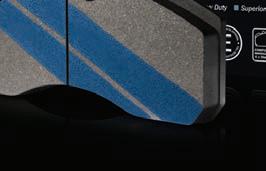
Protrans™HD has a heavy-duty formulation designed to cope with high temperatures found in constant braking and full GVM loading which requires a higher performance brake pad.
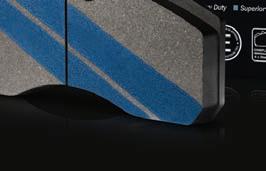




MATERIAL REFERENCE APPLICATION



Route bus applications. Frequent braking environments, heavy traffic, steep gradients. Long wear life at high brake temperature. Strong resistance to fade at very high temperatures.







FRICTION CLASSIFICATION

MAXIMUM CONTINUOUS WORKING TEMPERATURE












Trust is earned, not given. Fuso has spent 50 years in Australia forging a reputation as a leading brand you can count on. We’ve helped businesses build successful futures with durable trucks built by the world’s largest truck manufacturer, Daimler Truck. What’s more, our entire reliable range comes with a 5 year warranty,* plus the option of fast track finance with guaranteed future values. No matter the job, there’s a Fuso truck to get it done.
FOR MORE ABOUT THE FUSO TRUCK RANGE, VISIT FUSO.COM.AU

The National Road Transport Association (NatRoad) has lodged an eight-point ‘log of claims’ with the New South Wales Tolling Inquiry, calling for a ‘fairer go’ for truckies on the state’s motorways.
They include slashing the cost recovery ‘toll multiplier’ between cars and trucks from three-times to two-times (on the M5 East and M8 to other parts of the tolling network), exemptions for Euro VI or zero emissions heavy vehicles and toll discounts for off-peak or multiple journeys.
NatRoad CEO Warren Clark says tolls on heavy vehicles on most of the privately-operated network are
set using a “three times the cost of passenger cars” multiplier.


“It’s simply too much and the multiplier is well above the cost of road upkeep and damage incurred by trucks,” Clark says.
“There is no priority placed on transport planning outcomes and creating liveable urban communities by seeking to incentivise goods movement on motorways.
“There is no understanding of commercial realities – higher tolls
on trucks are justified by claims of the higher value of time savings, which do not stack up to scrutiny.”
Clark says the lesson of the pandemic and related supply chain crisis was that trucking is an essential industry.
“Private toll road operators (with government agreement) are directly contributing to making a difficult business environment even worse, with impacts on the viability and safety of small business operators,” he says.
In Queensland, a report in the Brisbane Times has revealed toll operator Transurban is eyeing off the opportunity to become involved in a proposed new tunnel in Brisbane’s northern suburbs from Kedron to Carseldine, bypassing Gympie Road.
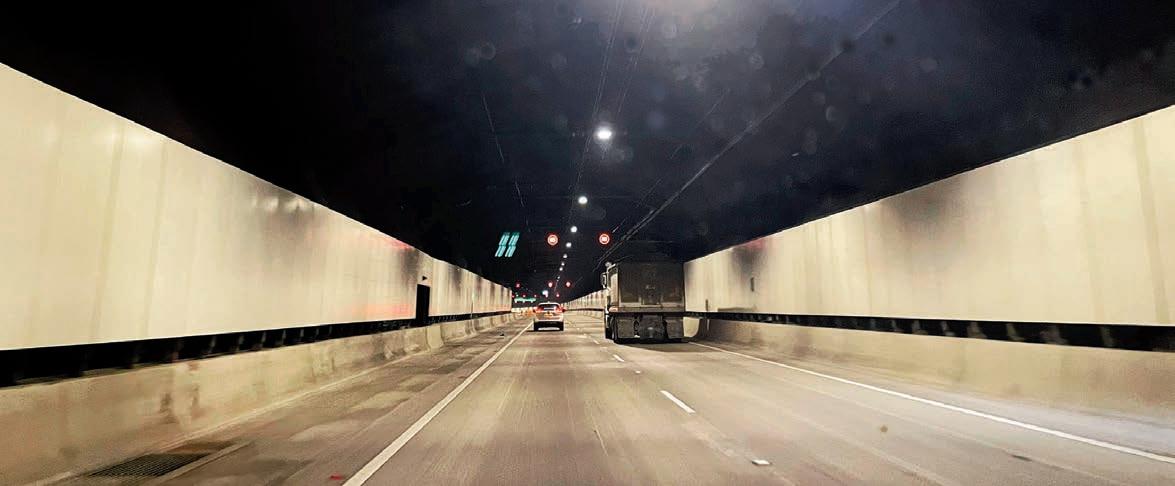
Transurban already controls the Gateway and Logan motorways, the Clem7, Airport Link and Legacy Way tunnels, and the Go Between Bridge in the sunshine state capital.
SUPERCOIL FEATURES



Compliant Standards: ADR-38/05, Tested to DIN 74323, 74324 & ISO 7375 A1












Anti Kink Thermoplastic Polyurethane material






• Excellent abrasion resistance
• Excellent mechanical properties, combined with a rubber-like elasticity

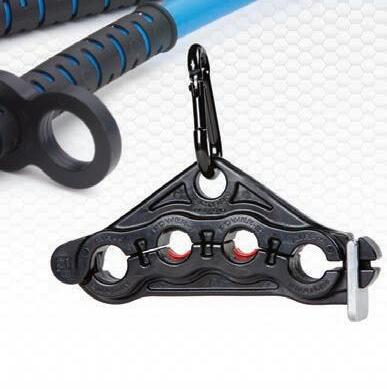
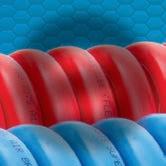
• Oil and Diesel resistance
• High UV resistance (>4000 hours of Accelerated Testing to ISO 4982-2)
• 40% lighter than traditional Type B Suzi-Coils
High elasticity with excellent flexibility and recoil memory.
• Long & Short tail models available.
SUPERCOIL Compact 74mm diameter coil
Regular Suzi-Coil 130mm Diameter

SUZI-COIL TEC-CLAMPS 4 hole TEC-CLAMP 3 hole TEC-CLAMP
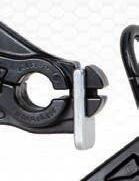
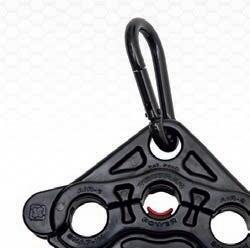
Versatile design can be used with both rubber air hose or coiled




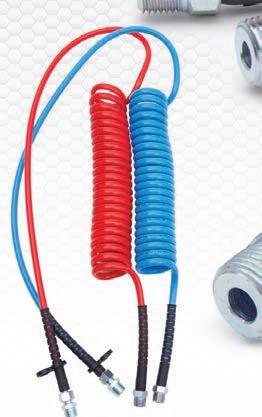

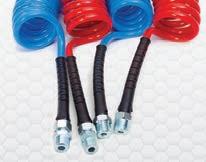


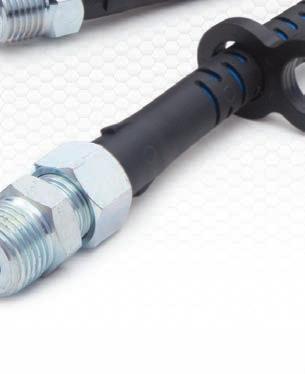

GP AIR COUPLINGS
TRUCK & TRAILER
GP Air Couplings & Adaptors are designed & manufactured to conform to the Australian Design Rules ADR-38/05, Australian Standards AS4001.3-2003.

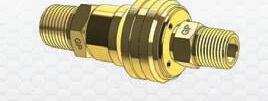
Chromed steel heavy duty Pogo Stick with 4 or 3 hole TEC-CLAMPS


A new NatRoad submission is asking for the ‘toll multiplier’ to be slashed on NSW motorwaysThe wide open spaces of Sydney’s M8 tunnel. Photo by Greg Bush
The S-Way’s high efficiency engine, transmission and Fuel Efficiency System continuously evaluates conditions boosting performance.
The fully redesigned cab transforms the driving experience so that you can work, relax and rest to always perform at your best.
And the S-Way’s uncompromised safety means that every journey is a destination that brings you back home. iveco.com.au

Transport Women Australia Limited (TWAL) and Daimler Truck Australia Pacific have announced the 2023 Driving the Difference Scholarships, with TWAL now accepting applications for the next round of scholarships.
Now in its fifth year, this Daimler Truck Australia Pacific-backed TWAL program provides a unique opportunity for women in the transport and logistics industry and those wishing to enter the field.
The scholarships enable the successful applicants to undertake any course that will advance their careers or expand their knowledge in their current position. Alternatively, it could give other women the chance to become part of the transport and logistics industry.
Applications will be accepted until October 31 and recipients will be announced on November 16.
“TWAL are excited to partner once again with Daimler Truck Australia Pacific to present the Driving the Difference scholarships for another year,” says TWAL chair Jacquelene Brotherton.
“These scholarships have enhanced participation of women in the transport and logistics industry and will continue to do so. Previous winners have been from the trucking, rail, and marine sectors, so have assisted a diverse group of women.”
Daimler Truck Australia
Pacific president and CEO, Daniel Whitehead, says the company is pleased to continue supporting the program.
“The team at Daimler Truck is proud to support the TWAL Driving the Difference scholarship
The Federal Government has announced it will deliver $22 million towards a pioneering heavy vehicle training and experimentation TAFE precinct in Wodonga, Victoria. The funding is part of the government’s $80 million investment in the Albury Wodonga Regional Projects (AWRP) scheme.
The innovative facility at Wodonga TAFE Logical Innovation Precinct will transform how heavy vehicle operators are trained, improving safe driving practices and better equipping them for the rapidly evolving transport and logistics industry.
This investment will support construction of a heavy vehicle obstacle circuit, a heavy vehicle repair and maintenance workshop, a main client building and car park, along with upgrades to external infrastructure and the installation of a state-of-the-art cyber range for simulated courses.
“Our $22 million investment in this truly trailblazing precinct will overhaul
how we build new capability in the transport and logistics industry into the future,” Federal Regional Development minister Kristy McBain says.
“This one of a kind facility will enable Wodonga TAFE to deliver specialist courses that will attract more apprentices and trainees – who will become our next generation of highly-skilled heavy vehicle operators.”
The upgraded facility will support Wodonga TAFE to expand its Heavy Vehicle Technology Program, which is expected to attract up to 1,200 students in four years and generate more than $70 million in gross regional product.
The Victorian government also backed the project, with funding of $450,000 delivered last year through Regional Development Victoria, to support Wodonga TAFE fast track the necessary planning.
Construction of the facility will commence in 2024 and is expected to be completed in 2026.
program, which is a fantastic initiative,” Whitehead adds.
“Daimler Truck is firmly committed to supporting gender diversity and equitable practices within Australian trucking and transport and we know the

industry will be the better for it.”
For more information about the Driving the Difference Scholarship program, email Jacquelene Brotherton at chair@ transportwomen.com.au or call 0417 422 319.
Transport Women Australia Limited (TWAL) has announced the signing of a Silver Partnership with long term sponsor Viva Energy Australia. The agreement was signed recently and is an ongoing commitment by both organisations to the advancement of women within the transport and logistics industry.
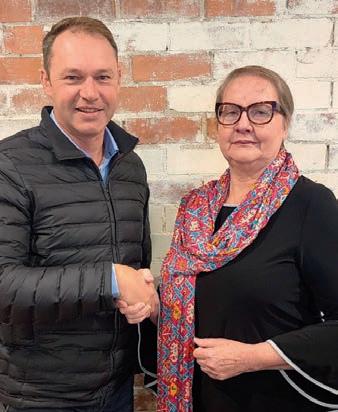
The partnership will strengthen the bond between the two groups and enable TWAL to continue to provide programs and initiatives to its members.
“This partnership with Viva continues the exciting year for TWAL,” says chair Jacquelene Brotherton.
“We are looking forward to working more closely with Nick and with the Viva team.”
Nick Lubransky, marketing manager – transport at Viva Energy Australia explains that Viva has been a sponsor and corporate member of Transport
Women Australia Limited for many years.
“This partnership will underpin their commitment to the group who have been doing great work for the industry over many years.”

Auscool logistics are Australia’s trusted refrigerated transport and storage specialists. We specialise in temperature controlled supply chain from pickup to delivery, and have an impressive fleet that can be utilised to tailor make a bespoke supply chain solution for you.

Heavy Vehicle Industry Australia has joined with leading cross-sector organisations in an appeal to the Australian Government for support in enabling an on-shore renewable diesel refining industry.

The letter to Minister for Climate Change and Energy, the Hon Chris Bowen MP points to the key role of renewable diesel in decarbonising a range of “hard-to-abate” sectors.
While readily available overseas, it is not commercially available in Australia.
“Renewable diesel is a critical transition fuel while other technologies, such as electrification and renewable hydrogen, gather pace,” the letter says.
“Access to domestically produced renewable diesel represents a
significant and immediate decarbonisation opportunity across multiple sectors, including road transport, construction, maritime, mining, rail, agriculture and forestry.
“These sectors are the bedrock of the local economy and decarbonising these industries is critical to achieving the Australian Government’s emissions reduction target of 43 per cent by 2030 and net zero emissions by 2050.”
Representing 29 per cent of Australia’s economic output, these sectors consumed 27.5 billion litres of diesel in 2019/20 yet are “hard to abate” – meaning alternative technologies to using diesel are not readily available.
Renewable diesel is an advanced biofuel made from animal fats,
vegetable oils (HVO) including used cooking oil, and agricultural waste. It is chemically identical to conventional diesel, can be used as a 100 per cent ‘drop-in’ fuel without machinery needing any modifications, and use is widely supported by Original Equipment Manufacturers.
“Renewable diesel offers an excellent, tested and readily available alternative to mineral diesel, with much as 75-95 per cent reduction in life cycle emissions compared with mineral diesel,” the letter points out.
“Renewable diesel enables equipment and machinery to live out its working life while we wait for
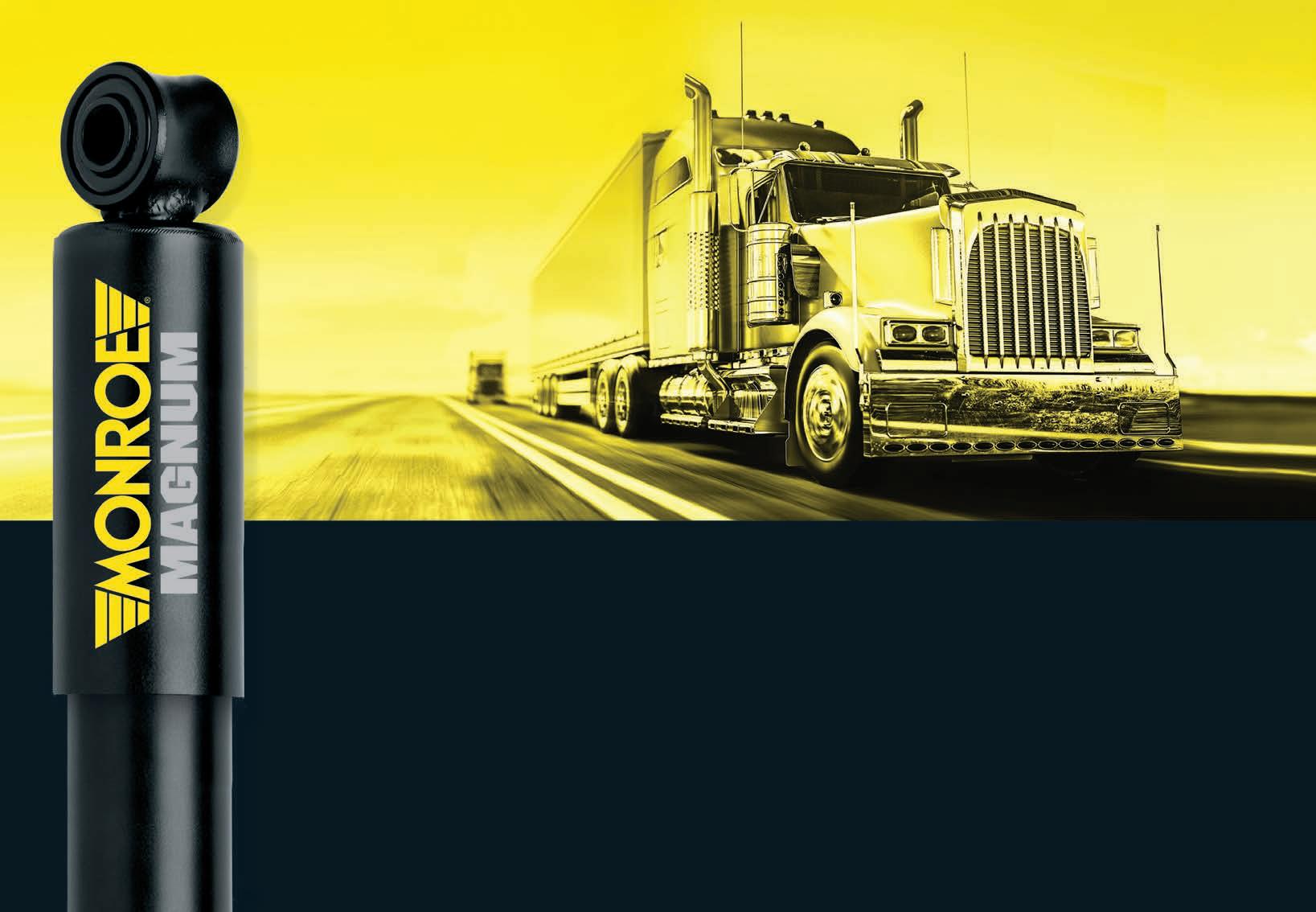
zero-emission technology to replace or where other options ultimately do not materialise.”
The letter appeals to the Australian Government to invest in the establishment and fast upscaling of a domestic renewable diesel industry.
“An integrated policy response inclusive of tax treatment, capital grants and incentives would be expected to reduce barriers inhibiting the development of an Australian renewable fuels industry.
“With the right policy settings, renewable diesel provides a viable and cost-effective decarbonisation option for hard-to-abate sectors.”
HVIA says renewable diesel represents a significant decarbonisation opportunity for multiple sectors including road transport
The Australian Government should require all railway locomotives to be fitted with flashing beacon lights, according to the Australian Trucking Association (ATA).

ATA CEO Mathew Munro says the proposal would help save the lives of truck drivers at level crossings without boom gates or flashing lights.
“Trucks are longer than cars and take longer to get over level crossings. Truck drivers need to be able to spot trains as early as possible, which means we need to upgrade train lighting,” Munro says.

“CBH Group has already announced that it will install beacon lights on all their trains in regional Western Australia to enhance visibility. It’s a welcome commitment, but we need to see it country-wide.

“The ATA has also urged the Government to press ahead with implementing the National Level Crossing Safety Strategy, and particularly low-cost, high-impact initiatives at passive level crossings,” he said.
CBH Group’s LED beacon lights installation in Western Australia follows the successful completion of trials conducted with CBH’s rail service provider, Aurizon. Three trials were conducted to determine the safest and most effective configuration of LED beacon lights on the locomotives.
The new LED beacon lights will sit on the headboard of the narrow-gauge and standard-gauge locomotives, which will enhance the visibility of the train, without compromising the safety of road users or train drivers.
CBH will begin installing the panels from October 1, in line with scheduled maintenance and change out programs carried out by Aurizon. The roll-out is expected to take between 12 and 18 months.
CBH chief operating officer Mick Daw says the recently purchased narrow-gauge and standard-gauge locomotives, from Wabtec and Progress Rail respectively, will meet these new safety specifications.
“Safety is a priority at CBH and we are pleased to be able to improve the visibility of our locomotives in the regional communities where we operate,” Daw says.
The South Australian government is enforcing a full ban on semi-trailers passing through popular tourist town Hahndorf’s Main Street, with a plan to redirect heavy vehicles starting to roll out.
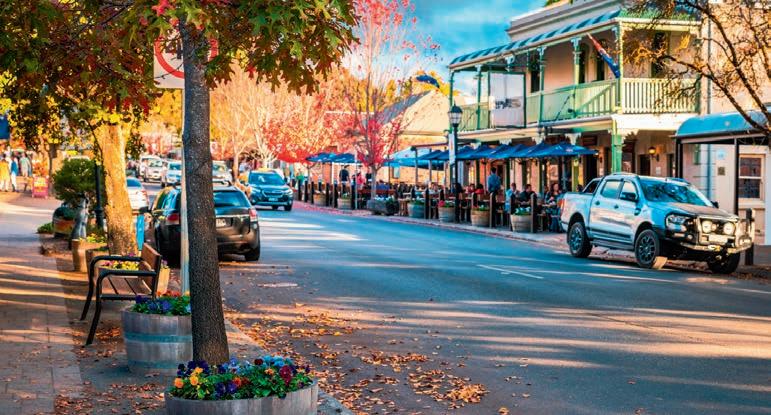

Set to come into action on November 1, this will see all non-local semi-trailers, and pig and dog trailers over 15 metres long being sent along alternative routes.
This follows Premier Peter Malinauskas’ 2022 announcement of upgrades to interchanges at Verdun and Mount Barker, with trucks being sent down the now improved River Road.
Hahndorf sees as many as 100,000 tourists visiting each year, with numbers from Tourism Research Australia estimating that 89 per cent of people who holiday to Adelaide also stop at Hahndorf, the oldest surviving Germanic settlement in Australia.
Locals have long been advocating for heavy vehicles to stop passing through one of the most foot traffic
heavy regions in Australia.

Popular tourist attraction Beerenberg Farm, full of strawberry fields, was set to be heavily impacted by previously proposed freeway projects, so the new plan has been more than welcomed by locals.
The SA government is installing ‘no trucks over 15m in length’ signs to alert potential incoming drivers to reroute. Drivers delivering to Main



Street will be exempted from the ban, as well as any that can’t reach their destination through any other route.





Trucks are being redirected down River Road and Strathalbyn Road, passing through Kangaroo Reef Road, Sawmill Gully Road and Fairview Road. All these roads will see intersection and junction improvements (at Strathalbyn Road/
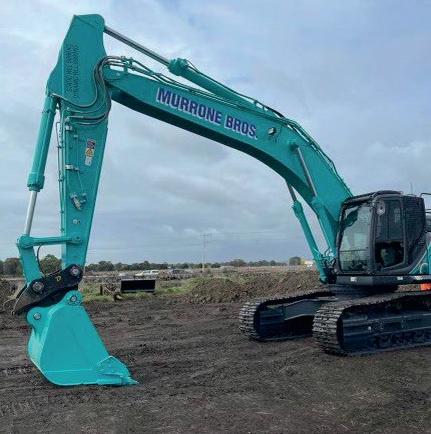
River Road and Mount Barker Road/ River Road), with tree trimming and shoulder sealing also planned.







In a statement announcing the semi-trailer ban, SA transport minister Tom Koutsantonis details the effect it will have on the community of Hahndorf.
“We agree that trucks with logs and livestock shouldn’t be using this town hub as a thoroughfare,” Koutsantonis says.
“We have devised an alternative solution that can be delivered at a significantly lower cost, with no disruptive property acquisitions and no impact on Paechtown or the iconic Beerenberg Farm.

“While there will always be a need for some trucks to use the Main Street for local deliveries, this ban will get all non-local large heavy vehicles off the town’s central strip.


“The campaign for a bypass has been a divisive one in the local community, and we are confident that this simple, elegant solution will satisfy all sides.”

Semi-trailers will need to seek alternate routes other than travelling through the
Comparing fuel cards can be confusing, but Canstar Blue has made it easy. They compared popular fuel card options across eight different categories:
•Overall Satisfaction
•Account Management
•Customer Service
•Petrol Station Facilities
•Loyalty Program

•Fees & Charges
•Number of Petrol Stations
•Fuel Discounts
Shell Card received the maximum 5-star rating in every category. No wonder it’s been named Fuel Card of the Year.
Apply for a Shell Card today and drive your road transport business towards a better future. It’s an easy decision.
















Congratulations. You made a very wise business decision by choosing an Isuzu truck. Now keep that smart approach going and protect your investment by having it serviced at an Isuzu-approved workshop. Our highly trained technicians use genuine parts designed specifically to help your truck deliver its very best performance. You’ll also protect your future re-sale value. Plus, you’ll have the peace of mind knowing that you’re helping to meet your chain of responsibility requirements.
To find your nearest Isuzu Service Centre, visit isuzu.com.au Care. It’s what we do.




























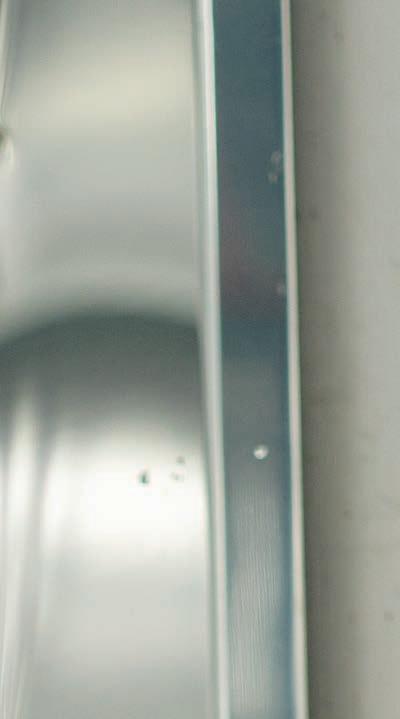
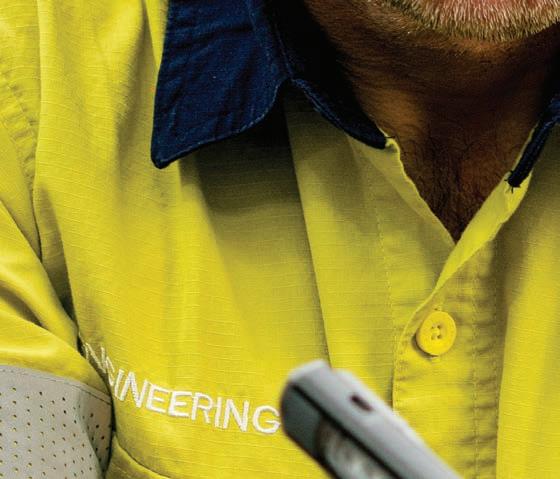


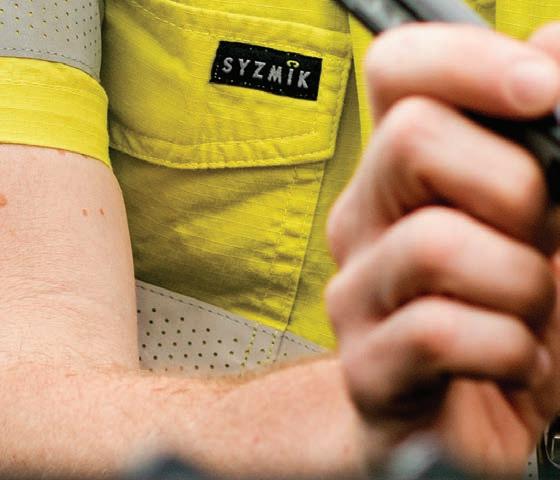
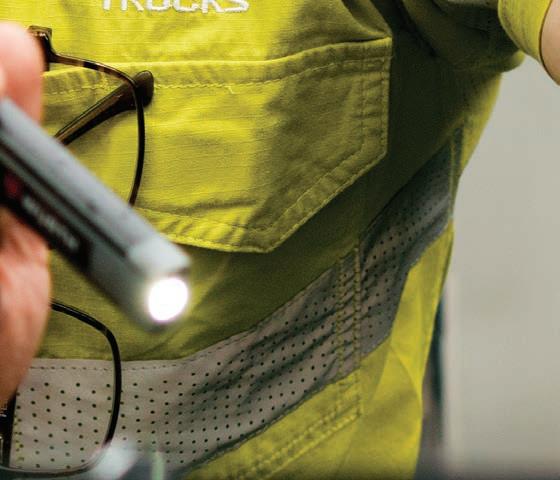
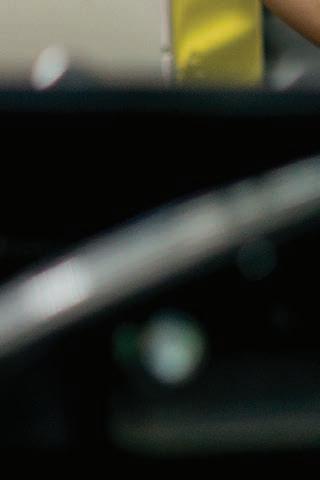







































































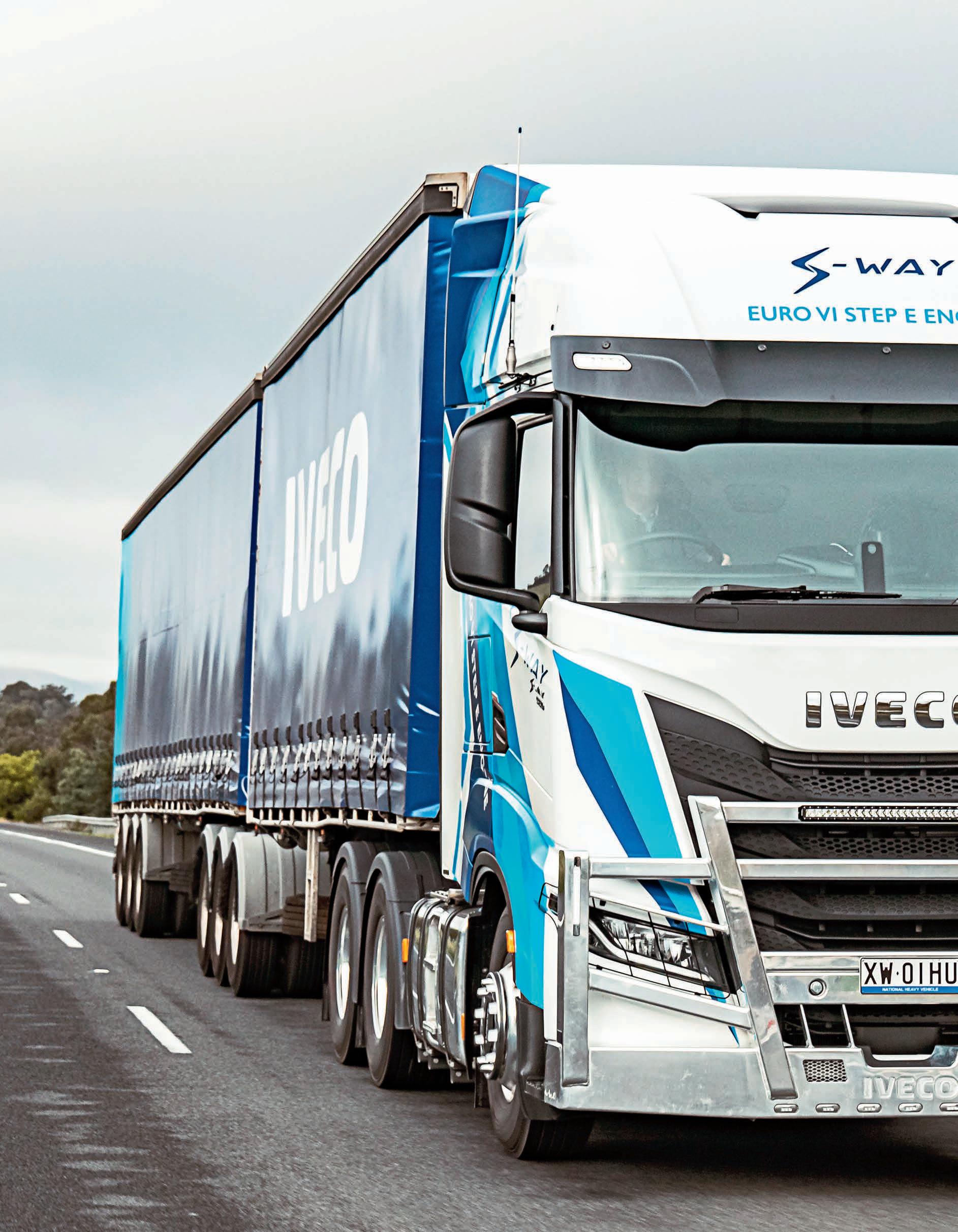
Expectations, assumptions, presumptions, predictions. Whatever, they’re all fraught with danger and let’s face it, we’ve all been there.
Sometimes, the thing you expect to be wonderful can turn out to be something not quite so captivating. Not necessarily woeful but not altogether appealing either. Simply, not up to expectations.
Other times, when you’re not overly excited or enthralled by the thought of spending time with something or other, the experience can surprise for all the right reasons. Hurtling hard and fast into those ‘other times’ was a recent run in Iveco’s new S-Way.
Still, it’s easy to admit that expectations weren’t bubbling at all brightly in the days before taking an S-Way B-double combination on a day-long drive down the Hume and back.
In defence though, the negative vibe wasn’t unwarranted. Iveco experiences over several decades hadn’t been particularly kind up to that point, going way back to the lameness of early models like EuroStar and EuroTech and reaching all the way to the recently retired X-Way. Expectations, even hopes, have almost always been shown to be greater than realities and historically, Iveco Australia’s heavy-duty sales figures tell a story of mediocre acceptance in a market bristling with high quality competitors.
Now, of course, there’s S-Way but with history barking in the background, early indicators weren’t doing much to light the fires of hope and renewal for Iveco’s heavy-duty future. In fact, on a grey March day at the Australian Automotive Research Centre’s Anglesea (Vic) proving ground, the official launch and first drive of S-Way models didn’t do much at all to signal an upward shift in Iveco’s heavy-duty prospects.
Sure, company insiders were upbeat and Iveco Australia chief Michael May, buoyant in defining a new era for the company since securing the $95 million sale of the historic Dandenong (Vic) production plant, announced S-Way as the motivation to “… reignite our network and our customers.” However, Michael and his executive team didn’t stay long, apparently committed to being somewhere else while out on Anglesea’s familiar circuits, various S-Way configurations which had notched up reasonable mileage on shake-down duty, did their obligatory laps as invited media took turns sampling the new model’s manners. All routine and all predictably normal for a media drive day but hardly the stuff to reignite expectations of Iveco moving to a higher plane on the heavy-duty table.
Worse, a close look at a couple of early production models on static display prompted thoughts that Iveco Australia will need to keep an owlish eye on the build quality and paintwork of trucks emerging
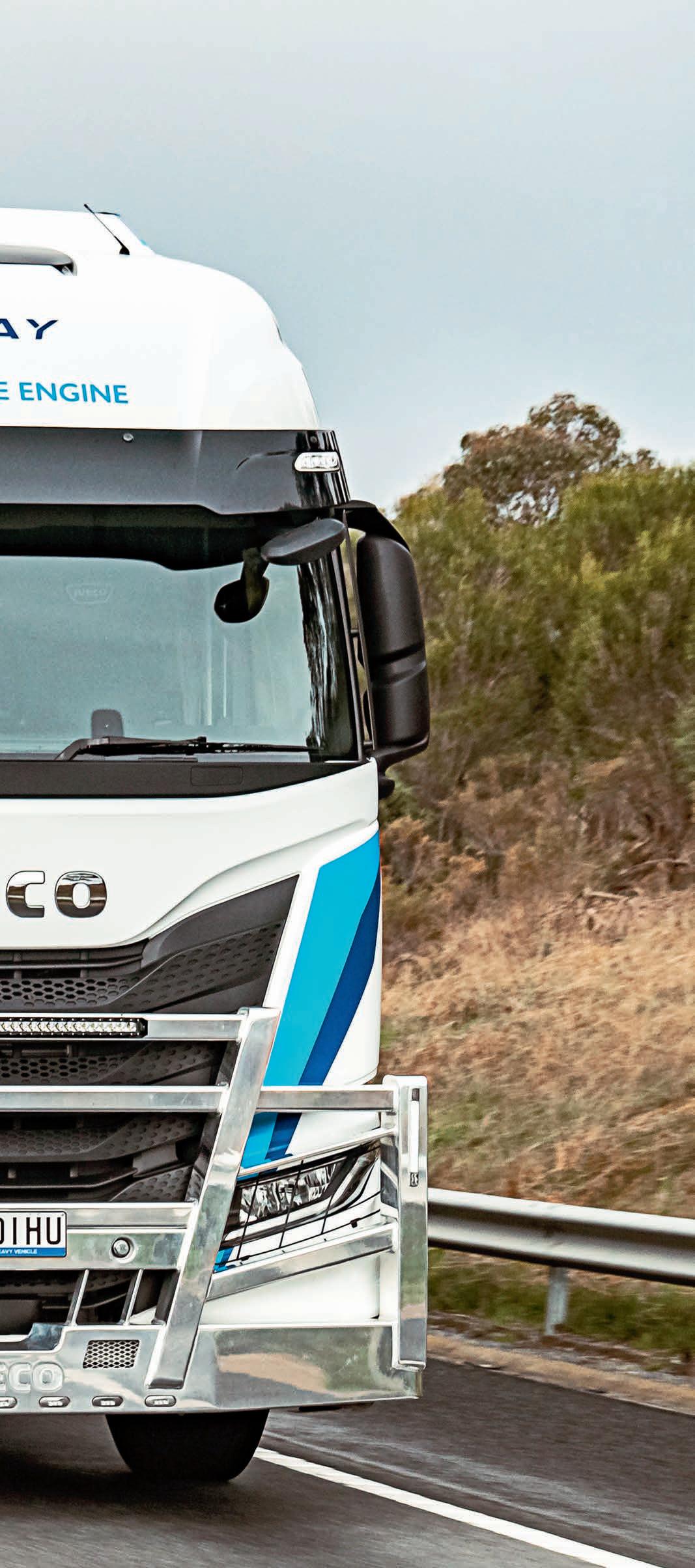
It won’t set the heavy-duty truck market alight, nor is it likely to cause sleepless nights for its continental competitors but make no mistake, Iveco’s S-Way flagship is an all-round more appealing product than anything the European conglomerate has ever before offered the Australian market. It has, quite simply, the ability to surprise and impress in equal measure. Steve Brooks reports
Above: Iveco is pushing S-Way’s compliance with Europe’s Euro VI ‘Step E’ emissions regulation. It probably won’t mean much to Australian operators but modest fuel capacity of 1010 litres probably will. Even so, road test fuel consumption was most impressive
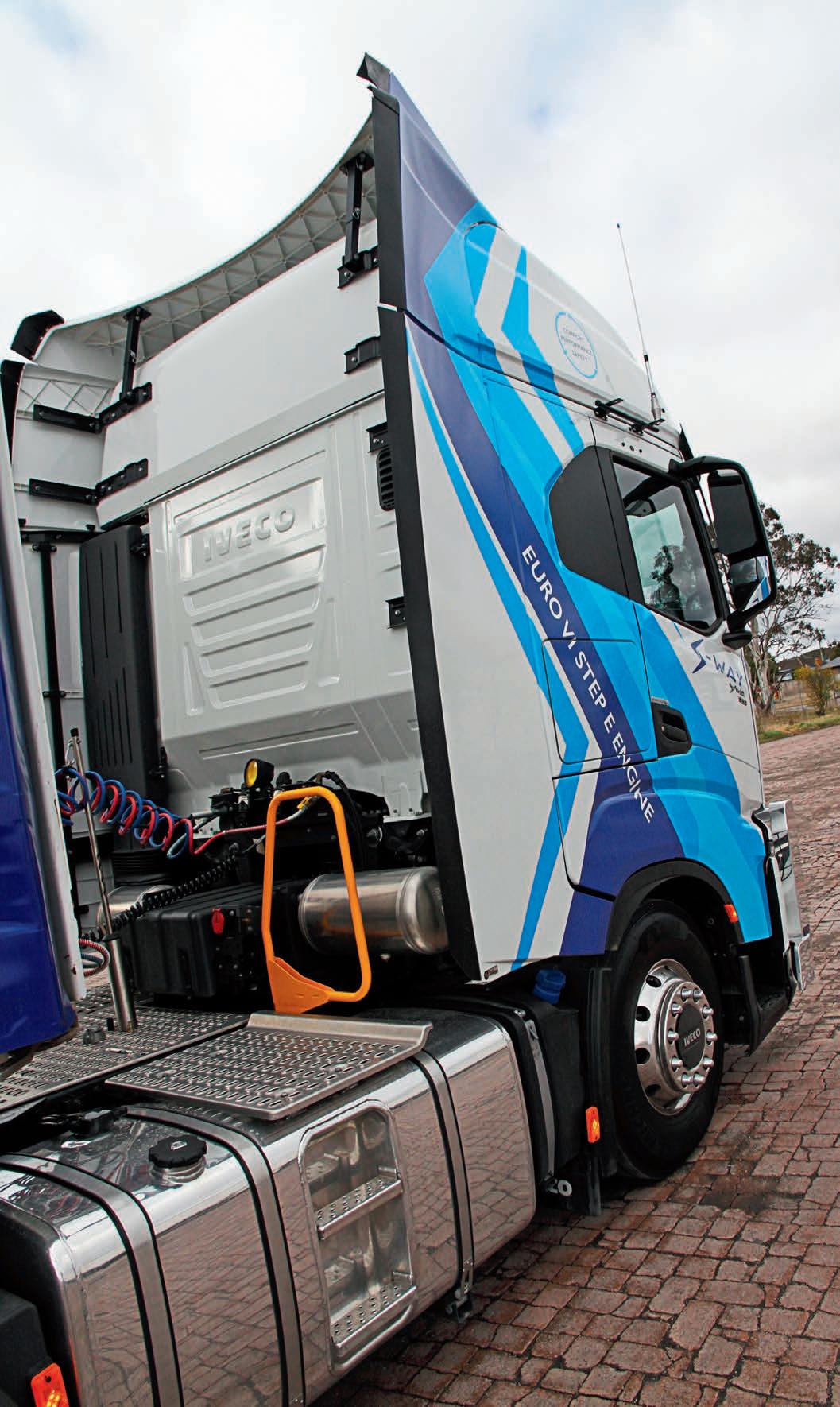
Top right: Flagship of the S-Way range, the high-roof AS is exceptionally well appointed and marks a peak in Iveco’s heavyduty evolution
from Iveco’s Madrid (Spain) production plant.
So, fast forward five months or so to a mid-week morning at Iveco’s Huntingwood dealership on Sydney’s western rim and as already mentioned, expectations weren’t particularly high. Sure, the dealership had the demo truck and its B-double set spic ’n span (which was in itself a notable improvement on some earlier experiences) with several Iveco operatives on hand to explain the flagship AS (Active Space) model’s finer features, not least a plethora of advanced telematics functions.
But of course, any estimation of a truck’s performance and operational traits comes down to time on the road and here’s the thing; just an hour or so after steering the combination out of Huntingwood and mixing with the motoring masses before striking down the Hume to Goulburn, there came the earnest yet genuinely unexpected realisation that this unit was, without question or hesitation, the most impressive and subsequently surprising Iveco truck I’ve ever driven. Bar none!

Steppin’ up
True, a day drive of barely 400km doesn’t tell the full story of any truck. Overall, such evaluations are simply a snapshot but they do, at the very least, provide an indication of a model’s
abilities in real world conditions and in this case, S-Way did everything right while equally highlighting vital improvements in fit and finish. In fact, concerns about build quality generated by static display units at Anglesea several months earlier simply weren’t applicable in what was an exceptionally well presented test truck. And the hope, of course, is that all S-Way deliveries will be to the same standard.
Obviously enough, the high-roof AS model sits at the top of the S-Way range and as we reported some months back, ‘S-Way’s most apparent feature is unquestionably the redesigned cab with its striking, almost smiling, grille and new panel treatments. It is, in effect, a reworked design over an existing cab structure but further ahead, according to sources within Iveco, an entirely new cab and model range are under development in preparation for a European debut in two to three years.
‘Yet while S-Way may be the final evolution of Iveco’s current heavy-duty lineage, it is certainly not without the modern updates which take it a step above its X-Way predecessor.’ Way above, in fact.
There was, to put it plainly, a quality about the S-Way test truck well beyond its predecessors. Sure, most linehaul drivers would probably appreciate a bigger bunk but that aside and with the advantage of a lower floor height, S-Way’s AS shed contains all the essential ingredients of a spacious, modern linehaul cab: Tall standing room, excellent seating for driver and passenger, extensive overhead and external locker space, good all-round vision, neatly arranged controls and switchgear, and driver niceties such as twin 50 litre fridges (one a cool box, the other a fridge\freezer) and a comprehensive multi-media unit based on a seven-inch LCD screen on a central fascia. What’s more, in place of a key, ignition is now controlled by a stop\start button
on a neater and more functional dash layout while the driver sits behind a new multi-function steering wheel which provides finger-tip control of many functions.
In short, there’s a lot to like and the standard features list is easily on par with its continental contemporaries, including a typically European swag of advanced safety functions along with such modern-day developments as GPS predictive drive, adaptive cruise control, LED headlights with cornering fog lights and a top-shelf climate control system.
Still, in many of the control systems and functions, S-Way also retains Iveco’s unique form of logic. It takes considerable time to forge familiarity with the operation of some systems and in a markedly expanded telematics program, it would take far more than one day behind the wheel to assess the system’s operational attributes. As Iveco rightly insists though, telematics play an increasingly powerful role in the operation and administration of modern haulage fleets and as company insiders assert, S-Way’s telematics are as comprehensive as any in the market.

However, the thing that binds all S-Way’s suite of treats together are the levels of detail and an overall standard of finish which, at least in this instance, appear significantly better than previous models. Again, it’s to be hoped this is the rule rather

“This latest evolution of the long-serving Cursor 13 may well have the potential to subdue the engine’s somewhat chequered reputation.”
Top: A completely revised interior comes with many worthwhile features. Cab comfort was firstrate in the spacious high-roof AS top-of-the-line model. Even so, some functions seem quirky and familiarity takes time
Right: S-Way certainly doesn’t lack competition and Iveco won’t find it easy making up ground on quality competition
than the exception. For Iveco’s heavy-duty aspirations, much depends on it.
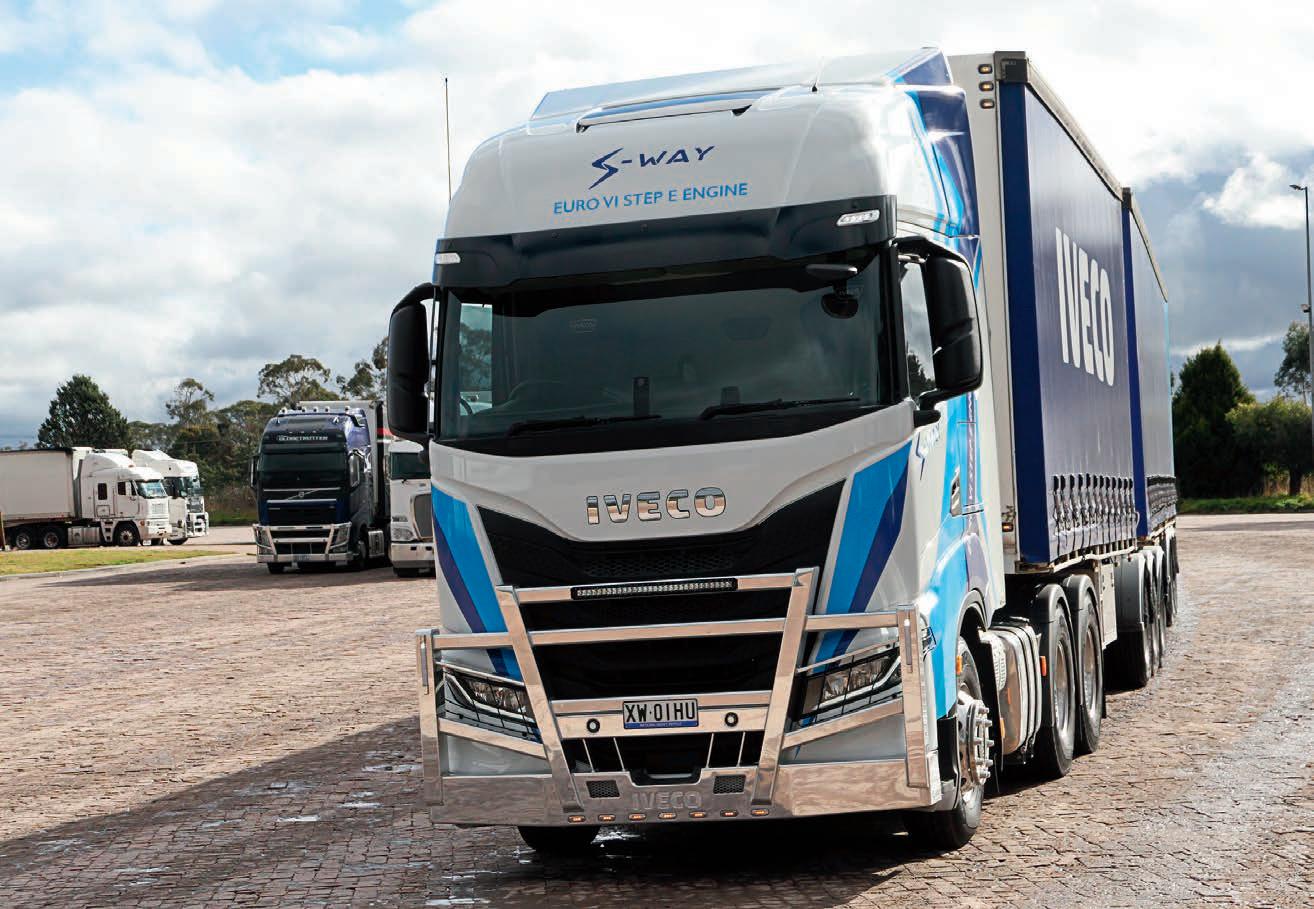


Notably, as the wordage on the cab highlighted, Iveco is also making a major point of its Cursor engines’ compliance with what’s known as the Euro 6 ‘Step E’ emissions requirement. Simply explained, ‘Step E’ includes cold starts in the emissions measurement process, making it Europe’s toughest standard for diesel engines, but why Iveco Australia would choose to promote this somewhat obscure point so vividly is even more obscure. More importantly perhaps, Iveco points out this revised crop of Cursors is fully compatible with the latest generation of biofuels.
Similarly, as the company explained at Anglesea earlier in the year, all Cursor engines in the S-Way range – 9, 11 and 13 litre – use its patented Hi-eSCR emissions control technology. With no EGR input, Hi-eSCR is described as a single after-treatment system featuring a passive DPF (diesel particulate filter) which does not require driver intervention for DPF regeneration.
“Yet for no one reason but rather a collection of evolutionary refinements, Iveco’s S-Way flagship was impressively surprising.”
As for AdBlue consumption in the SCR-only system, Iveco product manager Emilio Foieri reports, “Between seven and eight percent of fuel consumption.”
Fortunately, diesel consumption of the B-double demonstrator proved to be exceptionally good.
Road run
With the premium AS flagship model rated to S-Way’s maximum gross combination mass (GCM) of 70 tonnes, power obviously comes from the biggest engine in the range, the 12.9 litre Cursor 13 offered in two ratings – a standard setting of 530hp (387kW) at 1700rpm with 2400Nm (1770lb-ft) of torque at 950rpm, and an optional 550hp (410kW) version with peak power at 1600rpm and 2500Nm (1844lb-ft) of torque at 1000rpm.
In prime mover layout, there are four wheelbases from 3200 to 3300, 3500 and 3650mm, with the test unit built on the shortest length.
For B-double duties, the test truck ran the higher engine rating coupled with the model’s standard shifter, the supremely smooth and highly intuitive ZF Hi-Tronix 16-speeder. In the AS, the automated box uses a direct-drive top gear running into a standard rear axle ratio of 3.09:1 (a 3.4:1 ratio is also available) to deliver 100km/h at the engine’s peak power point of 1600rpm.
Meantime, with the front and rear of the cab mounted on airbags and underneath, a suspension system with parabolic leaf springs up front and an
eight-bag electronically controlled air suspension at the rear, S-Way’s ride and road manners were exceptionally good. In fact, overall handling, road manners and cab comfort during the daylong exercise were at the very least equal to the best in the business and the first indication that the S-Way AS offers something special in Iveco’s linehaul lineage.
In performance terms, this latest evolution of the long-serving Cursor 13 may well have the potential to subdue the engine’s somewhat checkered reputation with some sections of the Australian market. Certainly in this evaluation, and with the obvious support of a transmission completely in tune with the engine’s traits and abilities, Cursor was both impressively responsive and when it counted most, surprisingly gritty.
On the deceptive drag up Skyline, for instance, the combination comfortably held 12th gear with the tacho dropping no lower than 1500rpm.
Admittedly, cynics might suggest the test unit’s gross weight of 55 tonnes was perhaps on the light side for a B-double but then again, it’d be just as easy to suggest that most linehaul B-doubles run at weights considerably less than maximum GCM anyway.
Whatever the cynics might say though, S-Way’s fuel return of 1.95km/litre (5.5mpg) was stunningly good. It’s worth noting though, fuel capacity for linehaul duties is marginal at 1010 litres (630 litres right tank, 380 litres left tank) with an 80 litre AdBlue tank.
Yet for no one reason but rather, a collection of evolutionary refinements, Iveco’s S-Way flagship was impressively surprising. Or maybe, surprisingly impressive. Either way, this was a truck that blew perceptions and expectations out the exhaust.
Moreover, there’s a lot more to S-Way than the details mentioned here. Like, standard auxiliary braking in all S-Way models is a three-stage engine brake but Cursor 13 variants have the added bonus of ZF’s highly effective Intarder hydraulic retarder as standard equipment.
There’s one function, however, unlikely to win too many accolades from drivers. It’s called Eco-Switch, allowing a swap from the transmission’s normal fully automated operation to an ‘Eco-Fleet’ manual mode for 60 seconds if, as Iveco explains, ‘traffic or road conditions temporarily require the driver to manually override the auto mode.’ But Eco-Fleet also cuts engine power and torque, so it’s hard to see most drivers willingly making the swap.
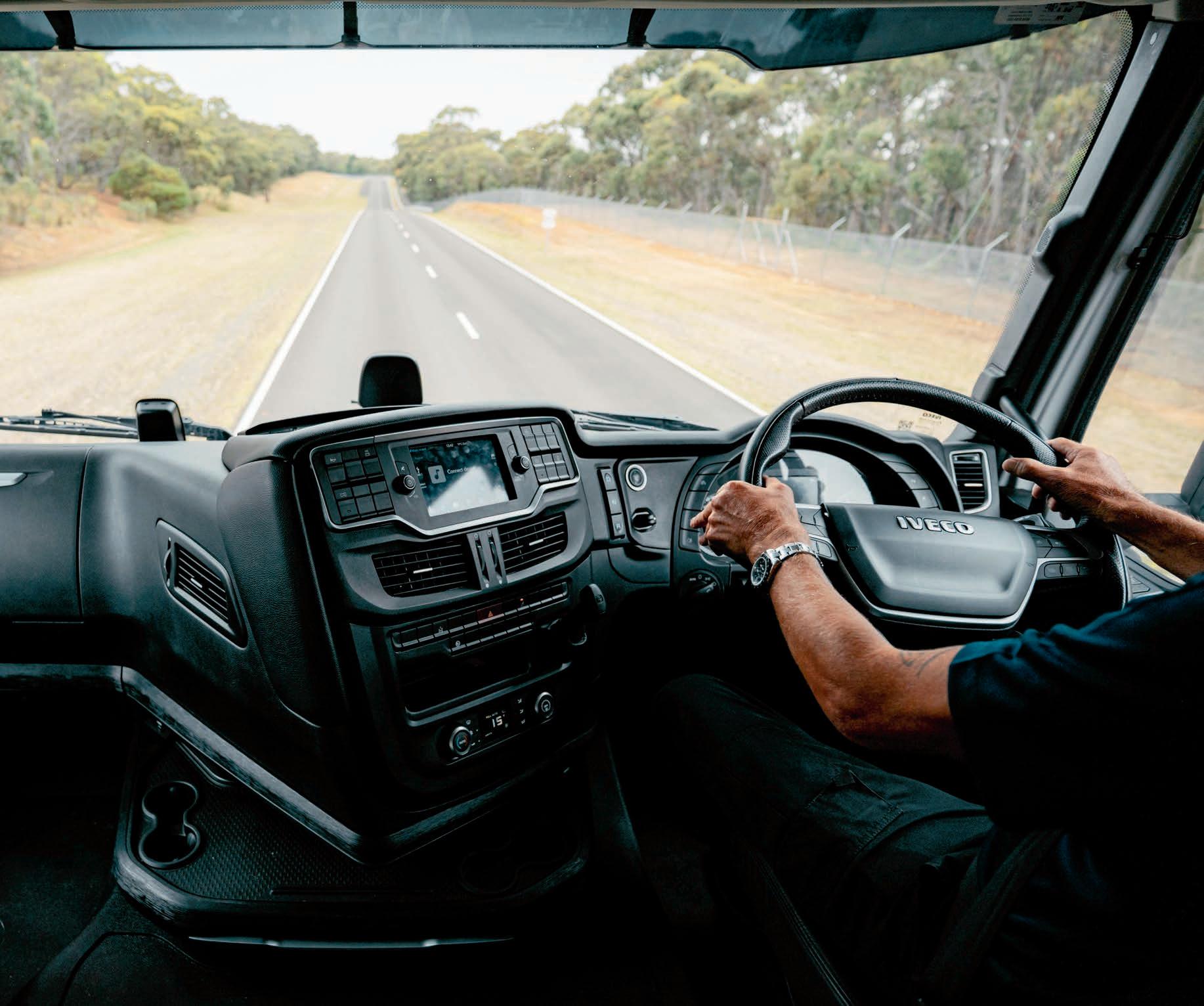
All up, S-Way won’t be all things to all people, a fact acknowledged by Iveco insiders. Asked, for example, if the absence of a bigger bore engine than Cursor 13 is a drawback to Iveco’s bid for stronger heavy-duty sales figures, a forthright Michael May said simply, “Sure, a 15 or 16 litre would be nice but we can only concentrate on what we have.”
True, but what S-Way gives Iveco more than anything else is a truck with evolution on its side and accordingly, the distinct potential to build a better business.
At the National Heavy Vehicle Regulator (NHVR), our number one priority is to protect and support the safety of not only heavy vehicle drivers and operators, but all road users.
With more than one million registered heavy vehicle units in Australia, every road user will likely come across some type of truck on their journey. This is why the NHVR is delivering road safety campaigns, that aim to educate light vehicle drivers on how to drive safely around a truck.
I’m excited to be able to say we have well and truly launched the second phase of our We Need Space campaign, aptly titled We All Need Space.
We All Need Space is about reminding light vehicle drivers to give trucks the space they need on Australian roads so that both they, and the truck driver, reach their destination safely. The campaign provides simple tips, including how to stay out of a truck’s blind spot and how to overtake a truck safely.
This latest phase has featured the faces of celebrities to help spread the word that whether you’re a comedian, musician, athlete, truck driver, car
motorist, cyclist, or pedestrian, we all need space to stay safe on the roads.
We kicked off this second phase by partnering with viral Aussie comedian and social media personality, Jimmy Rees. Jimmy shared three videos in his renowned point of view style, ranging from quips about caravanners, the perils of road tripping with kids, and the reality of passing a driver’s licence test.
Using humour to resonate with viewers, Jimmy addresses how to navigate a truck’s blind spots, keeping the lanes beside a turning truck free, and how to safely overtake a truck. Specifically, for caravanners, the video explains the importance of leaving truck rest stops free and using the UHF radio Channel 40 to let truck drivers know if a caravanner plans to overtake, or vice versa.
The second face of the campaign was popular outback truckie from Katanning in Western Australia, Glenn ‘Yogi’ Kendall. Yogi helped us share what truck drivers really want motorists to know about sharing the road safely, with the message particularly compelling coming from an experienced truckie’s perspective.
MICHELLE TAYLER is the NHVR executive director, corporate affairs
We then welcomed country music star, James Blundell, on board. After touring for the past 35 years, James knows firsthand what it’s like to spend hours at a time on the road and has experienced his fair share of close calls.
To convey the message of road safety, James put a new spin on his smash hit ‘Way Out West.’ New lyrics for the catchy tune emphasise the importance of giving trucks the space they need, so all drivers can share the road safely.
ABOVE RIGHT: Country music star James Blundell is keen to convey the message of road safety
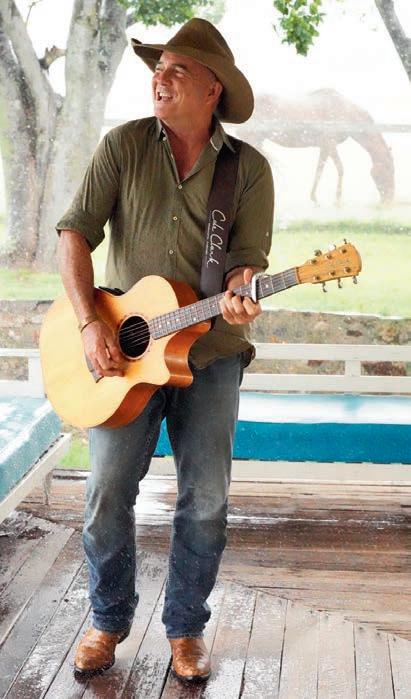
BELOW: Casuarina ‘CJ’ Smith has joined the We All Need Space campaign
Second-generation truckie from South Australia, Casuarina ‘CJ’ Smith, has also joined the We All Need Space campaign. Tapping into her large online following, CJ is a voice for her fellow truck drivers who spend every day on the road and need space to complete their journey safely.
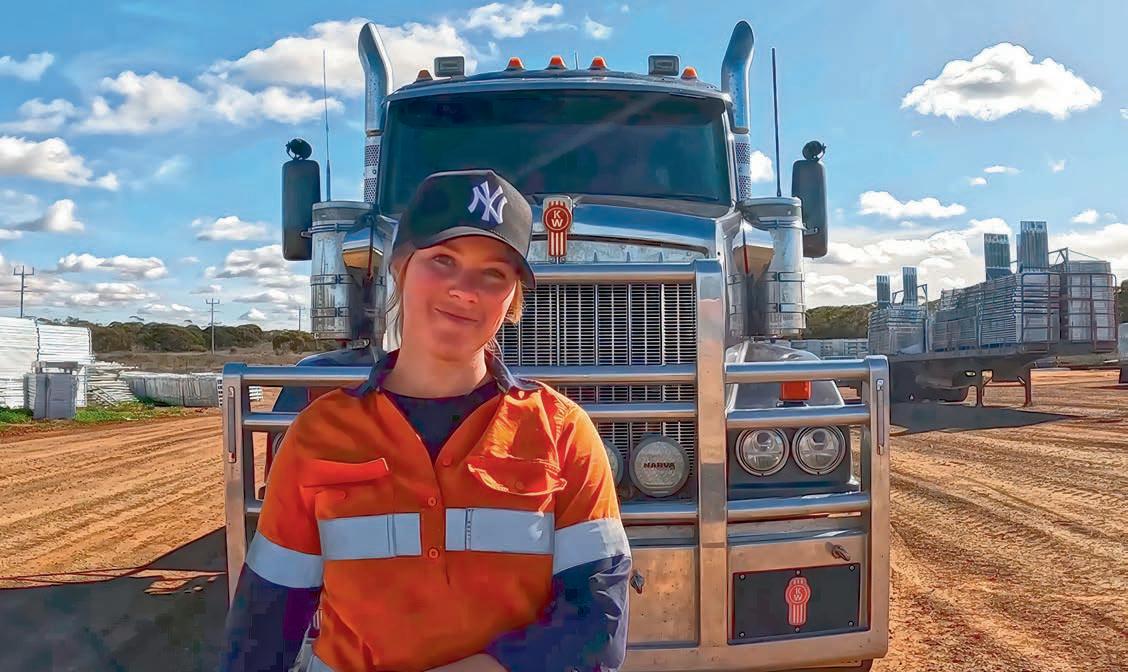
Recently, we were excited to launch with former footy legend Sam Thaiday. As a personality both on and off the field, Sam is a strong voice for road safety and is using his large following to share his top tips for driving safely around trucks.
We are thrilled to have these personalities lend their voice, to such an important safety initiative.
The NHVR places a strong focus on education not just for industry, but for all road users – and our We All Need Space campaign is reflective of this.
Statistics show around 70 per cent of serious incidents involving both heavy and light vehicles are the fault of the light vehicle, proving that this education is needed to help save lives on Australian roads.
There have already been 87 fatal crashes involving a heavy vehicle, tragically resulting in 109 deaths, in Australia up to June this year. These aren’t just numbers – these are people who haven’t made it home to their loved ones.
At the NHVR we are striving to reduce this rising road toll, and our campaigns are taking us one step closer to achieving this.
For more information, visit www.nhvr.gov.au/weneedspace
“Statistics show around 70 per cent of serious incidents … are the fault of the light vehicle.”
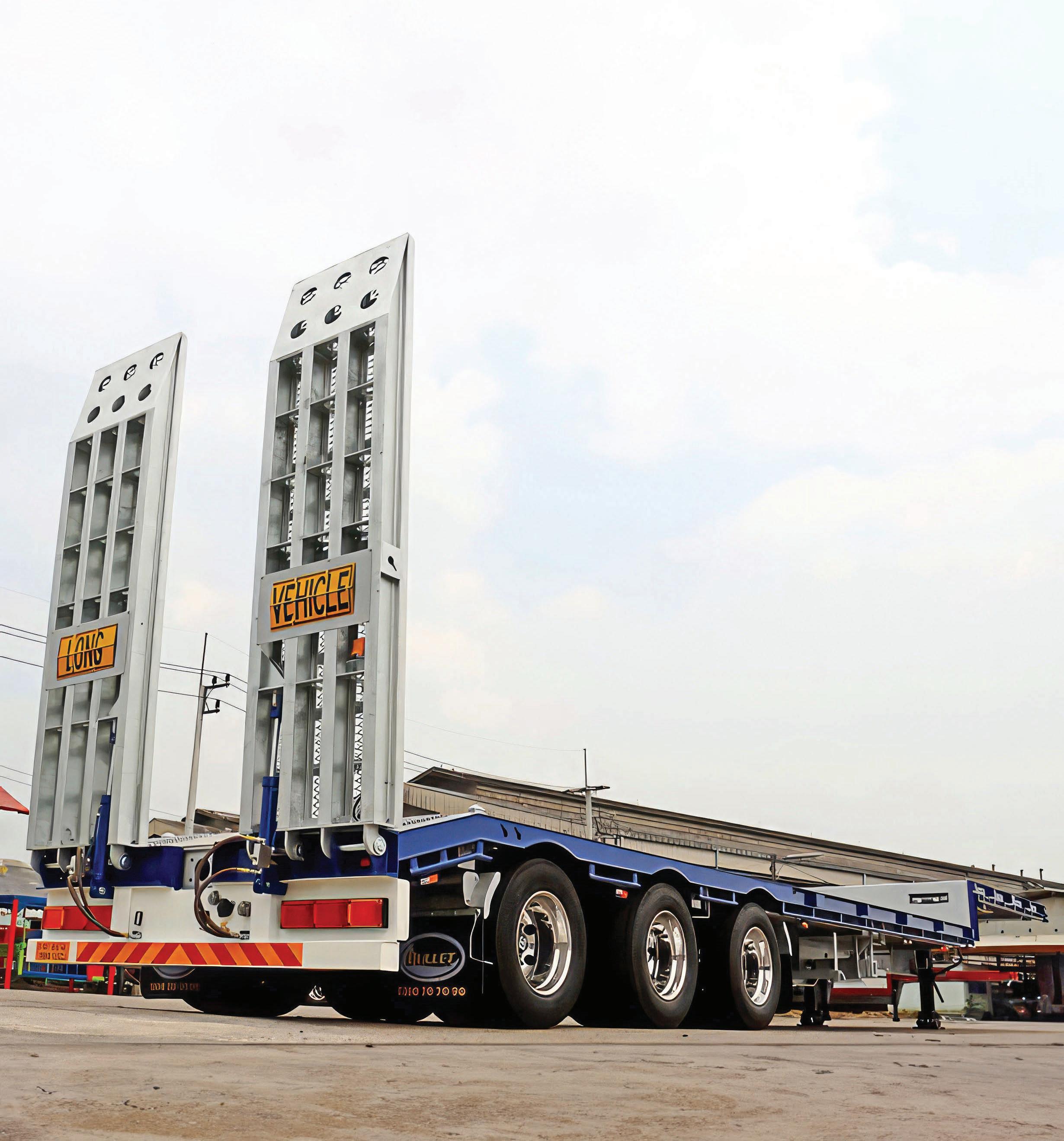
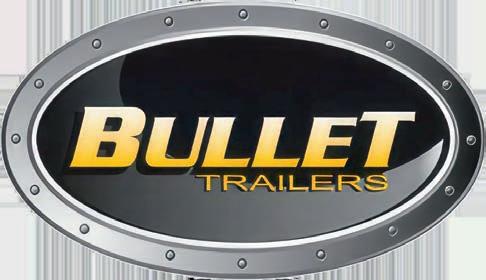
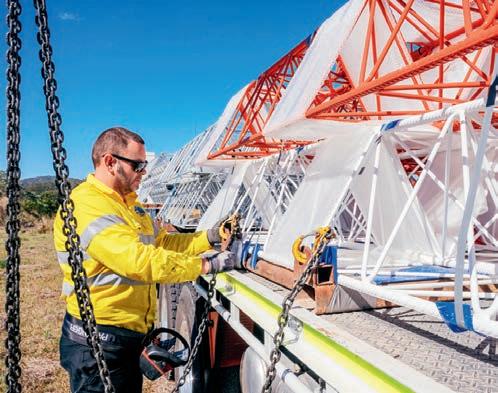


“We’ve got a hooter of a crane on this truck, it turns heads and makes it unique,” says Chris Ratcliff from Australian Radio Towers (ART). “Wherever it’s parked, people will come noticing.”
It’s quite the statement, but that’s exactly what the ART team wanted in their beefy new Isuzu FYJ 300-350 twin steer truck, outfitted with hooter in question, a high-powered PK 14402EH Palfinger crane, which assists to construct towers that can span up to 160 metres high.
Paired with a 6.8-metre-long twin-axle dog trailer, which just happens to be the exact same height as the FYJ’s tray which allows for better load sharing, it makes for an impressive rig.
As the name suggests, Australian Radio Towers is in the business of assembling radio
and communications towers. These massive towers are used in environmental monitoring systems, meteorological studies, the renewable energy sector, and of course, communications for industries such as mining, defence and emergency services.
Before the pandemic, ART focused on temporary radio towers at music festivals and events—that industry has shifted not only with reduction of events but also the introduction of permanent radio towers for mobile and Wi-Fi communications.
However, this is only a part of the ART offering, and the point of difference lies in the team’s end-to-end expertise: from drafting and design of a wide range of products such as masts and towers, stand-alone power units and rapid-deploy solutions, through to their manufacture and supply, transport and installation.
Home base is in Murwillumbah in Northern New South Wales, with a few strategically placed depots across the country and a warehouse in Victoria. The business has customers all over the land and across the sea into the Pacific Islands, with their specialty lying in remote location deployment and installation.
“Australian Radio Towers has grown from a small company that had six or seven people working for it to what it is today with over 140 people on staff,” he said.
“We’re unique in our game, providing a turnkey solution for guide masts and towers that covers design, manufacture, supply, transport and install… there’s not too many companies that will do all of that in-house.”
Big growth can come with big growing pains, and this extended to the transportation fleet, resulting in their recent upgrade to the Isuzu FYJ 300-350.
An ageing crane truck purchased in 2017 had put in the hard yards but was ready for retirement, Chris details.

They turned to the team at Brisbane Isuzu to organise a fresh set of wheels and struck up a strong relationship with sales representative Julian Walker from the Archerfield dealership.
“We went with the FYJ twin steer and bogie axle, with a tandem trailer because that setup suits what we do,” Chris said.
“It gives the option to take the truck to site, or we can take the truck and trailer and leave the trailer out on the road if we need to, it just
“The setup can be a bit more awkward to get around tight corners, but it gives us more carrying capacity and with the front mounted crane, allows load sharing over the twin axles at the front.
“One of the other reasons that we decided on this model was that we were advised by our mechanics to avoid AdBlue and burn cycle engines,” he continued.
gives us versatility.”
Chris says they selected the FYJ twin steer model specifically for its weight bearing and load sharing advantages. With its twin steer bogey axles and Isuzu-engineered outriggers it provides maximum support for the crane, which needs to lift five tons or more at close range and just under a tonne at a range of 17 metres.
Featuring a Gross Vehicle Mass of 30,000 kilograms and a hefty Gross Combined Mass of 45,000 kilograms, the FYJ 300-350 8x4 is more than capable of carrying the powerful Palfinger crane behind the cab, plus a load on the tray and dog trailer safely.
It actually offers more grunt than ART really need but happens to be the perfect length when combined with their trailer for coming under a very specific 19-metre length restriction.
“We carry equipment that takes up a lot of space, but not a lot of weight,” Chris explained.
“As you can imagine, a radio tower takes up a fair bit of room, but it doesn’t have a lot of weight because it’s got to be streamlined and efficient to be able to go up to 160 metres in the air.
“This truck has DOC which tends to be more reliable… it’s not going to slow down on the side of the road and hold us up.”
This refers to the FYJ’s Euro V compliant emissions control system, which features cooled EGR with exhaust Diesel Oxidation Catalyst (DOC) eliminating the need for other fuel additives.
The team have been flat chat with their new crane truck and trailer combination and are finding both productivity gains and the capability to take on more jobs than ever before.
The truck currently has a weekly run from North Queensland to the bottom end of New South Wales, with additional jobs located as far as Mount Walsh near Rockhampton in Queensland.
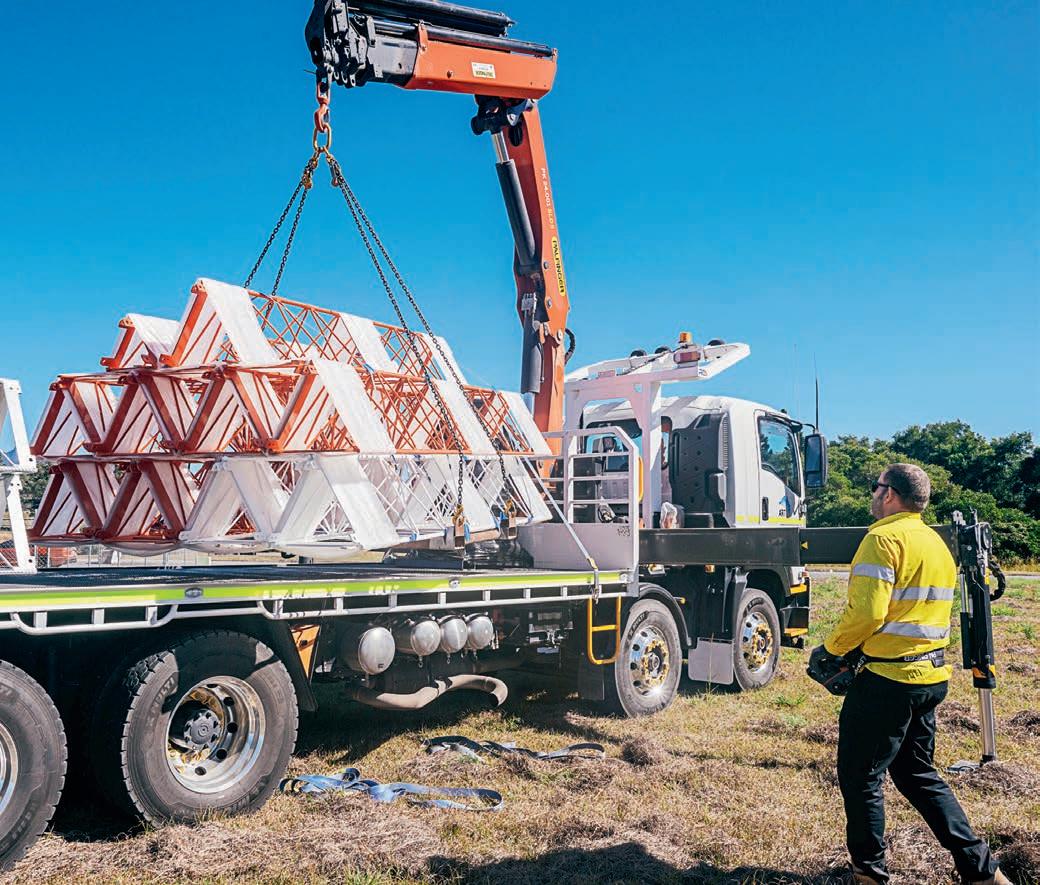

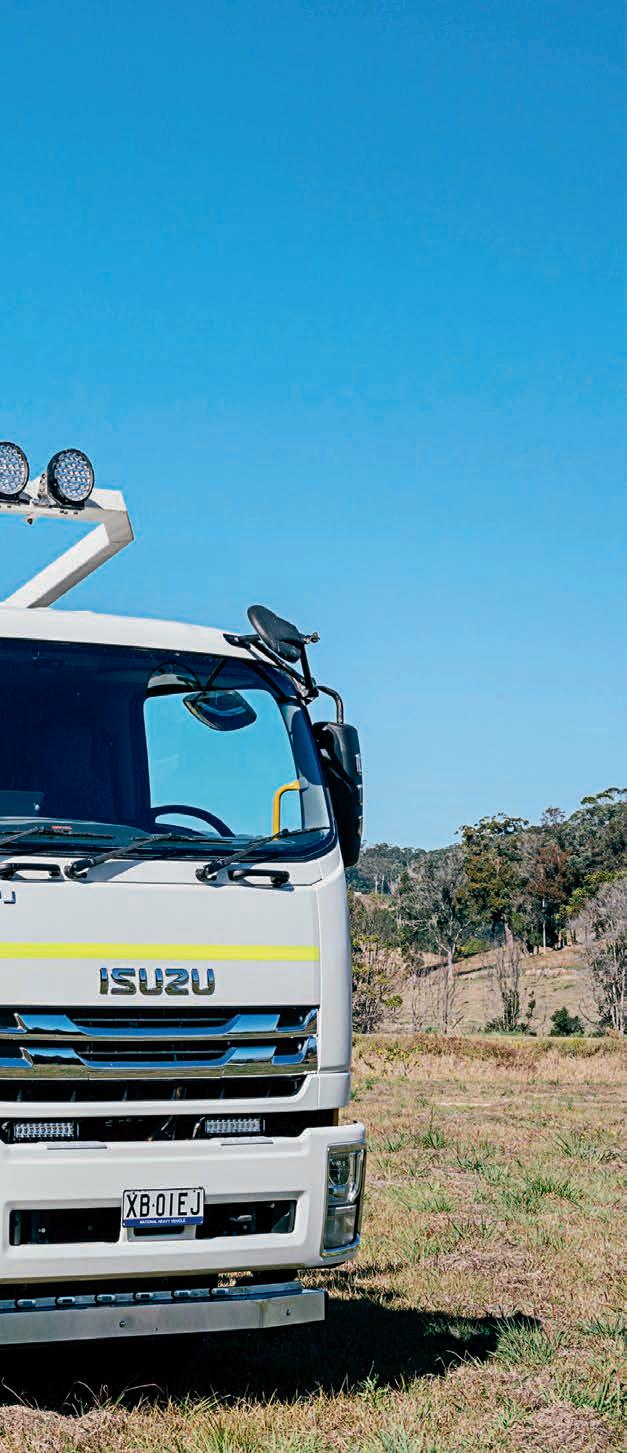
“The team love the inside of the cab on the FYJ, it’s modern, luxurious and everything works so well. It’s perfect for us, absolutely perfect. It has already done over 20,000 kilometres since we picked it up in early 2023 and it hasn’t let us down yet.
“That’s the reliability we are looking for,” concluded Chris.
“IT GIVES THE OPTION TO TAKE THE TRUCK TO SITE, OR WE CAN TAKE THE TRUCK AND TRAILER AND LEAVE THE TRAILER OUT ON THE ROAD IF WE NEED TO, IT JUST GIVES US VERSATILITY.”

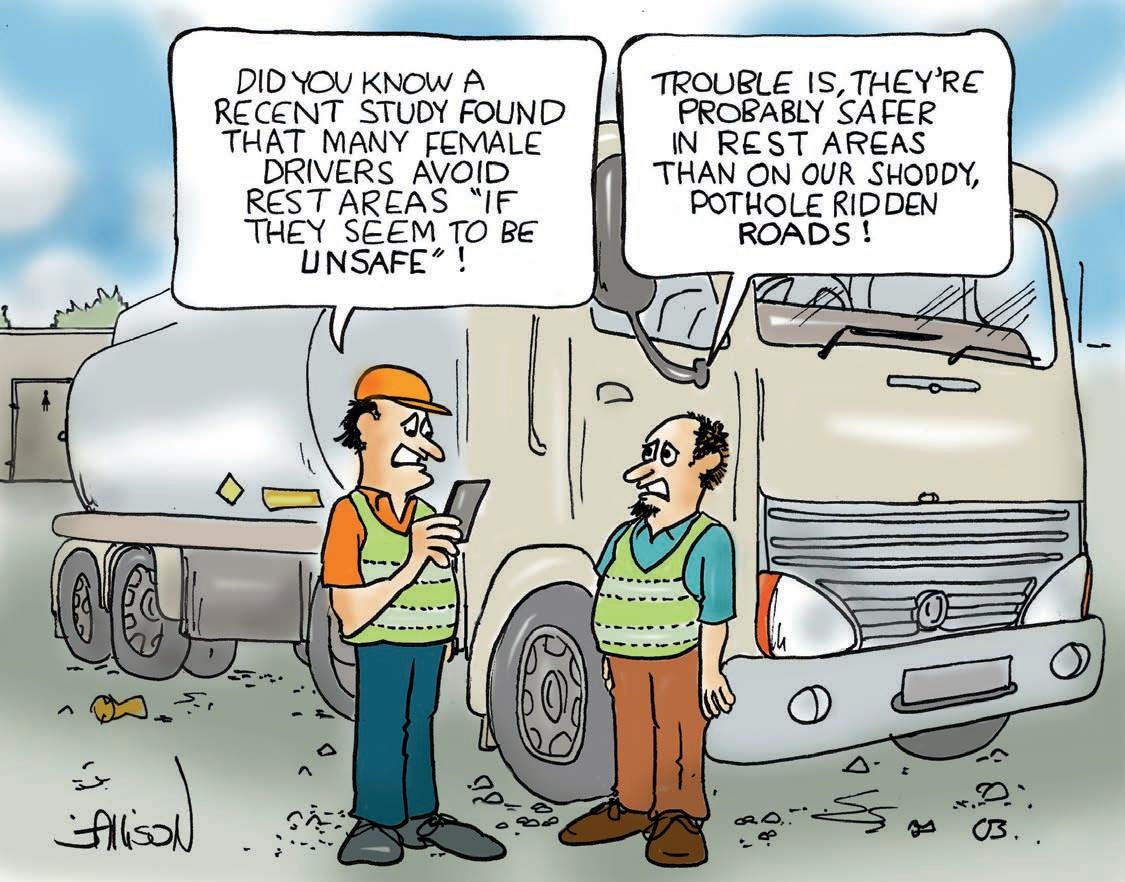
There is to be a New South Wales inquiry into matters affecting truckies. I had been approached, being told it was about rest areas but, politics being what it is, there is a part regarding truck heights and hitting bridges. There are always those individuals who will stuff it up for others. The traffic chaos and effects are real and don’t do us any favours, but if we get something done to improve our lot in NSW, then it is worth the effort.
The ballyhoo and carry on about the last fellow who stopped and did the right thing, calling the number and, without even touching the bridge, shows just how knee jerk reactions can explode. When I was told it was only a piece of alloy sticking up, it showed that the truth can often be a long way from what we see and hear.
There is scope on the terms of reference to include other things which affect fatigue and driver safety, so roads will get a big push from me. Please consider making a submission. If there is only one from me then we will miss the chance to have a say. Submissions close on September 18 so you will have to act quickly.
My focus will be on the lack and loss of rest areas, as well as the failure to listen and act. For example, the lack of a changeover facility on the Pacific Highway and how the condition of roads, bad maintenance practices and bumps and dips that are not broken roads, but which have enormous impacts into trucks, can and do impact the safety of all drivers.
I feel there are some people at certain road authorities who may well take offence to my views, but whose life is at stake? Not those sitting back and watching, that’s for sure. Does anyone from any road authority really recognise the increased levels of stress from bad roads? Or the raised tension from watching every car and truck coming toward you and hoping they don’t hit a hole, even if they can see it, let alone a deformation that doesn’t
ROD HANNIFEY, a transport safety advocate, has been involved in raising the profile of the industry, conducting highway truck audits, the Blue Reflector Trial for informal parking bays on the Newell, the ‘Truckies on Road Code’, the national 1800 number for road repairs proposal, and the Better Roadside Rest Areas Group. Rod is the current president of the NRFA. Contact Rod on 0428 120 560, e-mail rod.hannifey@bigpond. com or visit www.truckright.com.au

show up, then swerve across the road?
I am a member of the group The Newell Highway Taskforce, made up of mayors and councils along the Newell in NSW. I can’t always get to the meetings but two meetings ago I raised the issue of losing truck bays during the building of the new overtaking lanes on the Newell. The Transport for NSW fellow responded saying they were aware of the issue and were looking to replace the two sites lost. The problem with that is there have been six sites lost since this started over five years ago. I rang when the work started, during and after, and was told “we will look at replacing the lost site”.
I am sure you will be shocked to hear that the site lost at Trewilga, where I listed eight possible options of which four were perfect, would cost little to have as truck bays. However, five years on they have never been replaced and we continue to lose more sites.
We are going backwards with truck rest area spots. We continue to lose sites when the number of trucks, caravans and motorhomes keep climbing.
So, will you have a quick look at the terms of reference and put in a submission? It may cost you half an hour (or you can check my Facebook page and copy some of that). I aim to put mine up the week before.
If you run one highway most of the time, make a short list of where you think truck bays might be needed and any savage impacts, whether the road is broken or not. I have bought a small voice recorder and plan to start making a list (along with a list of phone dropout points which will be my next major focus). It is not even half funny that many of the most severe impacts are not from roads that are and can be seen to be ‘broken’, but from subsidences, bad bridge joins plus old and/or lousy repairs.
I have also been asking Transport for NSW to fix two savage dips in the new work about 20km south of Goondiwindi ever since shortly after the new road was opened. They lasted for a couple of months but strangely enough are getting worse. Do you think that could have anything to do with the hundreds of trucks that hit them each day? Do they think I will stop and wave my magic wand and they will disappear or that someone else will come along and fix them? I can see them, feel them and I reckon they kicked hard enough to move the pallet that shifted a few weeks ago. Yet they are still there.
NSW is not alone. The humps near the silos at Brookstead in Queensland are nearly as bad. The bridge at Cainbil Creek on the Golden Highway in NSW, along with many others, is up there for impacts too.
So, will you make the effort to have a say? Will you put in 30 minutes, not just for me, but for yourself and other drivers? It could help to not only make them safer, but you might even save a life, maybe even yours!
Go to the website www.parliament. nsw.gov.au/committees/inquiries/pages/ inquiries.aspx and click on ‘Pressures on heavy vehicle drivers and their impact in New South Wales’.
“You might even save a life, maybe even yours!”
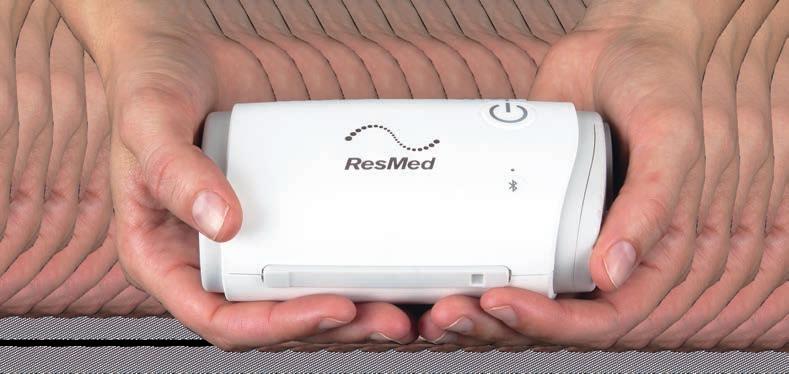

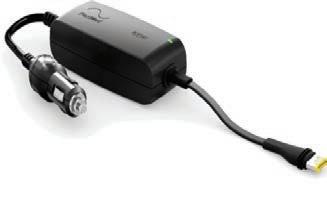
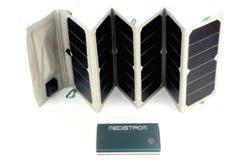
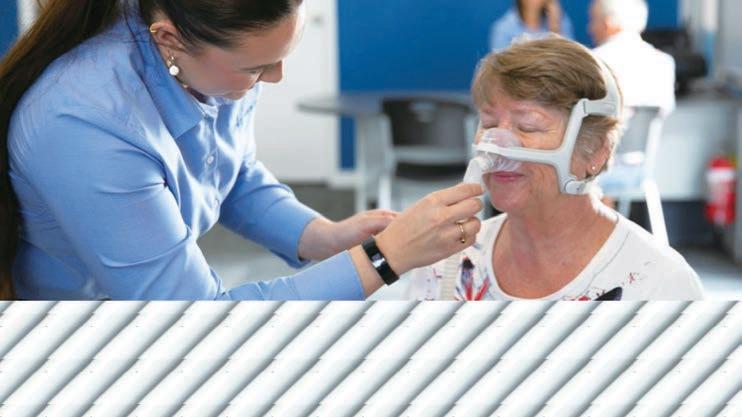
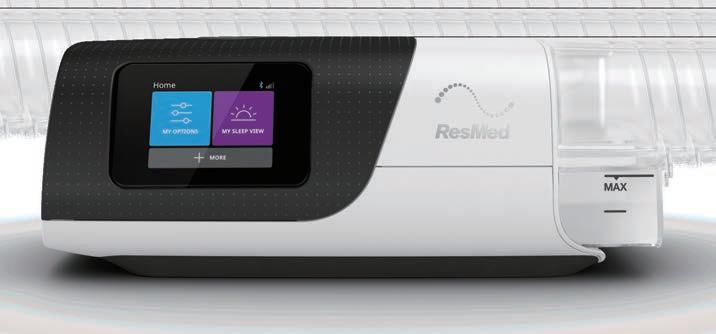





Starting up a new business in a new city requires a lot of market research in both industry and truck suitability. Greg Bush visits Alpha Omega Excavations on Queensland’s Gold Coast to discover the secret behind the company’s two-year success story
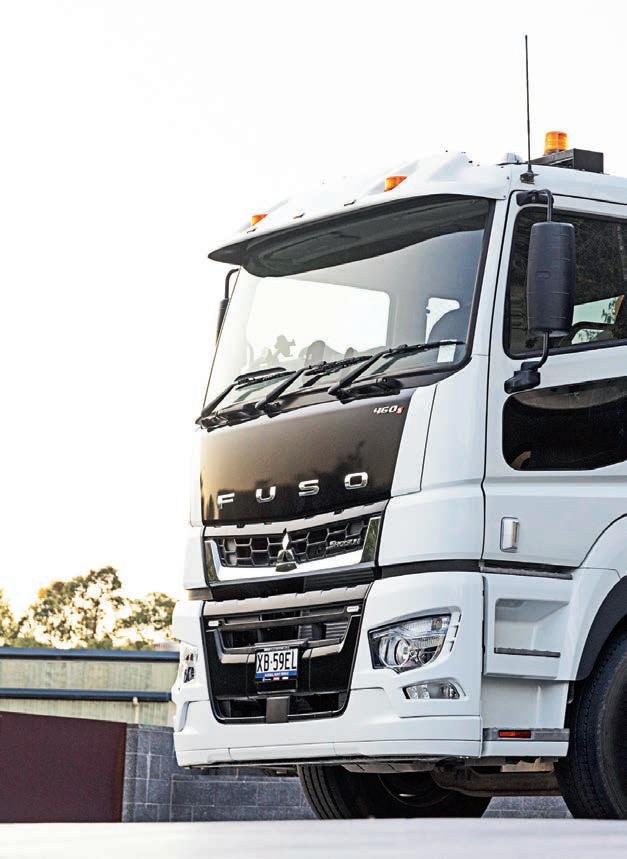

Looking to retire? How about relocating to Queensland’s Gold Coast? That’s what was in the mind of Bill Flogeras after 40 years in the road transport industry after packing up and moving north from Sydney. But maybe not fully retiring, just picking up the odd job here and there.
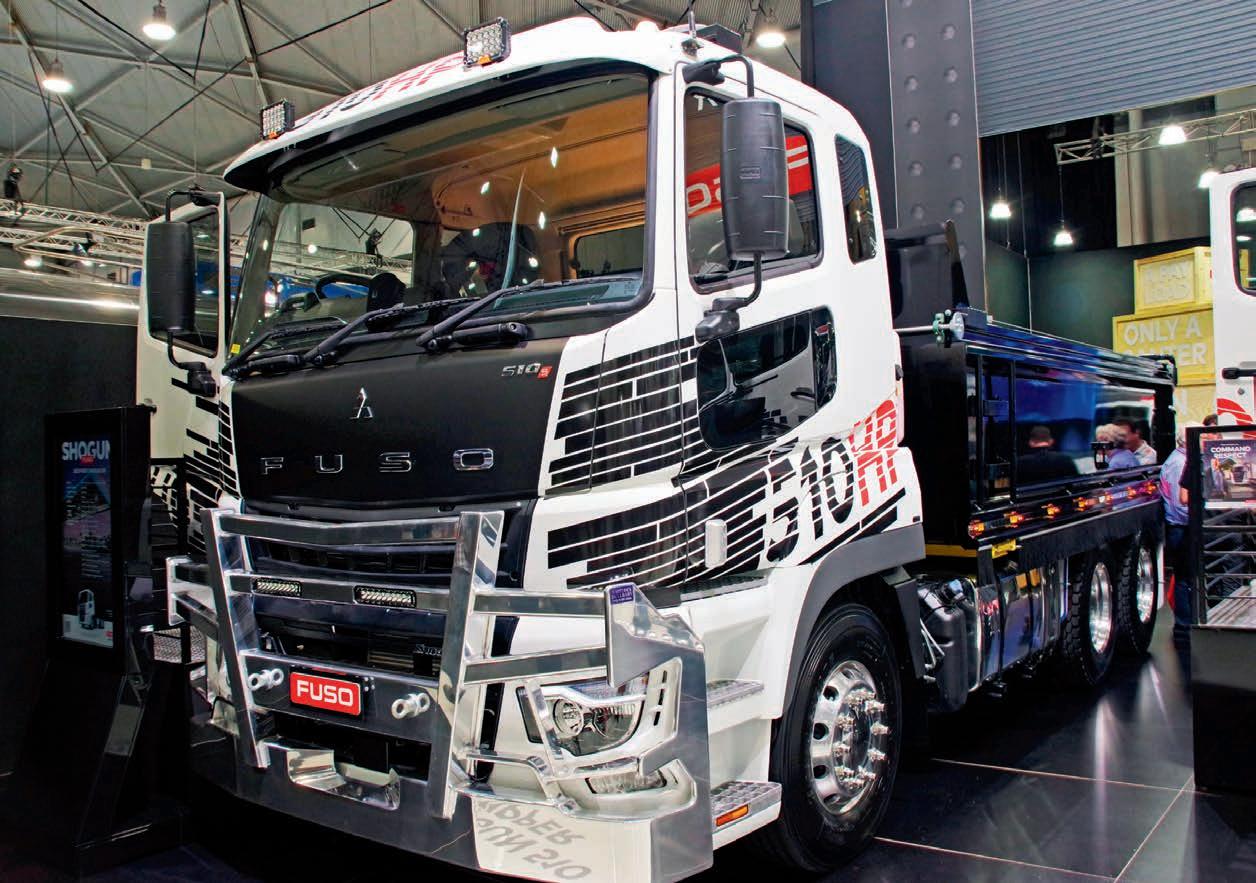
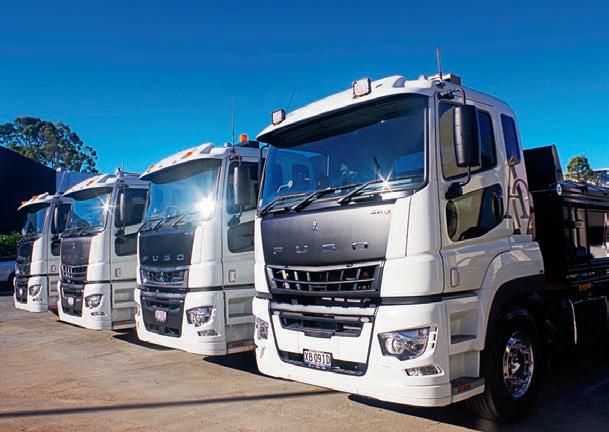

That all changed when Bill’s sons Spiros and Carmello made the move as well. Both had experience in trucking, albeit from varied backgrounds. Although a qualified carpenter, Carmello (or Mel as he prefers) was running a transport business. On the other hand, Spiros, with his engineering background, worked for pharmaceutical company AstraZeneca. Prior to that he had sweet stints (pardon the pun) within the confectionary production industry as an overseas technician installing production lines for varies companies all over the world.
Shortly before the pandemic hit, Spiros and Mel were looking at starting afresh. Besides, Spiros says he’d had enough of Sydney’s “rat race”. Both decided to join Bill on the holiday strip.
Rather than going into semi-retirement, 58-year-old Bill joined his two sons in starting up a small sandblasting business from scratch. Despite having no local contacts on the Gold Coast, their fastidious work ethic soon brought requests for extra work for their newly named business, Alpha Omega Excavations.
“We were doing driveways and people were asking, ‘do you do landscaping?’, ‘what about decks?’,” Spiros recalls.
“So we started doing a few decks, hired a little excavator and I thought, ‘there’s a market up here’.”
However, the work soon outgrew Alpha Omega’s little Fuso Canter. They needed something larger.
Bill has owned a variety of second-hand trucks during his

“I said I’d give it a run and was so i mpressed with it.”Opposite top: Alpha Omega Excavations’ Mel, Spiros and Bill Flogeras
years of running tipper haulage and excavations out of Sydney. He’d always leaned towards European brands, particularly Volvo, so that seemed the obvious choice.
“I’ve had probably about 15 Volvos in my life … maybe more,” Bill says. “The oldest one I had was a G88; that was a 1970 model.
“I’ve had a couple of Americans, they’re beautiful trucks but they’re just rough, no turning circle. And they’re not cheap.”
With second-hand trucks in high demand, forking out around $200,000 for a Volvo that’s already done a million kilometres did
not seem an economical proposition. The Flogeras family began entertaining the option of buying something new. But, as is the case in the current climate, ordering a truck is the easy part; taking delivery is another matter.
They initially approached UD and Hino. Bill’s preference is for six-rod suspension, although he liked the disc brakes and eight air bag suspension on the UDs but baulked at the price difference. And there was the usual problem of supply delays.
Their next stop was Daimler Trucks Gold Coast where they met up with the branch’s south-east Queensland fleet account manager, Jon Hamilton who introduced them to a 460 Shogun.

“I wasn’t into Japanese trucks,” Bill says. “But Fuso is owned by Mercedes-Benz, and their drivelines now are Detroit engines and Mercedes drivelines. I said I’d give it a run and was so impressed with it.”
Jon also explained to Bill the benefits of air ride suspension.
“In the tipping game six rod is always better. They don’t get bogged, you can tip one axle in a ditch and the other one out compared to the air bag,” Bill says.
“Then Jon convinced me the new air ride system that they have is pretty much like a Mercedes-Benz. And he was right.
“It’s a better ride obviously and more comfortable. And that’s why we went back because my mentality was all my tippers over the years were rod suspension.”
While Jon Hamilton was educating the Flogeras clan on the merits of the Fuso Shogun, Bill offered Jon a few tips on building the right body for their line of work.
The first 460 Shogun was sent to a local body builder, but the hefty price and workmanship quality left a little to be desired. They made the decision that any future bodies would be ordered, designed and built further south, namely M&S Truck Bodies in

the NSW Illawarra region and AA Diesel Truck Bodies in Dandenong, Victoria.
The 460 was followed by another 460 and a 510. A fourth Fuso arrived a couple of months ago, but not the 460 they had initially planned on. Again, with an eye on waiting time, an opportunity arrived when a 510 tipper, on display at the Brisbane Truck Show in May, became available.
“Jon removed the bull bar as we wanted to keep our image consistent with our other Fusos and the bull bar was more than we required,” Spiros continues.
He also makes a point of saying that the four Shoguns are also united in cleanliness, getting a thorough wash each week.
“They’re a great advertisement,” he says. “You drive them around and you’re basically advertising the company, that’s why we keep them in good nick. It’s worth it, it’s like paying for marketing and advertising.”
However, cleanliness is but one part of Alpha Omega’s growing and glowing reputation.
“Listening to the customers, all of them had complaints about guys with machines and trucks would turn up late, or ring you at the last minute with, ‘sorry, we can’t come’,” Bill says.
“They were cheaper than us in the hourly rates, but they didn’t get what we gave.”
It has been a quick learning curve for Bill, Spiros and Mel, starting a new business from scratch in a different city. In preparation, Spiros says they studied the market to look to see what they could do different to their competitors while sticking to their values.
“Turn up early, have your trucks always clean, presentation, a good work ethic, reliability, be loyal to your customers … things like that,” he says.
“Since then we’ve attended for flood recovery work with various councils, we’re on the Gold Coast light rail project at the moment too, and everyone’s really happy with our work and our trucks.
“The benefit for our company is that we always keep our trucks in really good nick. You get a lot of companies just wanting our trucks to be on their site, because we’re very professional.”
That professionalism extends to whoever sits in the driver’s seat. So, when it comes to hiring, it’s a case of finding the right person for the job, as Bill explains following their latest recruitment process.
“We went through about 10 different interviews,” he says. “It’s really hard, they’ve all got a truck licence
but a lot of them don’t know how to drive tippers.”
“They have to be trainable as well,” Spiros chips in. “We set it to a certain standard. This is our procedure, this is our training so we want you to act a certain way and be professional, pretty much tier one drivers.
“Everyone’s like, ‘you’re just a truck driver’, but it’s actually really hard to operate a truck on site. And there’s just so much involved which people don’t realise, like traffic control, communication, tipping in the correct spot, positioning the truck to get loaded with different machines … just things like that.
“We want to make truck driving pretty much an art form,” Spiros states.
Meanwhile, Bill has temporarily shelved any plans for taking it easy, although he has his eyes on a new specced-up Mercedes-Benz Actros that is soon to enter the Daimler Trucks Gold Coast showroom. He views it as his possible “retirement truck”.

Spiros, however, doesn’t share the same enthusiasm. “If he wants to retire in it, fine. You can live in it pretty much. It’s got beds and fridges and microwaves – take it camping if you like,” he smiles, adding that it could find a home in their existing small fleet as a truck and dog.
“That’s a fair compromise but it would look nice. It would look like a show truck.”
That would be a big jump for Alpha Omega Excavations, but due to the growth of the business, it’s not out of the question.
“Where we’ve come from, when we started in the last two years, anything is possible,” Spiros says. “It’s been a journey.”
“We

The roll-out of electronic work diaries (EWDs) in Australia began in December 2020 with just two brands. That’s grown to 10, all vying to be the alternative to about 200,000 paper diaries.
In response to growing interest among NatRoad members, I thought I’d write an easy guide to EWDs.
So what is an EWD?
It’s a digital system or device, approved by the National Heavy Vehicle Regulator, that electronically records the work and rest periods of heavy vehicle drivers.
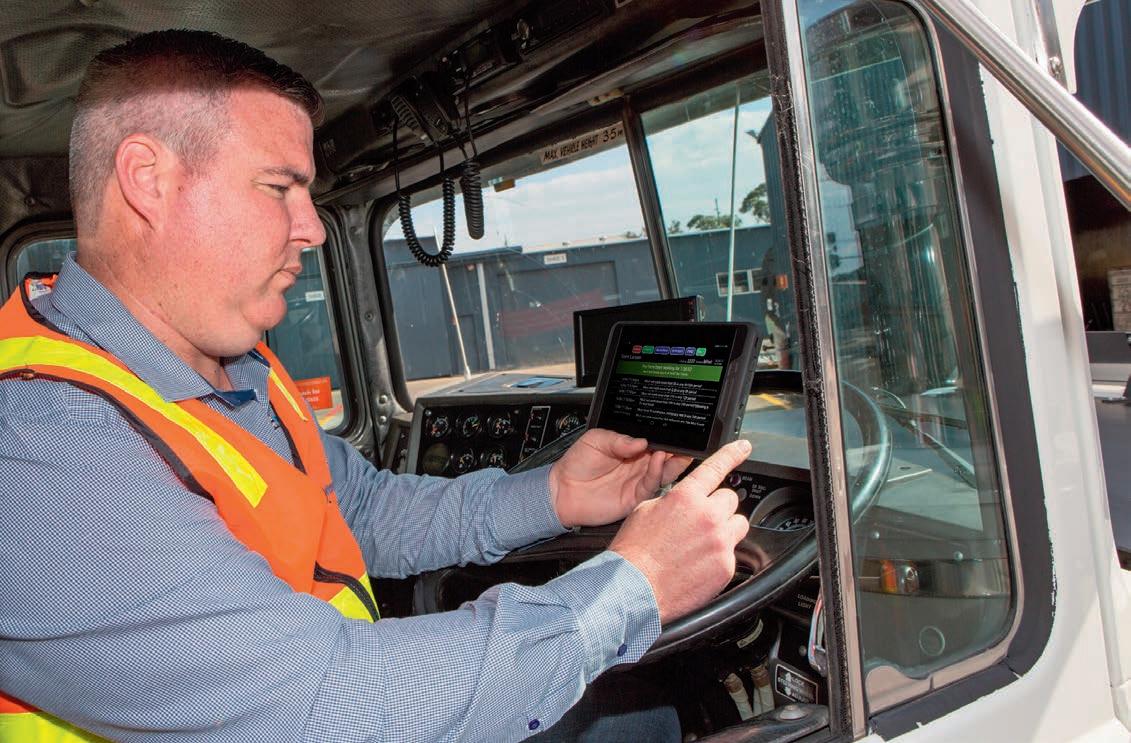
The use of EWDs is voluntary and is governed by the need to comply with the same heavy vehicle fatigue management laws that cover paper diaries.
The big advantage of EWDs is that they can streamline many of the regulatory requirements that go with driving a heavy vehicle.
The way they work is simple. Drivers log in and enter basic information, such as location and time to record their shift or rest periods. The system will tell you when you need to take a break or are good to resume driving.
The best EWDs will also let you know if you’re at risk of breaking the rules.
You also get to correct any errors
before closing off at the end of a day.
Roadside inspectors can examine an EWD in much the same way as they review a paper diary. The device is put into read-only mode. There’s no risk of misspelling a place name or being pinged for a supposedly illegible diary entry.
All drivers need to be compliant and EWDs have the advantage of making it simple. There’s similarly no chance of miscalculating. Drivers input work/ rest times and the EWD will calculate breaks automatically.
EWDs are faster to fill out and allow shift times to be recorded to the nearest minute rather than rounding to the nearest 15 minutes, as is the case with paper versions.
There’s no manual handling of paperwork; EWDs allow records to be shared or accessed easily (and instantly) and securely stored for as long as required.
Additional features come with
different models. For example, one markets itself as being compliant with both national and West Australian regulations. Others are ‘platform agnostic’, meaning they work with IOS or Android devices, making it easy to record details using a mobile phone or tablet.
Of course, like most changes in our industry, the introduction of EWDs hasn’t been without divisions of opinion.
In the USA, where the use of electronic logging devices in commercial motor vehicles is mandatory, the Owner Operator Independent Drivers Association mounted an unsuccessful court challenge, claiming that EWDs breached the New York State Constitution.
I understand concerns that EWDs are the thin edge of a very big privacy wedge where ‘Big Brother’ tracks drivers constantly and uses data to catch out drivers for minor transgressions.
Misgivings about potentially unfair use of data are valid across many parts of society. NatRoad remains vigilant on that front.
The National Heavy Vehicle Regular says its rules on this concern are very clear. EWDs capture the location where a work or rest event is entered. Each entry is confirmed when you sign out at the end of the day. Only then is a potential breach registered. In other words, the same thing happens with an EWD as a paper diary except you don’t receive an advance warning.
There are concerns about how far back an enforcement officer will be able to view and take action retrospectively.
NatRoad believes that regulators must provide a blanket guarantee that any data or information obtained through technology will not be used as evidence in issuing infringement notices or prosecuting offences.
When you balance the pros against cons like the cost of being penalised for minor clerical errors in paper diaries, or going a minute over without taking a rest break, you see why EWDs are being adopted by many.
“There’s no risk of misspelling a place name or being pinged for a supposedly illegible diary entry.”



As the year is flying along there has been a lot of progress made in certain areas which, as owner-drivers out there travelling along our major freight routes, we will over time see some of the benefits of. This includes the work the rest area committee has put together to guide the powers that be through the process of spending money in the right places. It will also enable us to get the best outcomes to benefit all on the road.
It has been a long time coming and as we know nothing happens in a hurry but hopefully this is the start of better things to come. While it’s not ideal and something that should have

happened years ago, at least it is a step in the right direction – and let’s hope it continues.
The biggest issue is with different road managers. They all want to have a say and have control in the area that they look after. That causes all sorts of delays, which I think slows the whole process down. But as things move along and gain momentum, this is something which I hope will improve along the way.
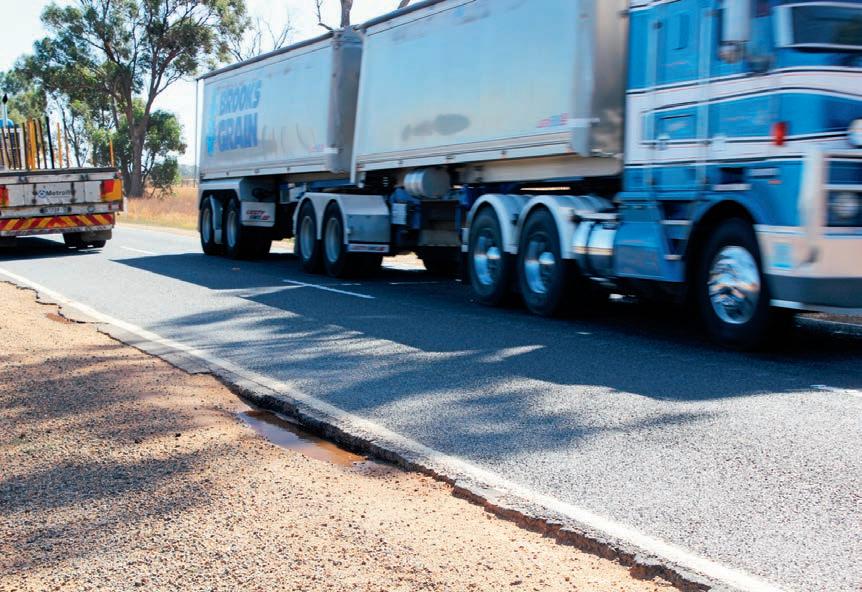
Like with most things, people look at certain aspects of the decisions made or money spent and will criticise parts of it. Not all will suit everyone in every way, but if we all stop and think that this is all

DALE McDONALD, a current National Road Freighters Association board member, became an owner-driver at the age of 20. His driving experience includes various trucks from concrete agitators to truck and dogs and to B-doubles doing interstate. Later in life he decided to become an owner-driver again, doing refrigerated freight as a tow operator. He realised the sad state of our roads and rest areas, wanting to be a voice to help improve the transport industry.
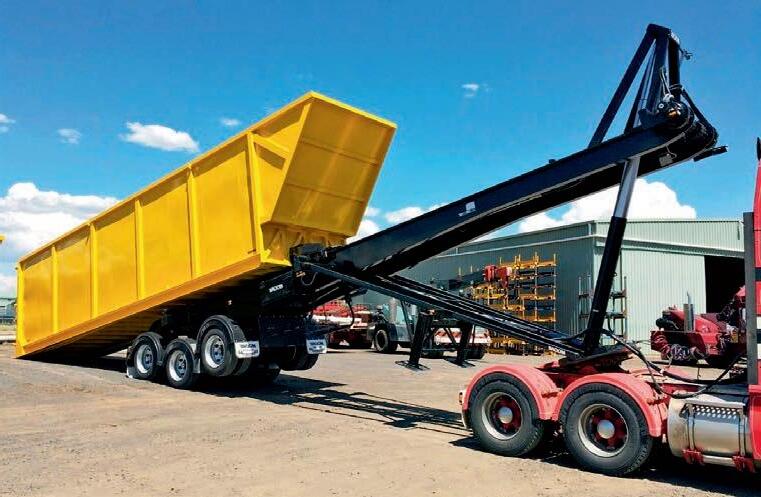
new and has been a long time in the making, then we should all hopefully try and find some sort of positive and look on the bright side as we face many challenges within our industry. At least they want to consult with us to get the best advice, so in the end they can make the right decisions for us all to benefit.
I have certainly noticed over the last couple of years since COVID arrived, we have all had serious challenges moving freight across our borders, but people’s attitudes have also changed. During and after COVID it was the best excuse for our shelves being empty and companies not being able to source products. But now, if things are slow or we can’t get things, people just seem to accept that this is the new norm. However, as we move forward, hopefully in the transport side of things, we can benefit in some way or another.
With the many different sectors of our industry (and there are a lot of them), I sometimes say to people if you are not happy doing what you are doing, try and look in other areas. Find the right sector of work that suits you because it’s no fun for people to come to work every day and be miserable. All it does is brings other people down.
So, find an industry that is right for you and something that you can be happy doing.

As an owner-driver and in this current world, there are a lot of areas that we are challenged by. With all the associated costs we face to run our businesses, if there is one area I can offer some advice, to benefit an owner-driver, is a product on the market which I believe can save money on our day-to-day costs. I will also say upfront I am in no way sponsored by this product or gain any benefit from the advice; it’s something that I have tried and it saved me money off my bottom line. For anyone that wants to double the life of their tyres, I strongly recommend looking at Atlas Balance Rings. I tried them on the steer’s first and doubled the kilometres, so I then put them on the drive and exceeded double the life of them as well.

“Hopefully this is the start of
things
come.”
Recently I joined over a thousand transport workers around the country participating in convoys to call for urgent transport reform. Not only did hundreds of truck drivers join convoys in their home cities (Perth, Darwin, Adelaide, Brisbane and Melbourne), over 300 drove from Sydney to our nation’s capital, taking the fight for fairer, safer transport right to the lawns of Parliament House.
It’s a big number – the Transport Workers Union’s biggest convoys yet. Over a thousand workers who are saying that Federal Parliament must back reform, and they must do so urgently.

It’s unimaginable to think that since the Turnbull Government tore down the road safety watchdog and put nothing in its place, over a thousand people have been killed on our roads. That’s 1301 truck crash deaths in total, 311 of them truck drivers.
We remember those workers and other road-users when we fight for a better industry. No other worker, no other family, no other community, should have to receive the terrible news that they’ve lost a loved one. There should not be drivers who have lost count of the number of work mates’ funerals they’ve had to attend.
The saying goes for Workers’ Memorial Day that we mourn the dead and fight like hell for the living. Well, we’re fighting like hell, because every day that passes is a day where workers and transport operators are under
immense and deadly pressure. That’s why transport workers from right across the industry, joined by the National Road Freighters’ Association (NRFA) and supported by the Australian Road Transport Industrial Organisation (ARTIO), NatRoad and major transport operators, are united for change—not just for workers to come home safe, but to be able to make a decent and sustainable living.
It is unprecedented for all of these groups to be coming together with the same call. In other times and other worlds we have been on opposite sides of the fence.
But there is always more that unites us than divides us in this industry, and what a powerful thing it is to show Federal Parliament that we are together in this.
There’s nothing like the atmosphere of a convoy. I joined in Goulburn where hundreds of trucks were lining up, banners being hoisted and flags fit to windows despite the rain. It’s no small thing for a driver to choose to spend precious hours driving to Canberra and
back. It shows the importance of this fight, the urgency, and most importantly it shows the hope.
Since the former government tore down the road safety watchdog, it has felt as though we’ve been banging on a closed door. This is the first real chance we have had since that time to make a real difference in this industry.
Among the hundreds of people I saw at convoys that day were now-retired workers who are still fighting for the transport workers who will come after them. There were former owner-drivers like Gordon Mackinlay from the NRFA, who had to sell his trucks because the job had become unsustainable.
They believe in this industry and they believe that it can once again return to one in which workers and operators can make a decent living, and drivers can be safe on the road.
It’s this belief that will bring us over the line, and that line is drawing ever closer as the Federal Government prepares to table legislation that, if passed, would make transport safer, fairer and more sustainable. By the time this publishes, we may have reached that crucial point.
Transport workers have campaigned for decades for a fair system. For ownerdrivers and fleet operators, with margins that were already tight now balancing on a knife edge, the threat of the gig economy has compounded a crisis that was already in the making.
Reform in the gig economy is a crucial part of change.

For the first time, gig transport workers joined convoys and made their calls for fairness in the gig economy heard. The impact of the gig model on workers is shocking enough in its own right: ‘independent contractors’ who supposedly run their own small businesses, but with none of the control. Since the gig economy came to our shores, 13 delivery riders have been killed on our roads. Every day more gig workers are ‘terminated’ from an app by an algorithm that decides they’re too slow.
We know that the exploitative model of the gig economy will spread to the rest of traditional transport if left unchecked. Those companies would be forced to shift their workforce to gig work just to remain competitive – for owner-drivers and other fleet operators, the already low floor would be completely ripped away.
It’s not good for gig workers, or ownerdrivers, or transport operators, or employee drivers … the list goes on.
What is obvious when I was talking to transport workers outside Parliament House’s front door is how deeply passionate people are about this industry. If we win this reform, it will not just save lives and businesses – it will once again attract people to an industry that, in its current state, people do not want to join.
We are gaining momentum with key cross-benchers who have seen our entire industry turn out for change. We must now keep up the pressure to show these cross-benchers—whose votes will be crucial—why they must back reform.
So, we’ll be back in convoys in every capital city and to our nation’s capital until we get this over the line.
We’re as close as we’ve ever been. Let’s keep fighting like hell.
“It has felt as though we’ve been banging on a closed door.”
Ph:
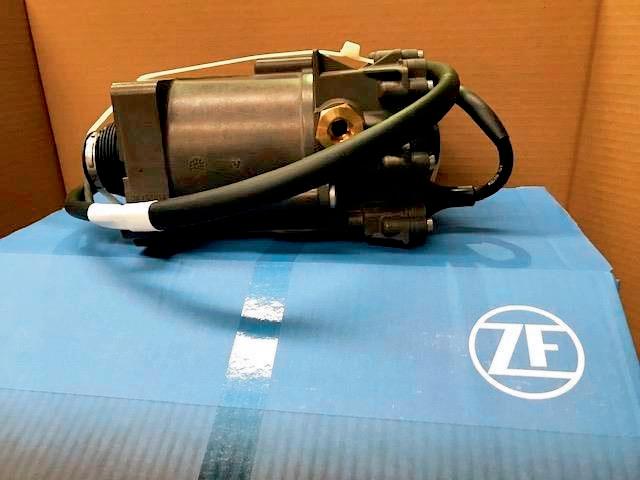
Fax:
Fax:
davids@gibbsparts.com

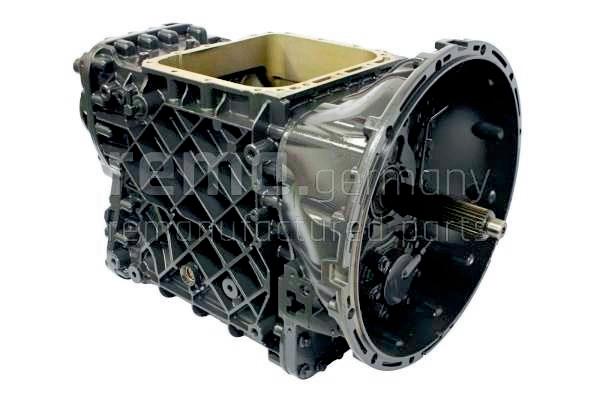

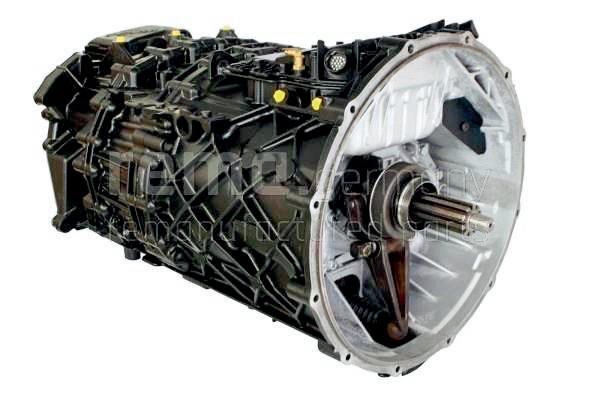
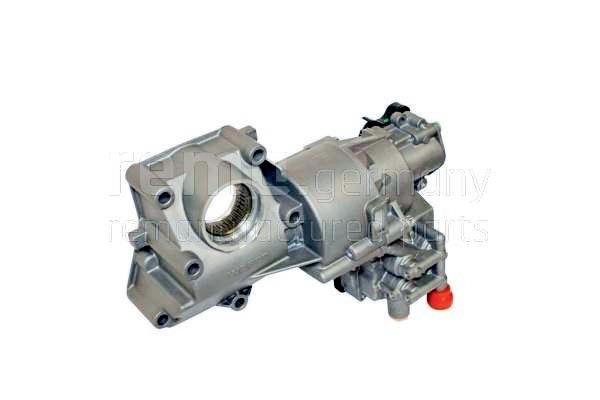

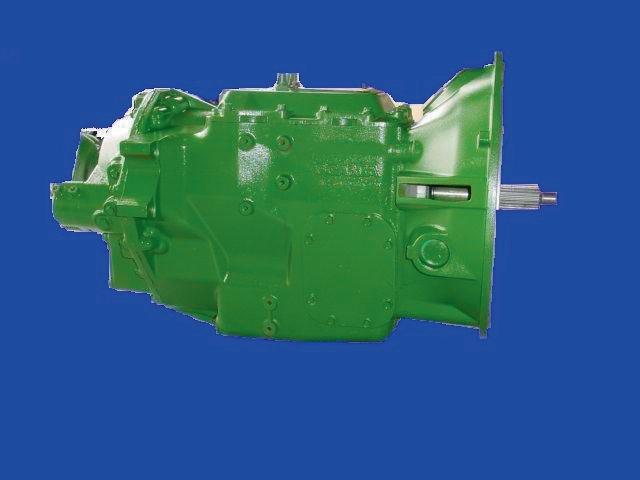

davids@ggd.net.au
Web: www.gibbsparts.com
Web: www.gibbsparts.com
“Age is something that doesn’t matter... unless you are a cheese!” – Billie Burke. Yes, that is a somewhat random quote to start this story, but you will soon see that it is extremely fitting. Age is an important ingredient in the following story or to be more precise, the fact that age isn’t important is an important ingredient in this story.
I often cover the newest and fanciest trucks on the road – all the shiny bits, all the mod cons. Every now and then, however, I get to focus on a classic truck. Normally a restored truck, one with

an interesting history that is now consigned to truck shows and a dust-free storage shed. Not today though, not this particular golden oldie.
Today I will be focussing on a truck that first hit the road when The Beatles were chart toppers, before Walt Disney World was open and well before you could buy your kids a pet rock (I’m serious, in the mid ’70s a toy company made a fortune by selling pet rocks). Today’s focus will be a 1969 Diamond Reo C-114. A working 1969 Diamond Reo C-114 at that.
But wait, there’s more. The ‘age doesn’t matter quote’ isn’t just tied to the big red Reo that bounces
off the pages here. It is also appropriate when we talk about the owners of this remarkable rig –Norm and Nola Bransgrove or, as you may come to know them, the world’s worst retirees.
Norm is an extremely well-preserved 1949 model and has racked up more kilometres on Australian roads than some small transport companies ever do. His lovely wife Nola has been a transport industry advocate for several decades now and while she doesn’t have as many kilometres behind the wheel, she has more acknowledgments and awards than anybody I’ve ever met. These include the first-ever National Australia Trucking Industry
Memories of a Diamond Reo leaving his 185hp ACCO in its wake came flooding back 50 years later when Norm Bransgrove discovered the 1969 classic was up for sale.
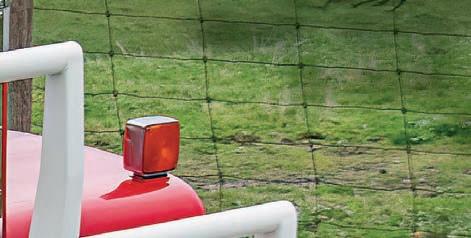
Warren Aitken chats with Norm about why he’s chosen to work the truck rather than leave it as a showpiece
Woman of the Year award in 1997, as well as an Order of Australia Medal in 2012. Both of these amazing people have served the transport industry diligently for decades and, like their sparkling Diamond Reo, deserve to have their feet up with a glass of sherry, watching Coronation Street reruns.
Deserved or not, this couple is far from your standard pensioner, that’s why we are here and that’s why I refer to them as the world’s worst retirees. The power couple was scheduled to retire in 2020. It was all planned out, they sold off their trucks, wrapped up their company Branstrans Pty Ltd after nearly five decades of operation, and

began contemplating life as grey nomads. It lasted barely 12 months.






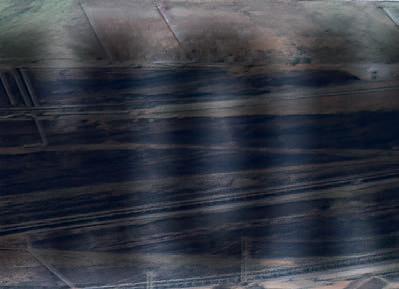
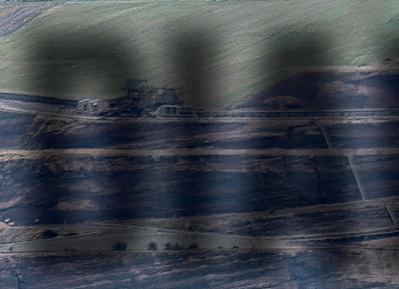
Back in the good old days, when you retired you would waste your days offline, watching TV, doing crosswords, or annoying your partner the old-fashioned way. Nowadays, retirement means more time to play online, with social media and marketplace. This in turn normally results in buying something inappropriate and impractical, such as tea cosies and porcelain figurines maybe. In the case of Norm and Nola, it was this stunning Diamond Reo.
However, the ageless truck wasn’t an impulse

buy. In fact, the purchase of this truck had massive sentimental reasoning which we will get into shortly.

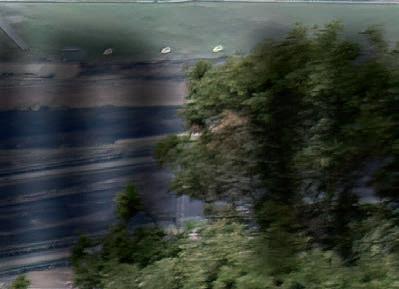
Most retired truckies would buy a classic like this and either turn it into a motorhome or check the oil every six months before a truck show. Not Norm and Nola though. Once they had put a little bit of time into the 52-year-old truck they promptly put it to work.
Retirement be damned. In order to understand why they are so bad at retiring, you first need to understand where Norm’s work ethic has come from.
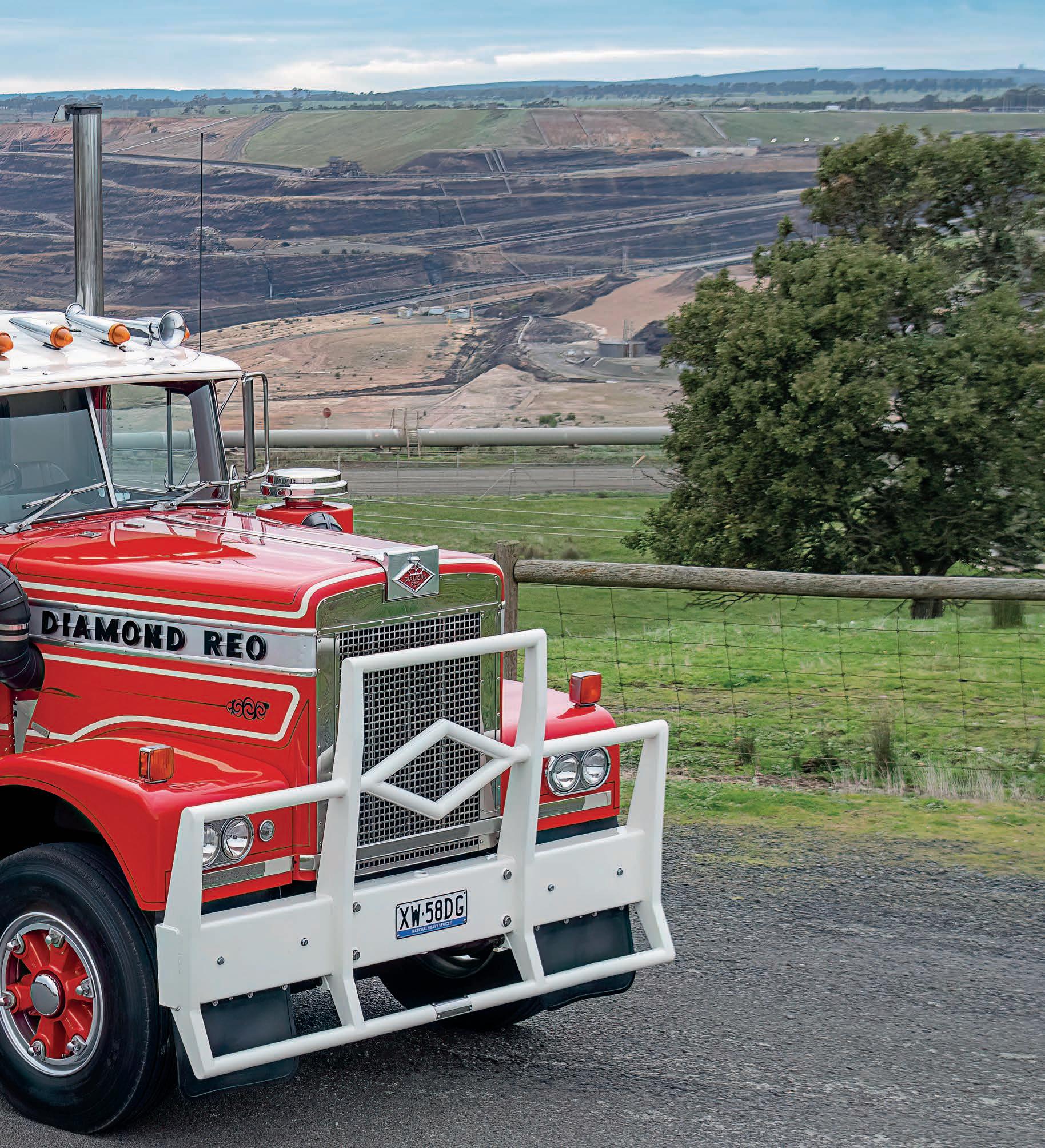
Top: Norm Bransgrove may be at retirement age, but he loves the feel of getting his Diamond Reo out on the road and working
Above: You don’t get to see this old logo very often. Much less on the current highways around Australia
Opposite top: Simple but effective. All original inside the Diamond Reo, with an updated stereo and a much more modern two-way; The condition of the interior is a testament to how well Jack Caldow looked after the truck from day one
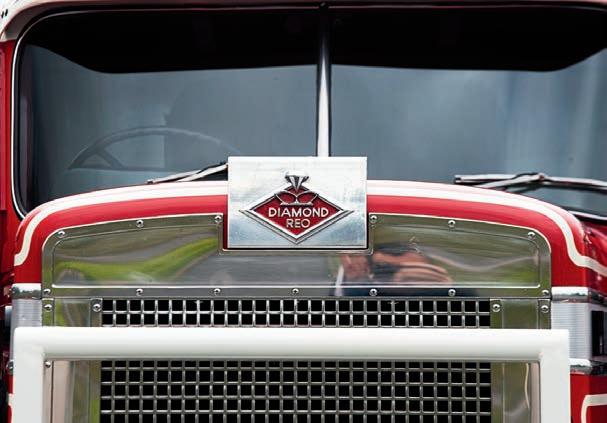
Opposite bottom: It’s snug in the bunk but the perfect fit for Norm. The occasional overnighter means he doesn’t need a huge bunk, just somewhere to lay his head
Transport has played a part in Norm’s life since he was knee-high to a grasshopper. He has been driving now for 69 years. You read that right – 69 years. Some of you are questioning my maths, especially as you glance back and reaffirm the fact Norm is a 49 model. That would mean he was driving from the age of five? That would be correct.
“I grew up on a dairy farm and I used to steer the old Bedford around while dad threw hay off the back,” Norm recalls.
I questioned his ability to even reach the pedals and Norm explained how his dad would start the Bedford off and it would idle around while Norm steered. “One of the highlights of my career was when Mum came into primary school to tell the teacher it was going to rain and they needed me to drive the truck,” Norm laughs. “I was about eight or nine and walked out of school 10 foot tall.”
In those days it wasn’t unusual for kids to leave school as soon as they could and start working. Norm was no exception.
“I left when I was almost 14,” Norm says. “There were big celebrations at school when I left. I worked on the farm with Dad and my older brother George.”
While a modern-day 14-year-old would struggle to pick a Phillips head screwdriver from a flat head, and hard work is having to make their bed with fitted sheets, Norm grew up in a time when you got up in the morning and worked. When you finished work, the sun was going down and it was time for bed. Rinse, wash and repeat. When Norm did get some downtime, he would often find his way into the passenger seat of one of his uncle’s trucks.
“My grandad was one of the first to cart into the Maryvale paper mill,” Norm explains. “My uncles were also running trucks and I used to go for a ride in their old K5 and K7 Inters.”
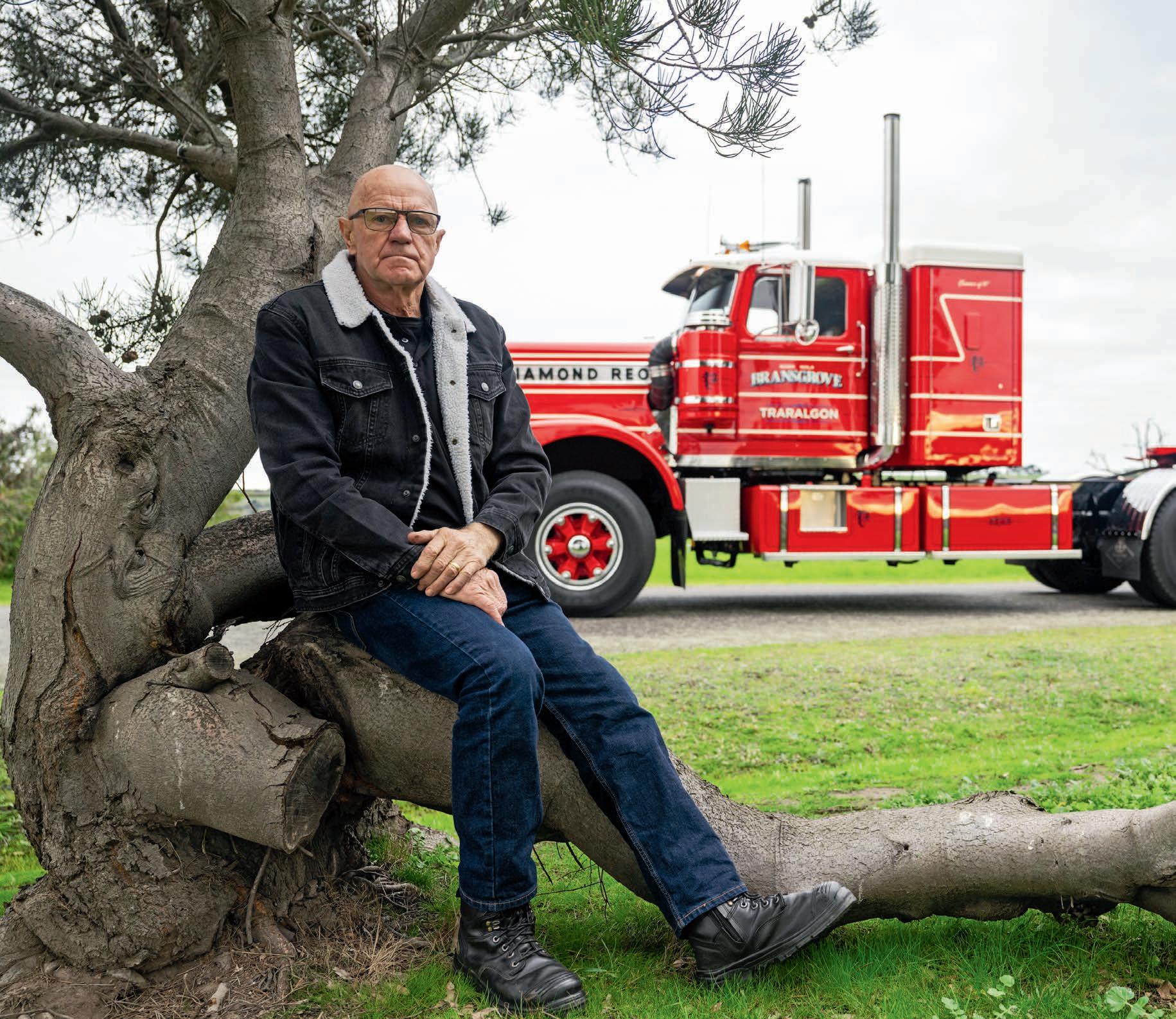
“I used to
back.”
Between those early hay delivery experiences and riding along with his uncles, Norm was heavily infected by the driving bug. He could not wait to get his truck licence and get out on the open road. This desire was exasperated by the fact his brother had picked up a local roading contract and wanted Norm to help out by driving his cab-over Bedford on the job, all of this occurring around Norms 18th birthday.

“I actually went and saw the local copper when I was 18 to ask about getting my truck licence,” Norm smiles, recalling with a smile the response from the cop. “He said to me, ‘didn’t you just get your car licence?’. Then he said, ‘you can’t get your truck licence until you’re 19’.”
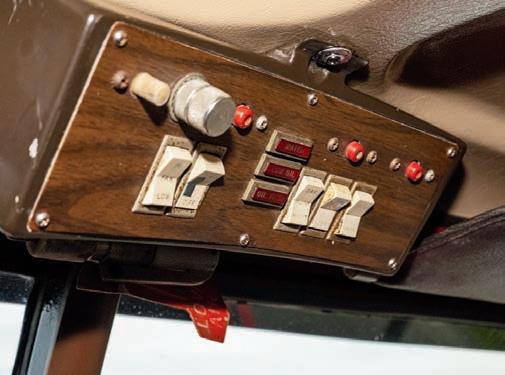
Not to be denied, Norm politely asked if there was any way around it. “The cop said, ‘That’s a shitload of paperwork! If you’re only working around the district, go and get some experience and come see me when you’re 19’.”
That was good enough for Norm. He took the wheel of his brother’s Bedford and started work. He later took the day off on his 19th birthday to call in
and see the local copper and make it all official.
From that day onwards Norm was laughing. He had his truck licence and he was into it. He helped his brother with the roading contract, then when his brother purchased one of his uncle’s pulp carting trucks, Norm jumped behind the wheel of that as well.

There was a brief interlude from trucking when the newly married Norm and Nola decided to try the transient life and took their HK and caravan on a working holiday around Australia. But the lure of the truck and birth of their second baby eventually dragged them both back to regional Victoria and the back behind the wheel of a truck.
In 1972 Norm moved from being a truck driver to finally being a truck owner, purchasing his very first truck, a 1972 International Transtar. The opportunity came about courtesy of his employer at the time, his big brother George.

“I was working with my brother when this lime contract came up,” Norm recalls. “My brother said I could either buy the pulp trucks off him, or work for whomever bought the pulp trucks, or I could put my name on one of the five brand new lime trucks that were needed.”
Subsequently Norm and Nola decided to take the leap, and more importantly their life savings, and jump in on the brand new truck idea. That first new purchase would be a massive learning curve for Norm and Nola.
“It was very tight. The only people making money were the accountants that set it up,” Norm says. It was an eye-opening leap into the owner-driver world that could easily have broken the young family. Thankfully it didn’t.
Norm and Nola worked their way through the tough times, learning valuable lessons and showing immense resolve. Over the next few decades the

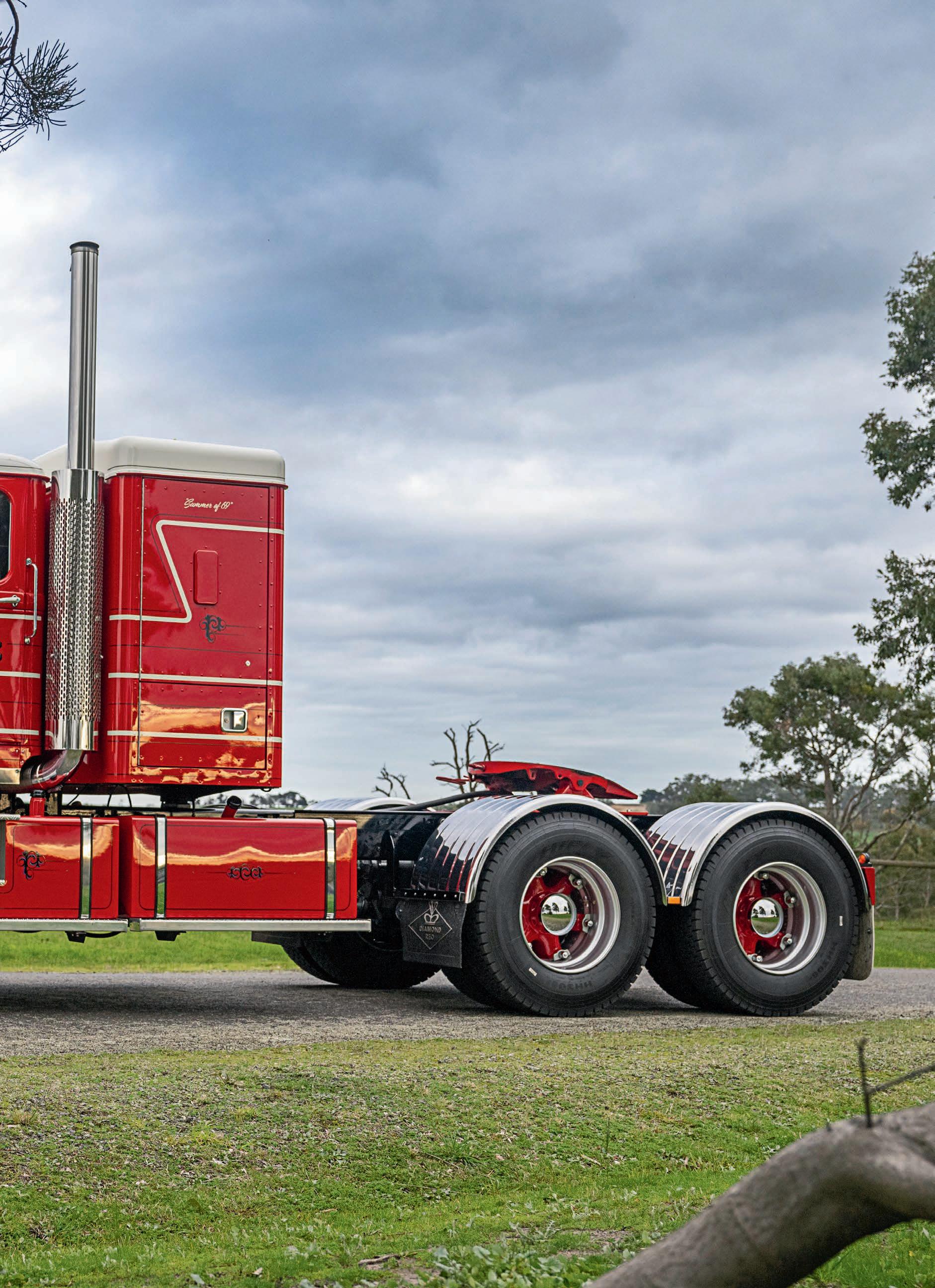




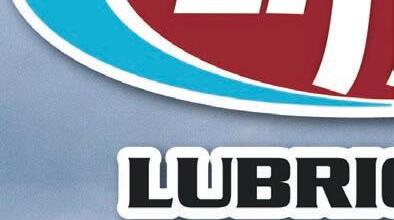



family would go from one Transtar carting lime to a fleet of Mercedes-Benz trucks carting pulp timber. Those trucks would be surpassed by everything from ACCOs to MANs and even a yard full of fancy Freightliners.

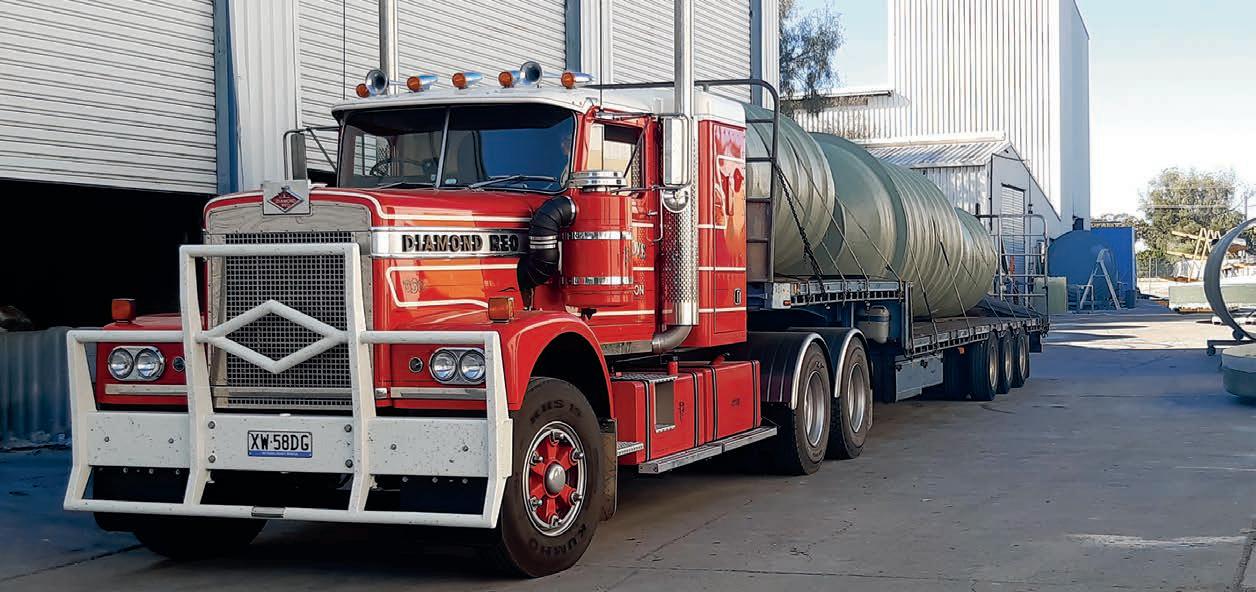

The diversity wasn’t just limited to truck manufacturers though. It also overflowed into the workload that Norm and Nola undertook, beginning with lime cartage, covering logs, trying their hand at brick cartage, and even specialising in machinery tracts. During Norm’s trucking career there wasn’t much that he didn’t have a go at.
Some of the stories I would love to share are still being evaluated by lawyers. Others, well I know straight up my editor will cull. But trust me, an afternoon with Norm and Nola is packed with laughs. For now, however, we have established the credentials of BransTrans Trucking, we now need to get onto this stunning Diamond Reo and how it fits into the Bransgrove anthology. Let us first have a little history lesson on the Diamond Reo.
Diamond Reo came about when two very old companies, Diamond T and Reo, combined under the White Motor Corporation back in 1967. The two original identities both began back in the early 1900s. Diamond T was started by Charles Arthur Tilt in 1905. A random fact: the Diamond T logo was originally used by Tilt’s father, who was a shoemaker. He used the Diamond to represent quality and durability and enclosed the ‘T’ for the family name, Tilt.
Reo was also started in 1905 by Raymond E Olds, the man behind the creation of Oldsmobile in 1897. Another random fact: Reo were the first to break into the pickup truck market in 1915 with the legendary Reo Speed Wagon. For those wondering, yes it was during a lecture on the history of transport that keyboard player Neil Doughty saw the title on screen and named his rock band REO Speedwagon.
History lesson aside, both companies built some pretty cool trucks, Diamond T being the bigger and more established of the two companies. Reo was the first of the companies absorbed into the White Motor Corporation in the late ’50s. A year later, after the death of C.A. Tilt, Diamond T also became part of the conglomerate.
In 1967 White Motor Company merged the two to form Diamond Reo. In 1971 White sold off Diamond Reo and it became Diamond Reo Trucks Inc. I could go into all the cool trucks that followed after that sale but seeing as all my photos are of a 1969 Diamond Reo, we need to focus on the trucks that were built under the four-year White reign, in particular the C114, because that is the truck that back in 1970 roared
“The only people making money were the accountants that set it up.”










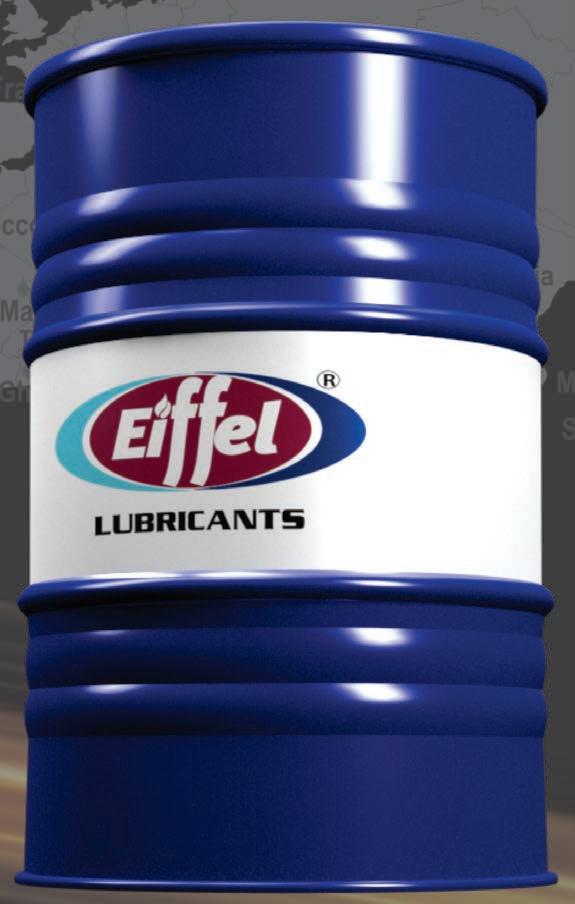
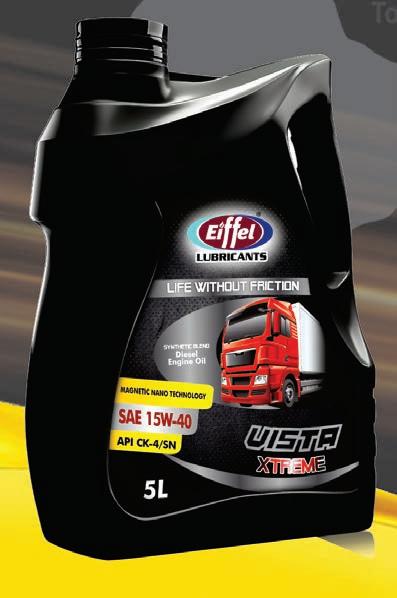
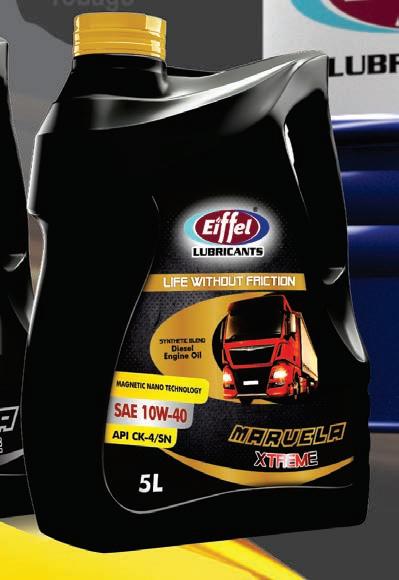
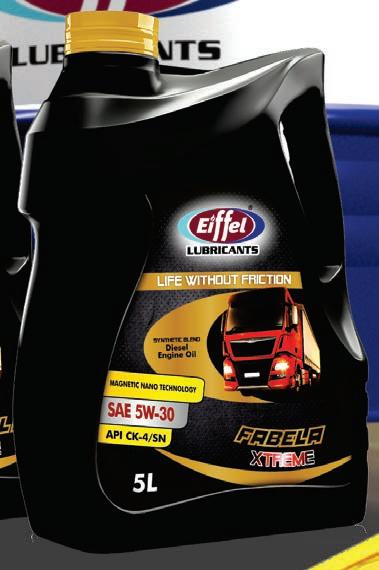
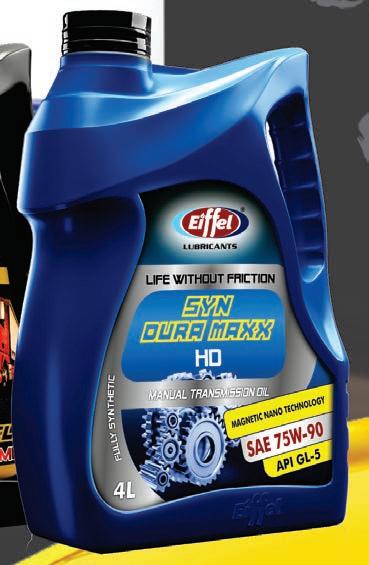

Opposite
Opposite middle: Norm ensured that the truck acknowledged Jack and Margaret Caldow, the big Diamond Reo’s original owners
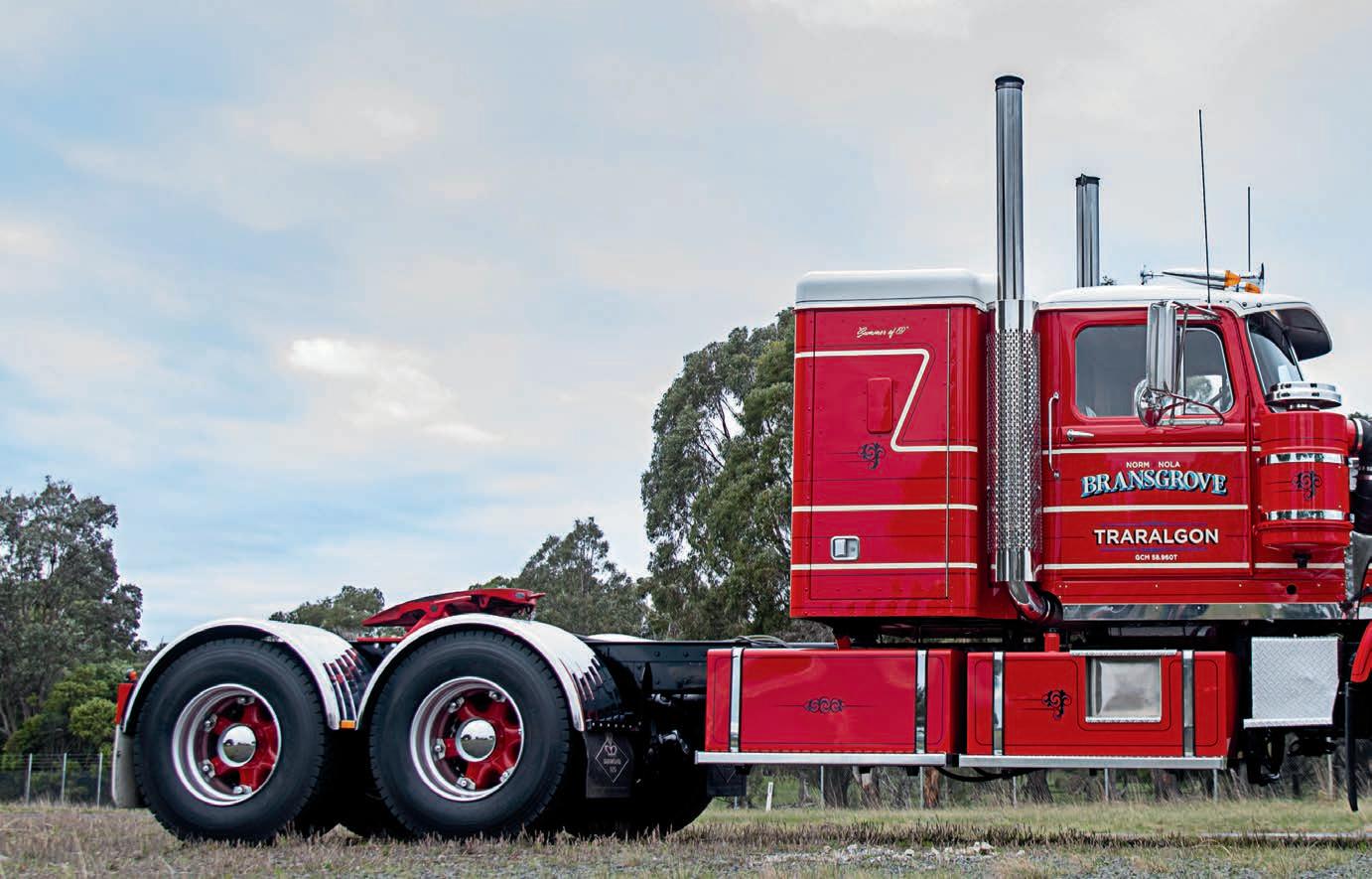
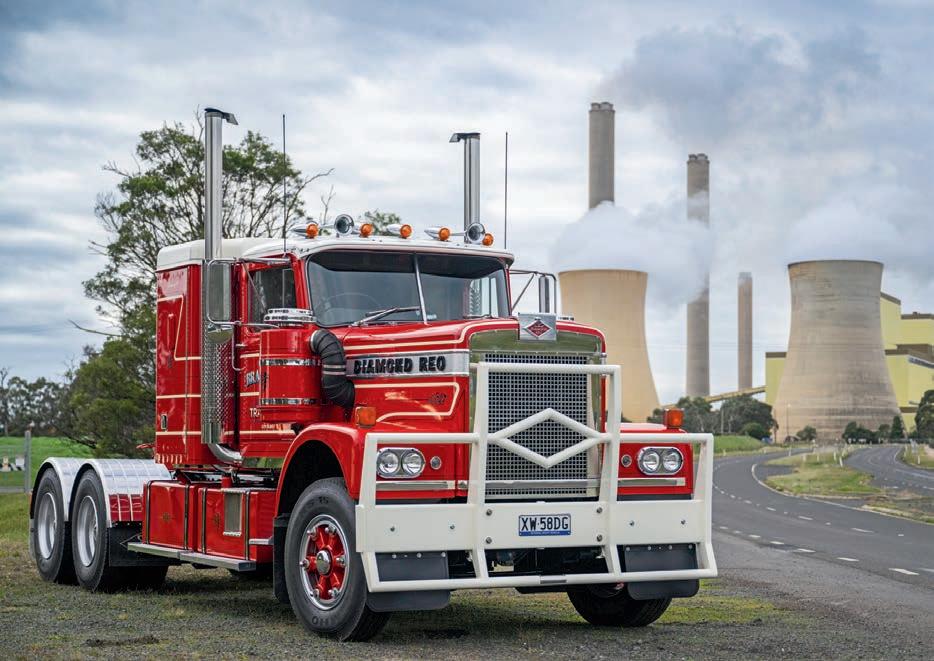
Right: The low line bunk and extra fuel tanks were added extras by Norm, making the overnighters just a little more comfortable
past Norm like he was going backwards. That experience left a mark on Norm, a mark that 51 years later would see him purchase the truck himself.
“I was driving a brand new C1950 ACCO with a 185hp V8 Cummins in it,” Norm recalls. “I could easily round up the Commers, Leylands and Bedfords but Jack’s Diamond Reo was next level!” The Jack he is referring to is Jack Caldow, the original owner of the Diamond Reo. Jack and his wife Margaret lived in Trafalgar at that stage and the Reo was used to cart veneer logs from around Orbost in Victoria’s East Gippsland to Melbourne.
Having his doors blown off as the Reo roared passed left a mark with Norm. “I think Jack and his Diamond took on a bit of a hero status for me after that day,” he says. “I wouldn’t say we were mates as such, but we were always welcomed in for a cuppa and truck talk when we were passing their place in Trafalgar.” Even after Jack and Margaret moved up to Queensland, Norm would make the effort to call in and talk trucks whenever he could.
The Diamond Reo was part of the Caldow family for nearly 40 years. It was only after the tragic death of Jack in a car accident in 2006 that the truck was sold to Malady Transport in Jack’s home town of Trafalgar. Norm admits it caused some mixed emotions with him.
“It was harsh reminder that Jack was no longer with us, but
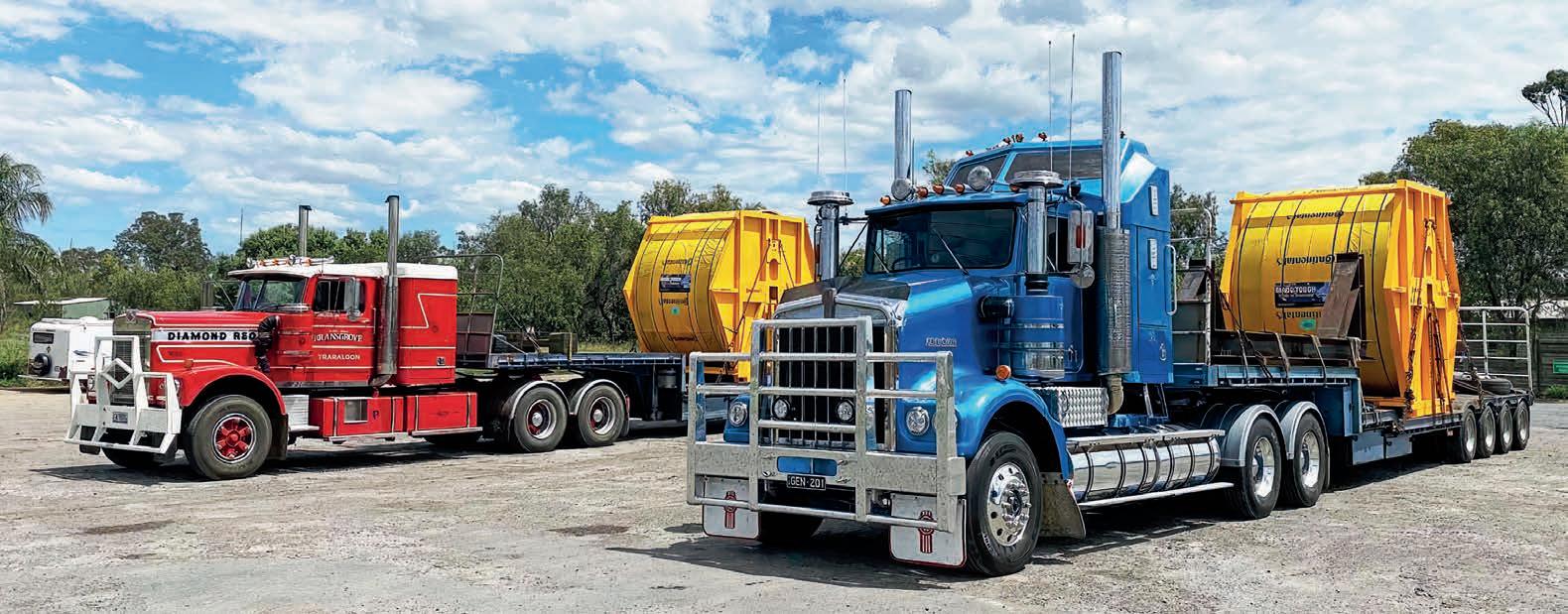
“A truck like this you can’t just leave it to sit and take it to shows.”
I was also delighted that Terry Malady had brought it back to Trafalgar,” Norm says. He also admitted that he was disappointed he hadn’t had the forethought or money to be able to do it himself.
Jump forward to 2020 and Norm has driven everywhere, carting everything, behind the wheel of every breed. Nola has spent years advocating for the transport industry and implemented numerous systems in the name of driver safety. The couple
have earned their retirement.
The first stop on the retirement road for Norm? “I went on Facebook, like I’d been threatening to do,” he laughs.
The original intention had merely been to keep up with family and maybe the odd motor bike and truck page. The unintended consequence was it also brought him back in contact with Jack’s Diamond Reo. The truck had been sold by Malady’s and had left Gippsland, but in 2021 thanks to the magic of Facebook Marketplace, Norm was the first cab off the rank when the truck came up for sale again. “I got a message from my son Michael about the truck being for sale,” Norm explains. “I showed Nola the post and her immediate response was, ‘You better get on it so you don’t miss out’.”

The couple made a successful offer, packed a lunch and headed towards Melbourne to the small town of Emerald to pick up the long lost Diamond Reo. After a quick check over it, they were behind the wheel and driving the big unit home. The truck then went straight to the workshop for a bit of TLC.

“The main jobs were re-bushing the back end, doing valves and airlines. A couple of brake boosters, inner chassis rails … stuff like that,” Norm says. “Most of it was for a roadworthy and my own peace of mind.”
Having already experienced 12 months of so-called retirement, Norm knew straight away he was going to work the old girl and as such fitted the low line sleeper, tidied up the interior and added two extra fuel tanks.
“A truck like this you can’t just leave it to sit and take it to shows. The engine would glaze over, it’s not good for it,” he states, adding that his intent was to help out his sons Michael and Steve. Both had followed in their father’s footsteps with successful transport companies. Michael and his wife Karen started Bransgrove Truckin, while Steve and his wife Tamara had taken over BransTrans Pty Ltd. Norm was happy to subbie to them, doing loads whenever he could.
Norm eased his way out of retirement, doing an easy little run from Traralgon to Melbourne to check for teething issues in the Diamond Reo.
Thankfully there was none. This meant it was time to load it up more and do a decent run, this time a decent 2500km trip all the way to Mackay in Queensland.
What made the Mackay run more important was Norm’s plan to call in and visit Margaret Caldow, Jack’s widow. He wanted to show her that Jack’s old truck was still going strong, working as hard as Jack had worked it for nearly 40 years.
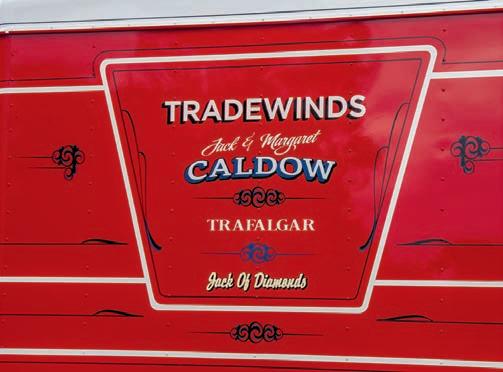
“It was a big surprise for Margaret, we’d let her daughter know we were bringing it by, but it was a surprise,” Norm says. “It was very emotional, she greeted me with the loveliest hug and wanted to climb in. She did well for a 91-year-old.”
Since that first big run, Norm and Nola have had the truck covering all areas of Australia. It is not a full-time gig for either the Diamond Reo or Norm and Nola. It is just a way of ensuring the world’s worst retirees get their fix of an industry they have both flourished in, as well as illustrating that the Diamond Reo means getting old doesn’t mean slowing down. That speaks for both the power couple and their truck when you think about it.
I wish I could rabbit on with all the tales I’ve enjoyed from my time with Norm and Nola but unlike this lovely couple and their Diamond Reo, I had to pull up stumps. So go enjoy the photos and keep a close eye in your mirrors, you never know when the Bransgrove Diamond Reo will come flashing by.

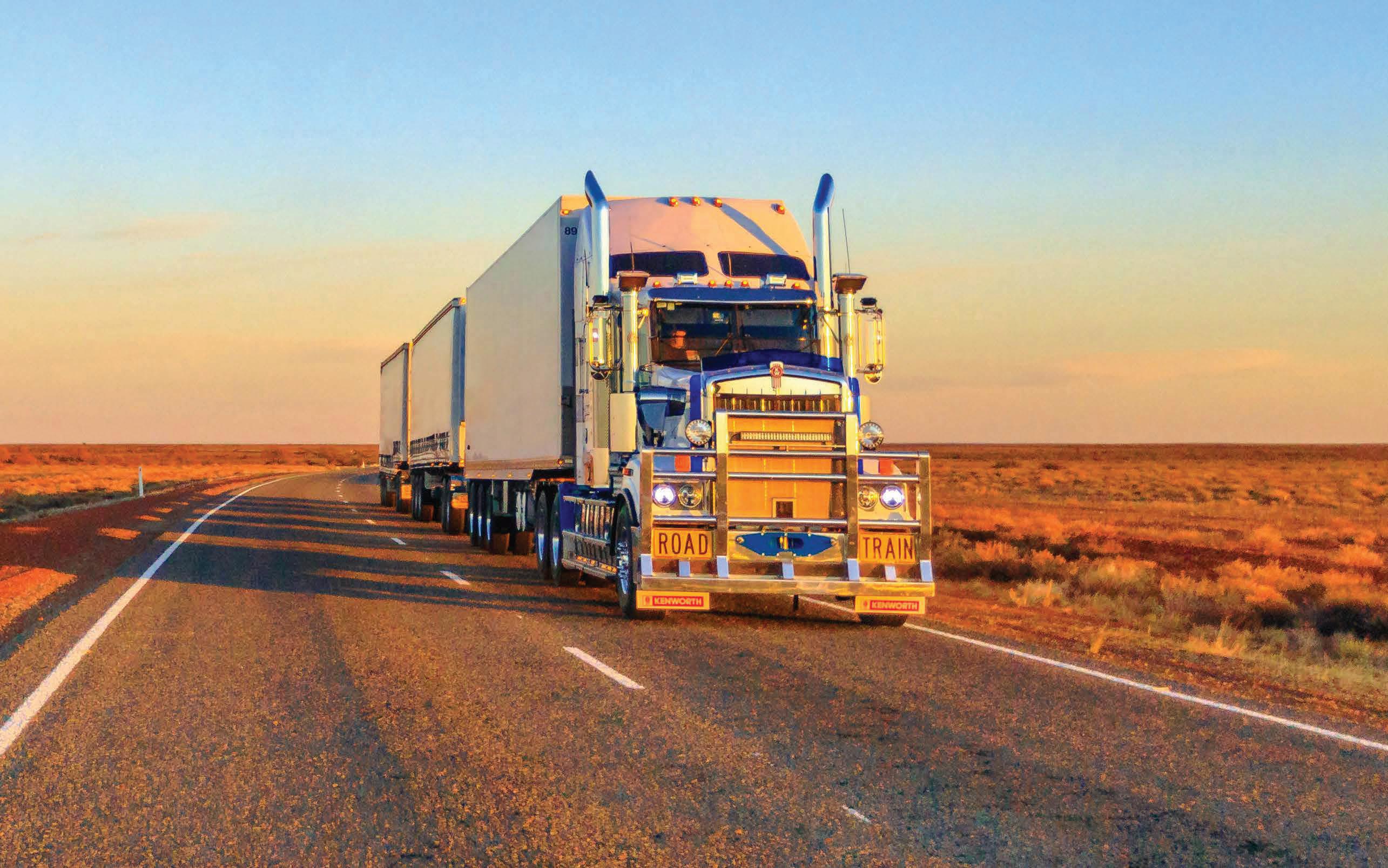





As Volvo Group Australia (VGA) approaches the end of 2023, UD Truck’s 50th year on Australia soil, it seems timely to reflect on UD’s arduous Lap of the Map tour that took place just shy of a year ago.
Now, nearly nine months after completing the 15,500km journey at the wheel of the UD Quon CW 25 360, Matt Wood, public relations and media manager at VGA, reflects on the mammoth trip.
“So, it turns out that the Quon was very fuel efficient,” Wood says. “At a gross weight of over 22,000kg the truck averaged 2.9km/l.
“Unlike the truck which had a thrifty appetite, I ended up succumbing to the temptations of road food resulting in a higher-thanaverage steer axle weight by the end of trip!,” he smiles.
“In all seriousness, this truck never ceased to amaze. Even on some of the worst outback roads I encountered, from broken tarmac to corrugated dirt, the trusty Quon delivered a sure footed and comfortable ride.
“While a 6x4 rigid isn’t usually the first vehicle to spring to mind when it comes to long distance transport, this truck proved that long hours in the saddle don’t have to mean a sore back or aching limbs,” Wood points out.
Following National Highway 1, the trip was inspired by UD Trucks founder Kenzo Adachi’s legendary 1939 test drive where he embarked
BELOW: The Map Lap saw stopovers at some of Australia’s most iconic landmarks along the way
September 16 & 17, 2023. Clarendon, NSW
Held at Hawkesbury Showground, Racecourse Road, Clarendon. Includes Kenworth Klassic. Two day event including vintage trucks, restored tractors, stationary engines, vintage cars, bikes, antique tools. Friday night welcome BBQ, Saturday night dinner (bookings essential), Sunday tractor and vehicle trek. Food and drinks available all weekend. No alcohol or dogs. Charity funds raised will go to Little Wings.
For further info see the Facebook page at www.sydneyantiquemachineryclub.com or phone Steve Muscat on 0418 453 203.
September 23, 2023. West Kempsey, NSW
Hosted by the North Coast Trucking Social Club, the parade will start at 9.00am from Tozer Street, West Kempsey, bound for the Kempsey Showgrounds via Kempsey CBD. Includes free kids entertainment, petting farm, dummy spitting comp, male and female truck pull, charity auction, trade displays and market stalls. Entry $5 adults, children free. Bar facilities, no BYO. Plus charity dinner. All proceeds to local charities.
For further info see the NCTSC Facebook page, email nctsc@outlook.com.au or phone Trent Lee on 0439 455 797, Peter Scott on 0417 678 578, Kate Jones on 0403 544 578.
September 27 to 29, 2023. Gold Coast, Queensland
on a gruelling 3000 kilometre journey to prove the ultimate dependability of his new vehicle.
While Wood’s lengthy journey reinforced the dependability and reliability of the UD in Australia, the heart of this journey was undoubtedly the people that Wood visited along the way, that built their business on UD Trucks and that have become a part of the UD family over the years.
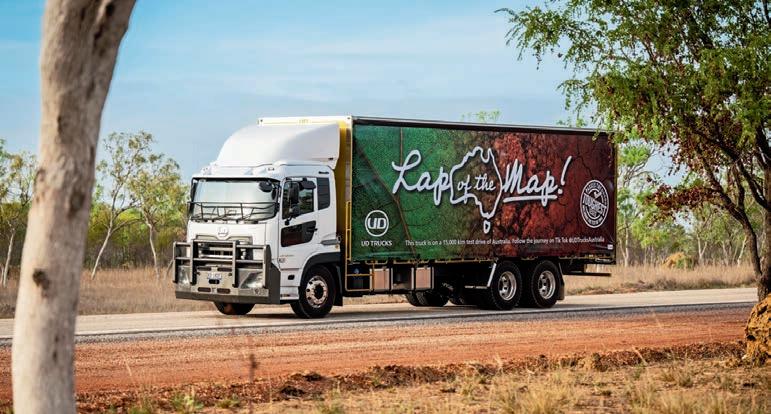
“It was a great opportunity to meet the faces of UD, customers and dealers off the beaten track that built the brand here in Australia and made it what it is today.”
From broken outback highways and rutted dirt tracks to the CBDs of major capital cities the 6x4 Quon faced all challenges thrown its way with aplomb.
The mighty Quon survived searing heat and the humidity of the tropical far north on the shores of the Gulf of Carpentaria as well as the dry and harsh terrain across the vast reaches of Australia.
In fact, the truck had to deal with virtually every climate system that the Australasian continent had to throw at it.
Far from being just a round town PUD vehicle, the 6x4 UD proved itself a capable cross-continental hauler.
“We see the UD Quon delivering safety, reliability, comfort and efficiency for our customers day and day out,” says Lauren Pulitano, outgoing vice president UD Trucks Australia.
“However, taking our truck into the wilderness to visit some of the people that helped build our business over the last five decades allowed us to take the road less travelled and tell their genuine stories.

“Stories of hard work, dedication, and trust. Stories that have made the Australian transport industry and UD Trucks what they are today.”
The National Road Transport Association (NatRoad) is pleased to invite members to the NatRoad National Conference 2023, to be held at the RACV Royal Pines Resort, Benowna on Queensland’s Gold Coast from September 27 to 29. Includes the ‘NatRoad Parliament’ and the NatRoad Awards presented at the Gala Dinner.
For further info see the website at www.natroad.com.au or the Facebook page at www.facebook.com/natroadaustralia
September 30 & October 1, 2023. Gatton, Queensland
The 2023 Lights on the Hill Memorial Convoy is planned to be held on October 1 en route to Gatton Showgrounds with the Memorial service to be held on October 2 at the Lake Apex Memorial wall. Live music at the showgrounds includes The Roadhammers (from Canada), Haylen Jensen, Kerry Kennedy, Jeff Brown, Open Season Band and more.
For further information go to the website: lightsonthehill.com.au or see the Facebook page at www.facebook.com/lightsonthehillmemorial
October 16 to 18, 2023. Melbourne, Vic.
Held at the Automotive Centre of Excellence (Kangan Institute), Docklands, Vic. The trucking industry’s premier national gathering of business owners, professionals, mechanics, technicians, apprentices, fleet managers and technical fleet professionals. Presented by the Australian Trucking Association (ATA) and sponsored by the Paccar and Dealers Industry Fund. Includes the TMC Expo and Castrol Vecton Awards.
For further info see the ATA’s TMC website page: new.truck.net.au/tmc
November 4, 2023. Redcliffe, Qld
The Brisbane Convoy for Kids will form a Convoy of Trucks and Transport Support Vehicles, travelling from Paradise Rd, Pallara across the Gateway to the Redcliffe Showgrounds for a Family Fun Day. Includes Trailer of Hope, truck show, bikes and other vehicles, live entertainment from Adam Harvey, auctions, food stalls, free kids rides, evening fireworks. Truck registrations open at 6am on November 4. Redcliffe Showgrounds gates open at 9am. Admission $25 adults, concession and kids $15.
For further info see the website at www.brisbaneconvoyforkids.com.au or the Facebook page www.facebook.com/BrisbaneConvoyForKids
November 11, 2023. Mullumbimby Showground, NSW
Held in conjunction with the annual Mullumbimby Agricultural Show. Truck registrations open from 9am at the Mullumbimby Industrial Estate off Manns Rd. Drivers to register their vehicles before the truck parade through town at 11am, travelling through town to the showgrounds. All the attractions of a country show including sideshow alley, rides, food vans, full bar facilities and live music. Other features include horse and cattle events including trotting.
For further truck show info see the registration form at www.mullumbimbyshow.org. au or phone Mark on 0427 634 903 or email wardysmachinerycentre@gmail.com

Minor Gold
MGM
www.minorgoldmusic.com
Minor Gold, a collaboration between singersongwriters Tracy McNeil and Dan Parsons, appear to have purists confused over the classification of the duo’s self-titled debut release. While the 10-track album topped the ARIA Jazz and Blues Chart, it has also scored plenty of airplay on country music radio while often being referred to as “indie folk”. Whatever the genre, Canada-born McNeil and Brisbane’s Parsons have combined their talents to great effect here. With its acoustic guitar backing, the album’s strong first single ‘Mona Lisa’ is a lesson in harmony. The quiet ’Cannonball’ is another brilliantlypenned song, and Parsons takes the lead vocal-wise on ‘Note To Self’, a mid-paced somewhat rock-styled track. The pair lift the tempo further on ‘Don’t Change’, one of the album’s best.

Hozier
Columbia/Sony
hozier.com

Big voiced Irishman Hozier scored well in 2013 with his soulful rock single ‘Take Me To Church’ and his self-titled debut album. Wasteland Baby!, his second release was awarded gold status in the US. Hozier had a four-year break after that (thanks to the pandemic), using that time to write new material for Unreal Unearth his third album, including the single ‘Eat Your Young’. Despite the title, that superb track is more of a cooking lesson. He inserts an ambient instrumental track, ‘Son Of Nyx’ as a lead-in for ‘All Things End’, a song about starting afresh and one of the many strong ballads here. There’s regret on the powerfully dramatic ‘Francesca’, and Hozier recruits US pop singer-songwriter Brandi Carlile for a duet on ‘Damage Gets Done’, another sure-fire hit. Other standout tracks include the lively ‘Anything But’, and the big sounding finale, ‘First Light’.
BLOOD RED
Busby Marou
Sony Music
www.busbymarou.com
Greta Van Fleet
Republic Records/Universal gretavanfleet.com
Australian duo Busby Marou

(Thomas Busby and Jeremy Marou) are back with their much anticipated fifth album Blood Red. These two are songwriters of the highest calibre and, in combination with their vocal harmonies, have delivered 11 classy new tracks. The duo’s soft-rock sound could be compared to the music that has emanated from the US West Coast over the years, notably on the opening track ‘Crazy Like That’, a song about self examination. ‘Smile From A Stranger’ is a gentle acoustic number, while on ‘Where I Wanna Be’, another catchy track, they sing of life on the road. Busby Marou tell of skipping the rat race on ‘Bloodstream’, they deal with drought on the country-flavoured ‘Crying’, and there’s an air of optimism on ‘Everything Is Beautiful’. Blood Red –an album of killer tracks and no filler.

Bloodlines Music mushroomstudios.com
The soundtrack to the doco of the same name, Ego: The Michael Gudinski Story is a three-CD boxed set (also available on streaming services) containing 44 songs from the Mushroom Records vault of classics, rarities and forgotten gems. This musical history lesson and tribute to the late Michael Gudinski takes us back to ’70s classics such as Daddy Cool’s ‘Come Back Again’ and Billy Thorpe’s ‘Most People I Know (Think That I’m Crazy)’, the latter recorded live at Sunbury. Skyhooks are well represented with four tracks, including ‘Horror Movie’. Subsequent decades include tracks from Hunters & Collectors, Paul Kelly and Jimmy Barnes – Kylie Minogue also gets a run! Disc 3 moves into the “noughties” with The Temper Trap’s ‘Sweet Disposition’, Vance Joy’s ‘Riptide’ and Youth Group’s ‘Forever Young’. There’s also a sprinkling of international acts, including UK superstar Ed Sheeran.
US rock group
Greta Van Fleet's third full length album
Starcatcher sees the Michiganbased band returning to roots on these 10 tracks. Led by the three Kiszka brothers, the quartet’s music echoes the sounds of years past. Anyone who remembers ’70s band Pavlov’s Dog and lead singer David Surkamp's distinctive sound will draw comparisons with Greta Van Fleet’s Josh Kiszka’s soaring vocals. Guitars rule throughout Starcatcher, although its keyboardist Sam Kiszka who kicks off the opening track ‘Fate Of The Faithful’ before it moves to progressive rock. ‘The Indigo Streak’ is equally dramatic, in contrast to ‘Meeting The Master’ which starts as a quiet ballad before Jake Kiszka unleashes his repertoire of guitar licks. In addition, there’s a distinct Led Zeppelin influence on some tracks.

DAN SULTAN
Dan Sultan
Liberation Records
www.dansultan.com
D.C. Maxwell Danger Collective Records
www.dc-maxwell.com


The rich vein of music coming out of New Zealand continues with alternate pop artist D.C. Maxwell’s debut album Lone Rider. Previously the lead singer of punk band Roidz, a threeyear hiatus led Maxwell to embark on a solo career. He delivers a powerful story song on ‘Out Stealing Horses’, the orchestra, choir and Maxwell’s emotive vocals taking the track into soundscape territory. The big production continues on ‘I’ve Been Wrong’ as he attempts to repair a shaky relationship. There’s a language warning for ‘The Last Stand Of The Killer’ on which Maxwell delivers a Pogues-like vocal, and returns to commercial territory on ‘The Leading Man’. Elsewhere, Maxwell’s explorative art takes him to an array of musical styles on tracks such as ‘I’m With You’, a Brit-pop type ballad.

The Casanovas Rubber Records www.thecasanovas.com.au

As Dan Sultan suggests, his new self-titled and fifth studio album, is a journey of personal evolution.

The Australian rock singer-songwriter kicked goals early in his recording career, scoring two ARIA awards with the 2010 album Get Out While You Can. Dan Sultan is likely to equal or surpass that release. ‘Wait On Love’, with its Beatle-ish production and beat, is an outstanding example of Sultan’s songwriting prowess. The up-tempo ‘Won’t Give You That’ is another with radio-friendly credentials, and fellow singer-songwriter Julia Stone joins Sultan for the duet ‘Fortress’, another standout. The mostly piano-backed ‘Story’ also boasts a strong melody line as Sultan shows off his strong, earthy vocals. He shifts gears on ‘Ringing In My Ears’, a track that’s well suited to a live audience. Sultan will be touring the eastern states from September 30.
Like almost everyone else in the Melbourne music scene, hard rockers
The Casanovas were in hibernation during the pandemic, but still managed to release their fourth album Reptilian Overlord in the latter part of 2020. Back to normality, the trio have emerged with Backseat Rhythms, a high octane 10-track album. The Casanovas teased with rockin’ radio singles ‘You Want Something From Me’ and the riff-filled ‘The Devil In Me’. Drummer Brett “Wolfie” Wolfenden, a recent recruit, bangs out the intro for ‘Baby Wants To Get Down’ before lead singer-guitarist Tommy Boyce adds his usual gusto. Wolfie is at it again on ‘Her Kiss’, a track that starts as mid-paced rock before Boyce takes it to a tumultuous finale. Importantly, Ron Nevison (who has worked with the likes of The Who) on the mixing desk has added a new dimension to The Casanovas’ sound.
As well as being involved in road transport media for the past 24 years, GREG BUSH has strong links to the music industry. A former Golden Guitar judge for the Country Music Awards of Australia, Greg also had a threeyear stint as an ARIA Awards judge in the late 1990s and wrote for and edited several music magazines.
The Pleasures
MGM thepleasuresmusic.com

The Pleasures is a musical union of two Golden Guitar winners in Catherine Britt and Lachlan Bryan. Incidentally, the newly-formed duo’s name was inspired by an Austin, Texas brothel. Hence, there’s a touch of bawdiness throughout Beginning Of The End, their debut album. ‘Paranoid’ is pure country rock on which Bryan shows off his guitar skills. There’s a swamp rock sound to ‘Howlin For My Darlin’, the duo take time out on ‘Three Star Hotel’ and then hit the honky tonk bar on ‘I Fell For It’. Britt and Bryan alternate vocals on the argumentative, bluesy ‘Every Story Has Two Sides’ and settle their differences on ‘You Made Another Woman (Out Of Me)’, a traditional country track. There’s a solid one-two country beat to the impressive title track, but arguably the album’s standout is ‘Homewreckers’, another swampy song. Great songs, great album.

Mikhail Laxton
Acronym Records/ Howling Turtle mikhaillaxton.com




Singer-songwriter


Mikhail Laxton, now based in the city of Ottawa, Canada, is originally from the Far North Queensland town of Mossman. The proud KuKu Yalanji man recorded this impressive new self-titled album in Canada, but refers to his origins on the Americana rock song ‘Mossman’ as he sings of paradise and “where he wants to be”. Paxton sings of life’s highs and lows throughout the 12 new tracks, moving to a melancholy waltz on ‘Dying To Let You Go’ before hitting the highway on the soft-rock track ’Leaving You With Less’. There’s regret over a failed relationship on ‘Maybe It’s A Good Thing’, and he sings the blues on ‘Slow Motion’ and again on ‘Streams’, steel guitar a highlight of the latter. ‘It’s Your Time’ is a feel-good song, and he goes it mostly alone on the paredback track ‘You Come To Me’, rounding out an album that simply oozes class.

Due to the current demand for vinyl records, reissue specialists Craft Recordings has announced that two more long-out-of-print R.E.M. titles from the US band’s celebrated career are now available on 180-gram vinyl.
The two titles – 2001’s Reveal and 2008’s Accelerate following the earlier vinyl release of the charttopping Around The Sun from 2004, and the band’s final album, 2011’s Collapse Into Now .

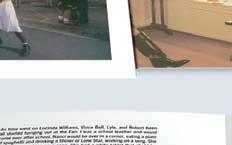
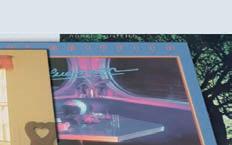
Reveal is available in a limited sky-blue variant, while Accelerate is pressed on black and white marble vinyl.
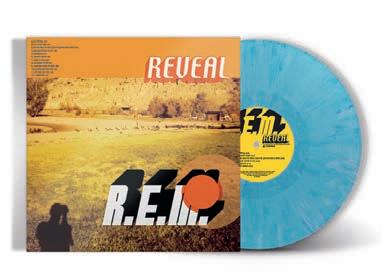

Released in May 2001, Reveal marked R.E.M.’s 12th studio album and their second following the departure of drummer Bill Berry. Co-produced with frequent collaborator Patrick McCarthy, the album found the band embracing their classic sound after the electronic explorations of 1998’s Up
Among the highlights is the popforward single, ‘Imitation of Life’ which earned the group a Grammy nomination and was a Top 10 hit in the UK, Canada and multiple European countries.


Other favourites include the sublime ‘All the Way to Reno (You’re Gonna Be a Star)’ and the melancholic ‘I’ll Take the Rain’, while dreamy tracks like ‘Beachball’ and ‘Summer Turns to High’ offer a stylistic nod to the Beach Boys.
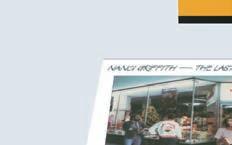




R.E.M. called it a day in September 2011, six months after the release of what was to be the band’s final album Collapse Into Now
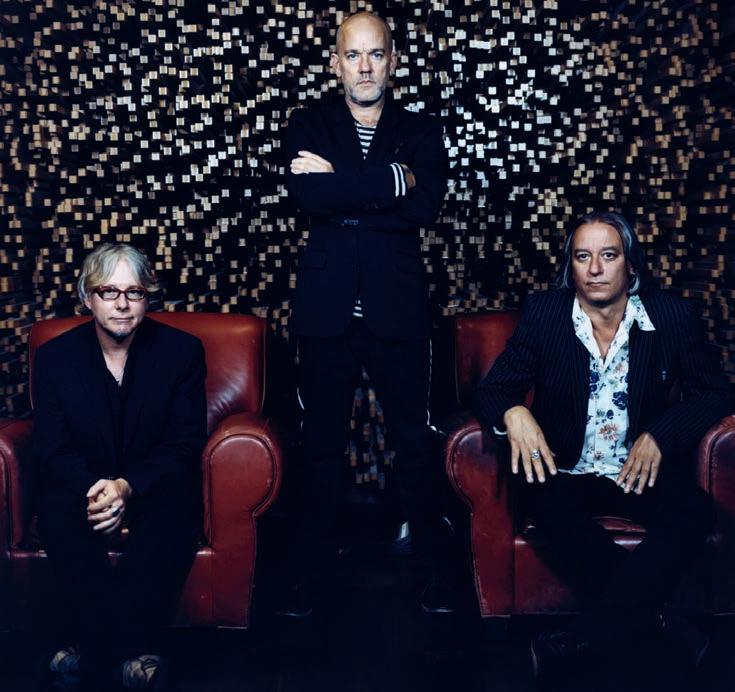
R.E.M.’s penultimate studio album
Accelerate was created largely in a live setting. The band recorded the album in Ireland, Vancouver, and Athens, Georgia with producer Jacknife Lee. Accelerate reflected that raw sense of
immediacy as the band wrote some of their hardest and most purposeful songs in years. Rolling Stone magazine, declared Accelerate to be “One of the best records R.E.M. have ever made”.
Mary Gauthier, who also shares her admiration for Griffith in heartfelt liner notes.



, ,
In another Craft Records re-release, the late US singersongwriter Nanci Griffith is being honoured with a boxed set version of her first four albums under the title of Working In Corners on vinyl, CD and digital. The albums in question are Griffith’s 1978 debut There’s a Light Beyond These Woods , 1982’s Poet in My Window 1984’s Once In A Very Blue Moon and 1986’s Grammy-nominated The Last of the True Believers Rounding out the collection are rare photos and ephemera, plus liner notes by Holly Gleason ( Rolling Stone , Spin , New York Times ) and producer Jim Rooney, who worked closely with Griffith during this period. Rooney, who co-produced the box set, also weaves in memories from a myriad of Griffith’s friends, peers, and collaborators.




Working In Corners is released on September 8 as four-CD and fourLP vinyl box sets, while There’s a Light Beyond These Woods , Poet


In My Window , and Once In A Very Blue Moon will make their longawaited return to digital platforms.







On September 22, Griffith’s
music will also be celebrated through the all-star tribute, More Than a Whisper: Celebrating The Music of Nanci Griffith via Rounder Records on vinyl, CD, and digital. The album features Griffith’s friends, collaborators, and fans interpreting her most beloved songs, including Emmylou Harris, Lyle Lovett and Kathy Mattea, Shawn Colvin, John Prine and Kelsey Waldon, Sarah Jarosz, Steve Earle and
Recorded over several years in studios across North America, More Than a Whisper also includes stirring contributions from Brandy Clark, Billy Strings and Molly Tuttle, Iris DeMent, Todd Snider and Aaron Lee Tasjan with Patty Griffin, while Ida Mae and The War And Treaty both appear exclusively on the expanded CD, digital, and HD versions of the album.
All proceeds from More Than
A Whisper will benefit Nashville’s Cumberland Heights, a non-profit treatment facility offering hope and healing to those affected by drug and alcohol addiction.







Organisers of the North Coast Petroleum-sponsored Casino Truck Show expected close to 450 trucks to turn up for its big August 5 event. Delight turned to surprise when that number was easily surpassed at the NSW Northern Rivers’ town’s big annual event. Warren Aitken reports
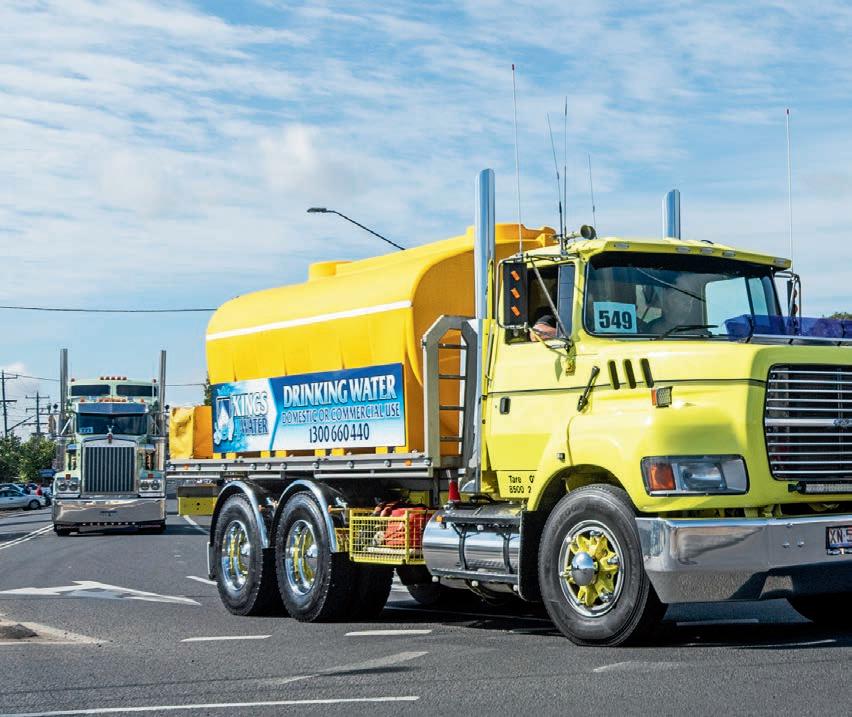

What can you say about the North Coast Petroleum Casino Truck Show that hasn’t already been said. Well, I could quote a few of those in charge of the event, that would be a great way to start. One of the most common acronyms flying around on the very foggy August morning was ‘WTF’. It came from those at the registration tent. It came from those marshalling the trucks into the small Casino industrial area. It came from the countless truck spotters that had made their way to the Northern Rivers town. It was the reaction of thousands of people that lined the streets to watch the kilometres long convoy. And It was also the reaction of the man who has been nursing this show from its infancy 10 years ago, Darren Goodwin.










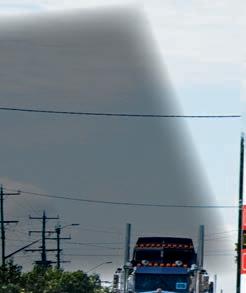

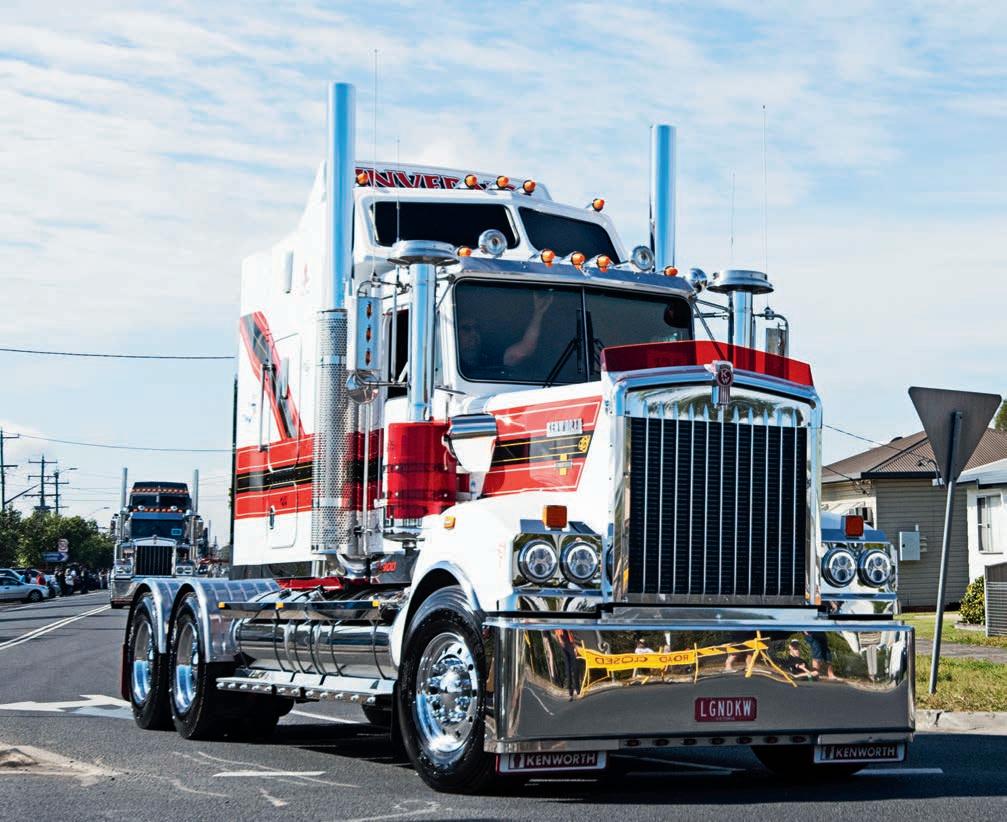






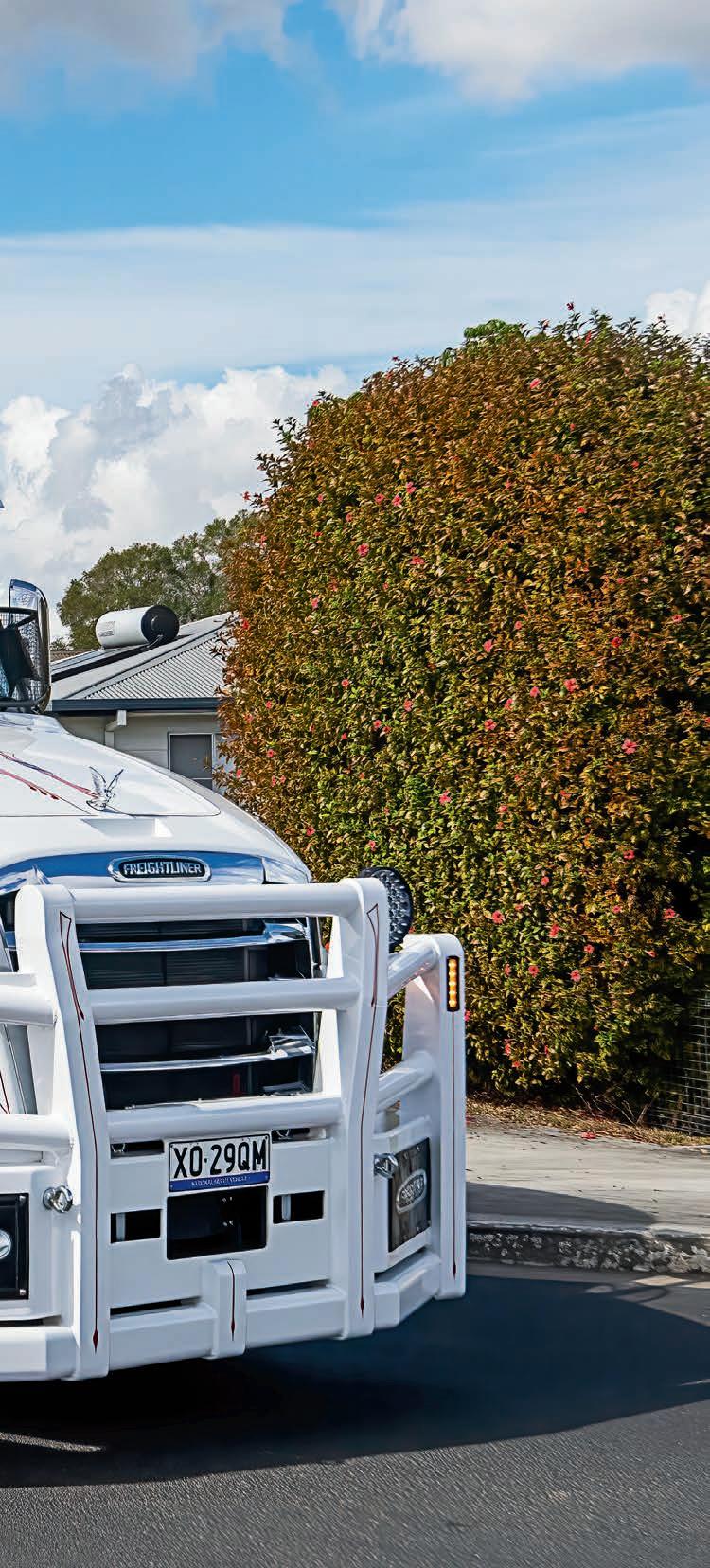
“The eerie silence of the country town was broken as trucks began firing up.”
Top, L to R: This stunning Pete had the AC/DC theme running through it and with speakers mounted in the back wall, they had it blasting out as well; Corrindi Beach-based Taylors Holdings had their two stunning Kenworth 900s. These things are simply amazing in person; One of the coolest trucks on the day was this beautifully restored Western Star of Loys Transport
Above, L to R: Size doesn’t matter when you are this cool. Check out the Graham’s Quarry staff car; The front yard of the local campground was littered with trucks on the morning of the Casino Truck Show; Jayne Hallett was tasked with the final touches on the Express Furniture Kenworth
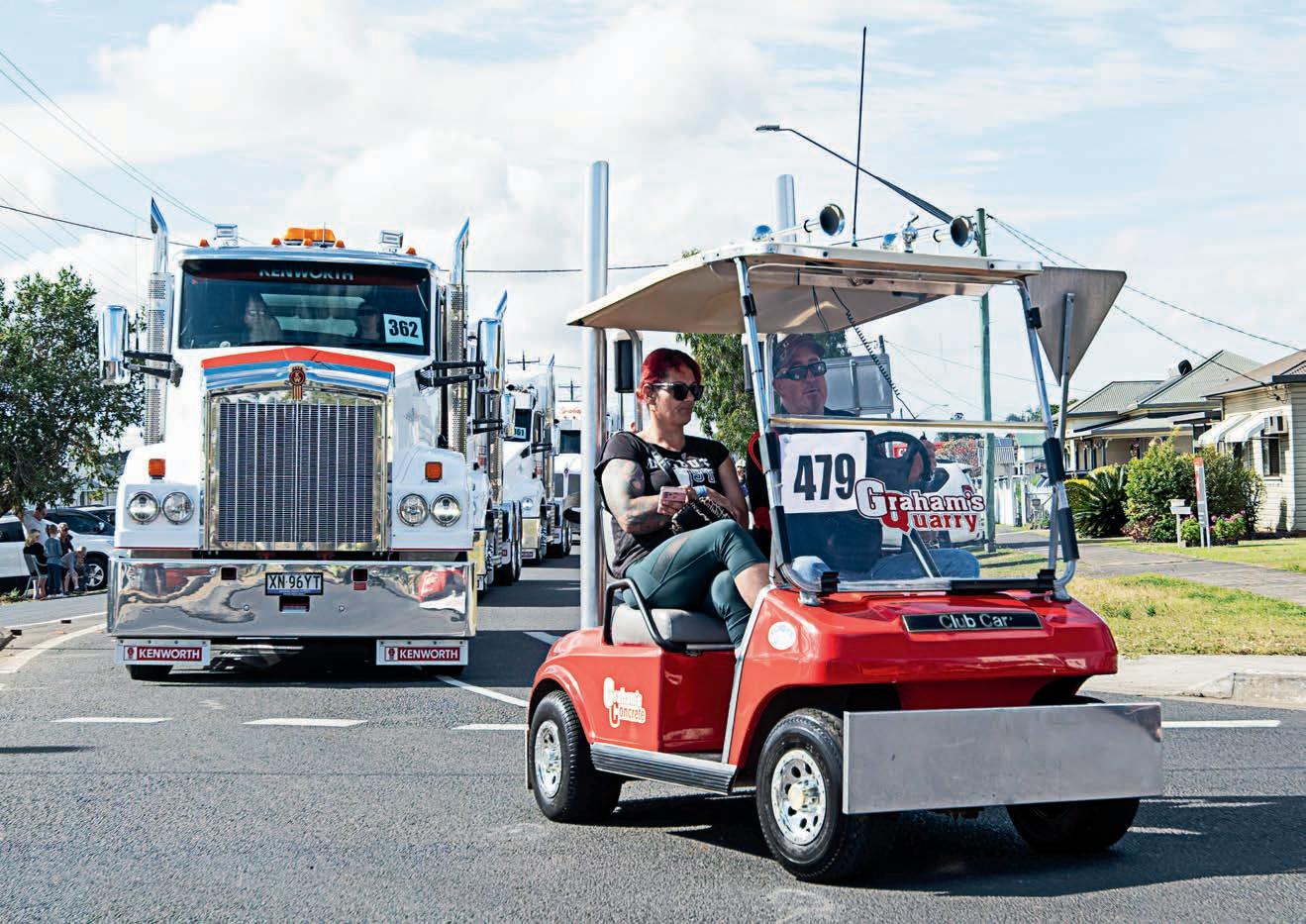
Left: Brisbane-based Exodas Transport was another at the show in force, the company’s stunning trucks spending their day off in Casino
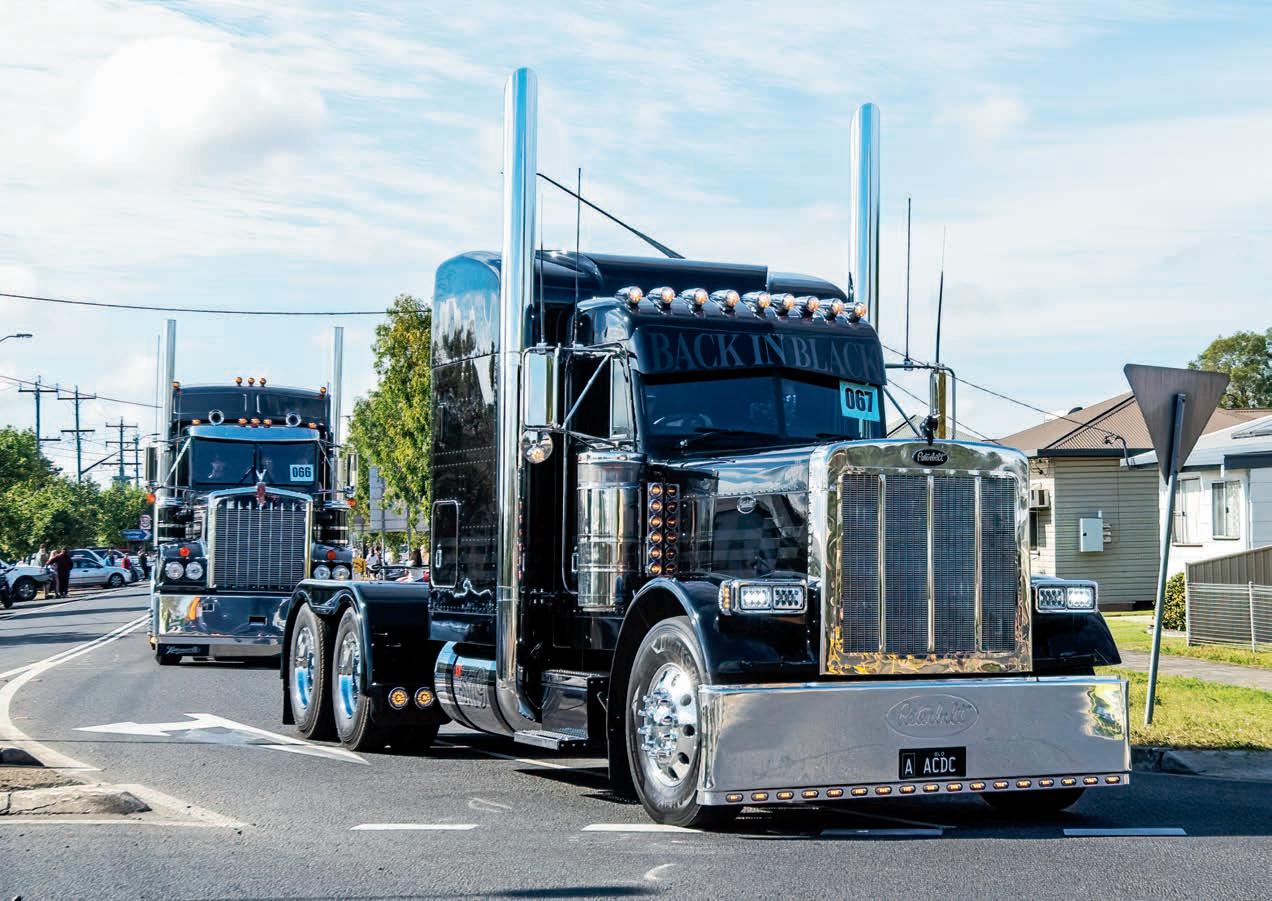
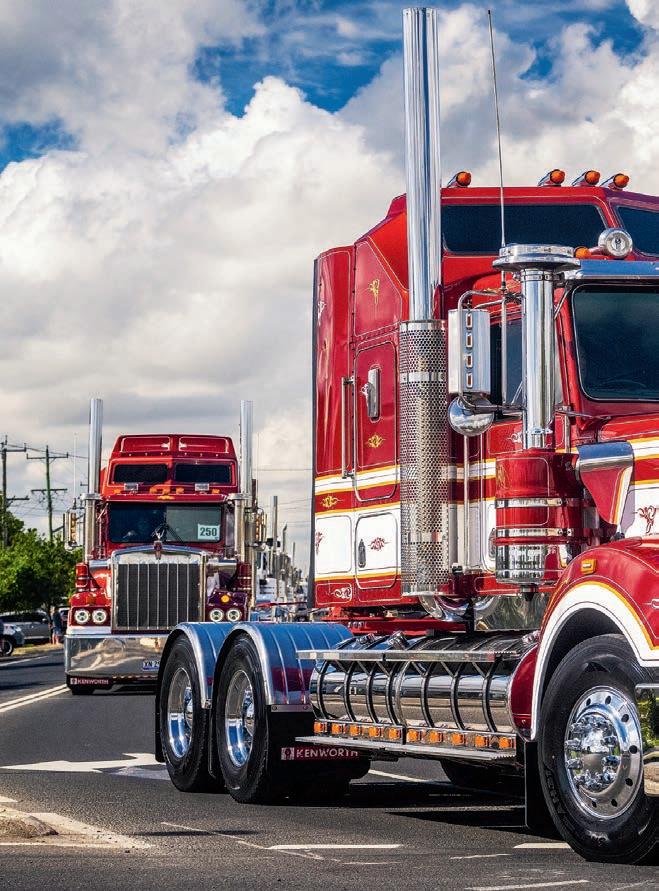
Opposite bottom: As usual, Fred’s Transport put on a display that made everyone green with envy

The reason for such a reaction were the 600-plus trucks that turned up. “Based on our projected growth rates we were hoping to get around 400 to 450,” Darren says.
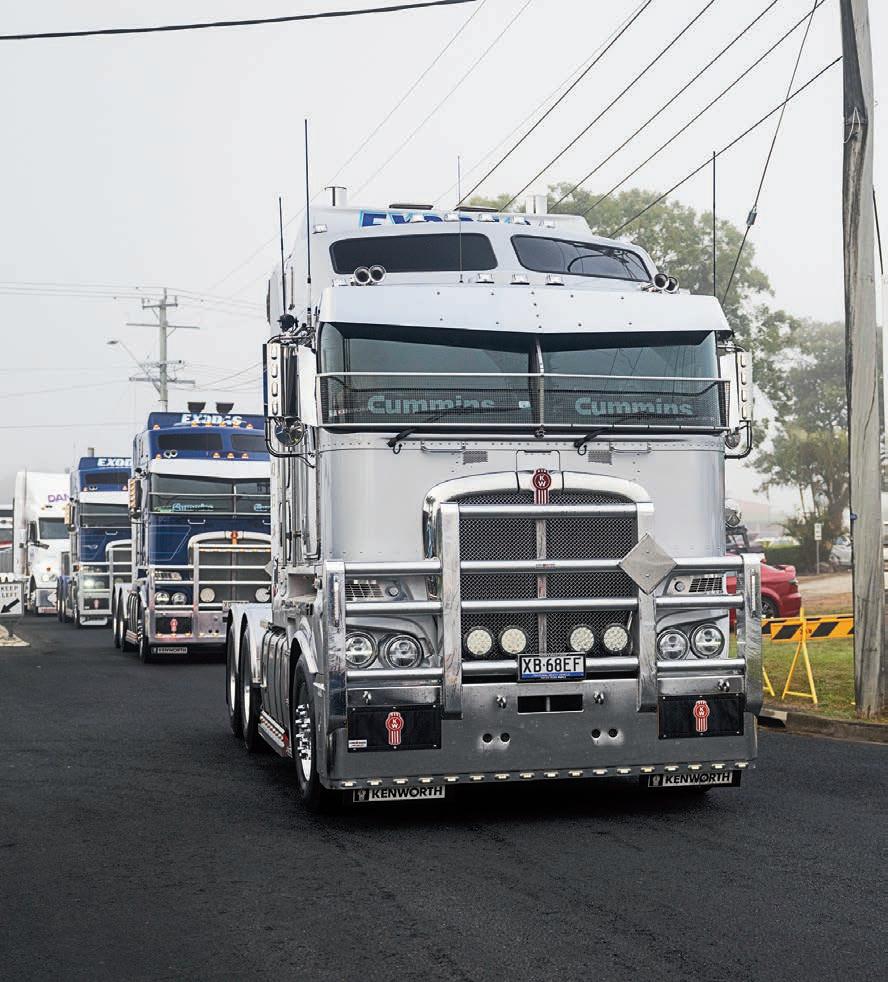
The 2022 event packed Casino with 375 trucks, up from a previous 251 in 2019 and 207 in 2018. Therefore, it is quite understandable that ‘WTF’ was the reaction to seeing the registration tent having to break out the black marker and white paper to add more numbers once the pre-printed 499 flew past faster than an old school SAR on ‘Sesame Street’.





















“When we printed out the registration number we only printed out the number 500 as a joke to stress Darren out,” admits one of the volunteers staffing the registration tent. In actual fact, they needed to keep adding numbers with the officially registered figure reaching 580. Add into that the 40 trucks that either missed the registration cut-off or were parked up on display already – and that gives you a total of 620 trucks.
With the magnitude of growth now established, let us have a look at how the record-breaking day panned out. Like any good journalist, I was on hand at an ungodly hour to watch one of Australia’s top regional truck shows ramp up. I had booked accommodation months in advance as the truck show packs the town out. It also packs out motels in all the surrounding towns as well.
By the time the clock ticked over to 6am, there was a haunting layer of fog engulfing the town. As I drove through Casino it added to the atmosphere as big shiny trucks appeared to unveil themselves as I drove closer. Like slowly pulling back the curtain on a stage show, every

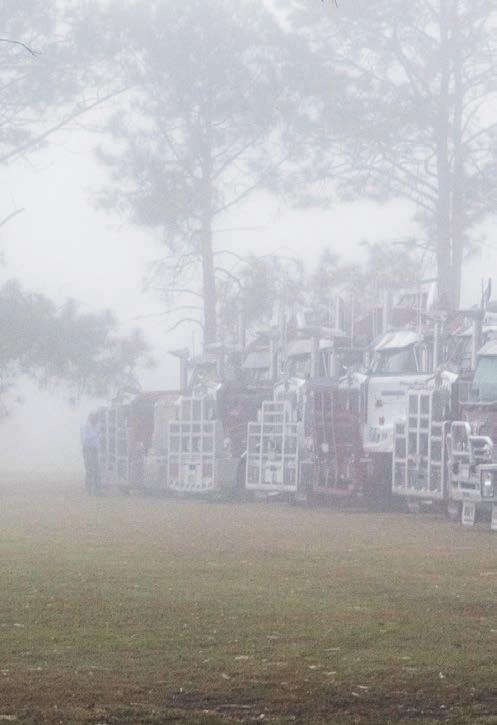

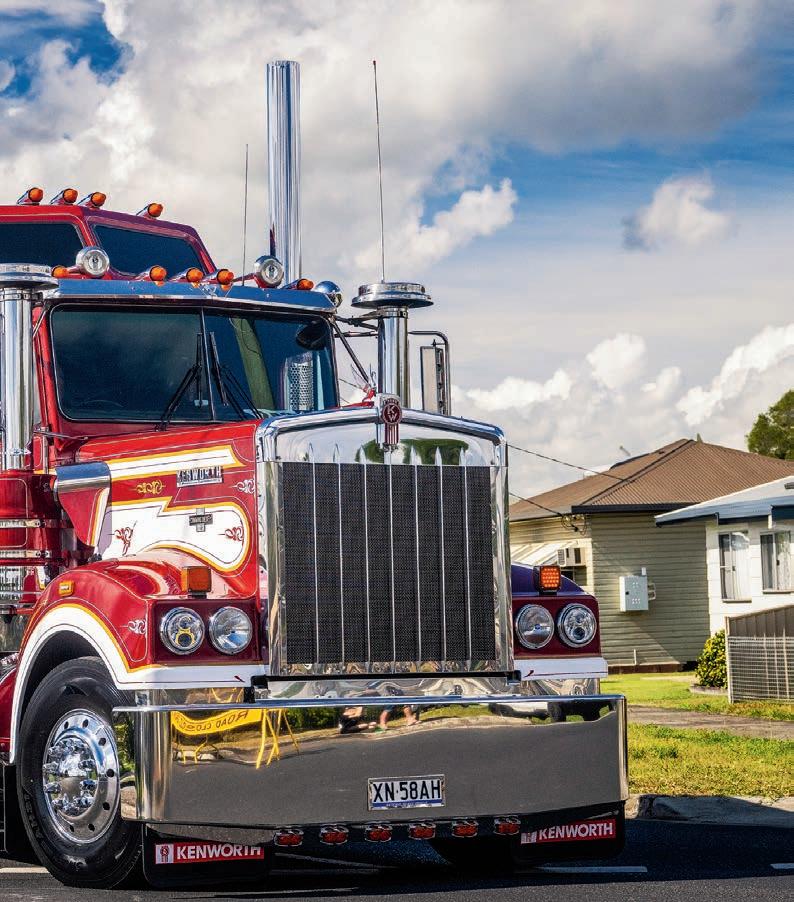






























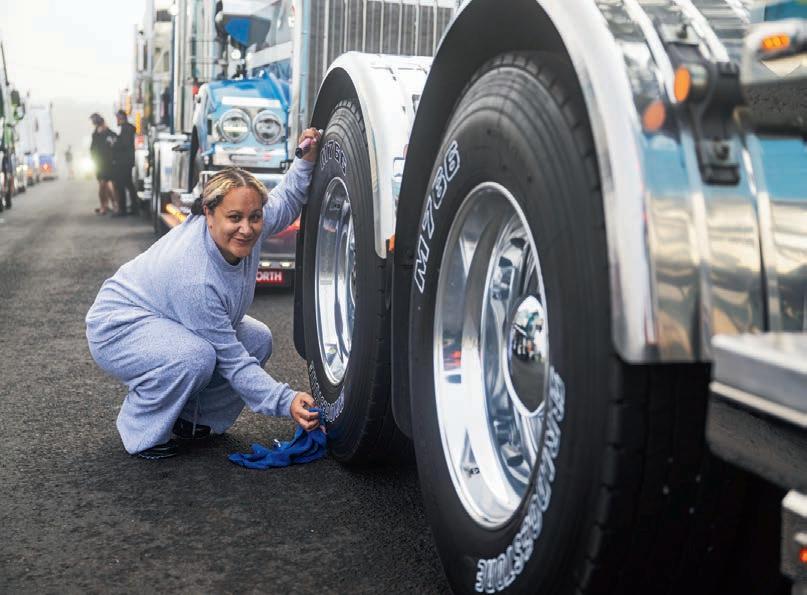
metre I drove forward revealed more and more amazing equipment. The eerie silence of the country town was broken as trucks began firing up and heading towards the outskirts of town where the registrations and marshalling would take place.
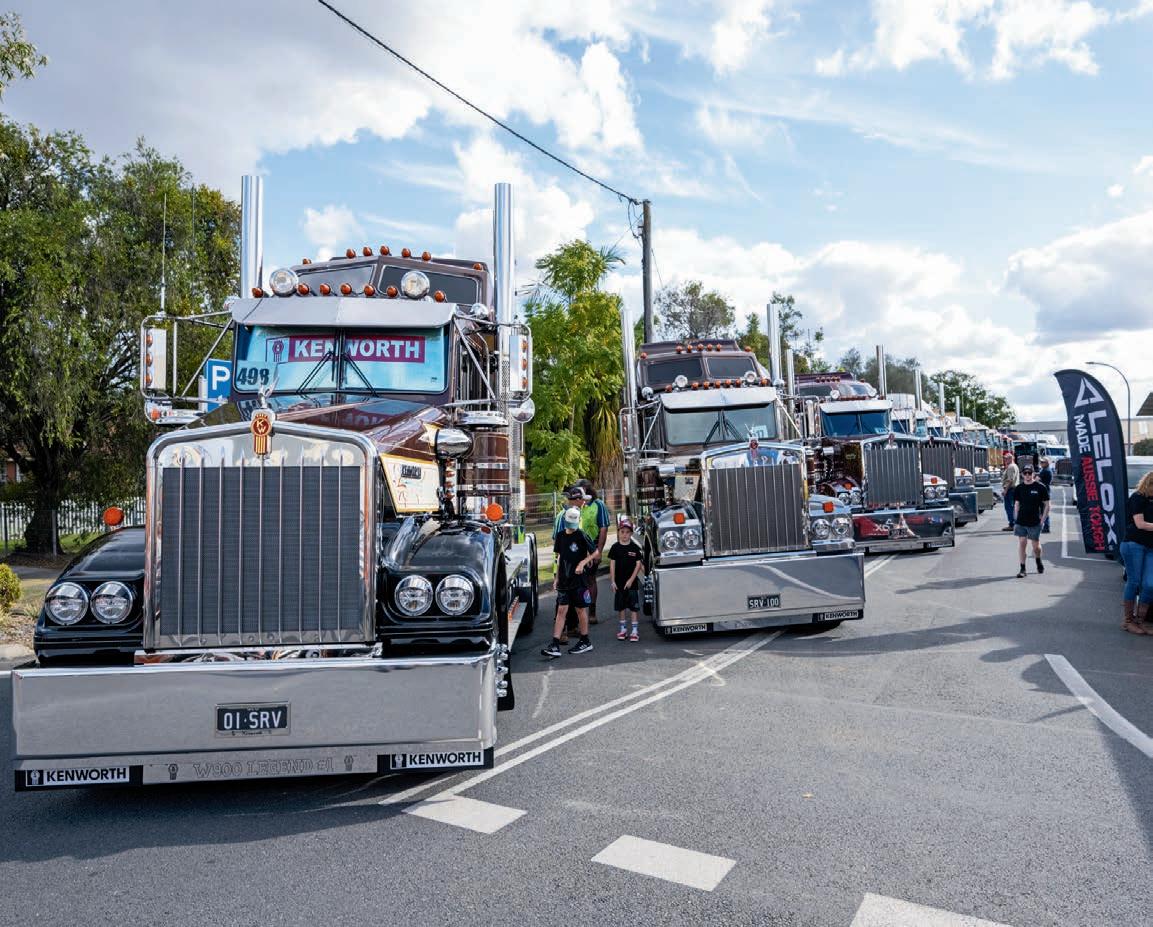


By the time I made it out to the industrial area, there was already a plethora of amazingly sharp looking trucks registered and parked up. There were drivers, drivers’ families and drivers mates in, under and around the rigs. Australia’s entire stock of microfibre clothes was being put to good use doing the final detailing to some outstanding trucks.

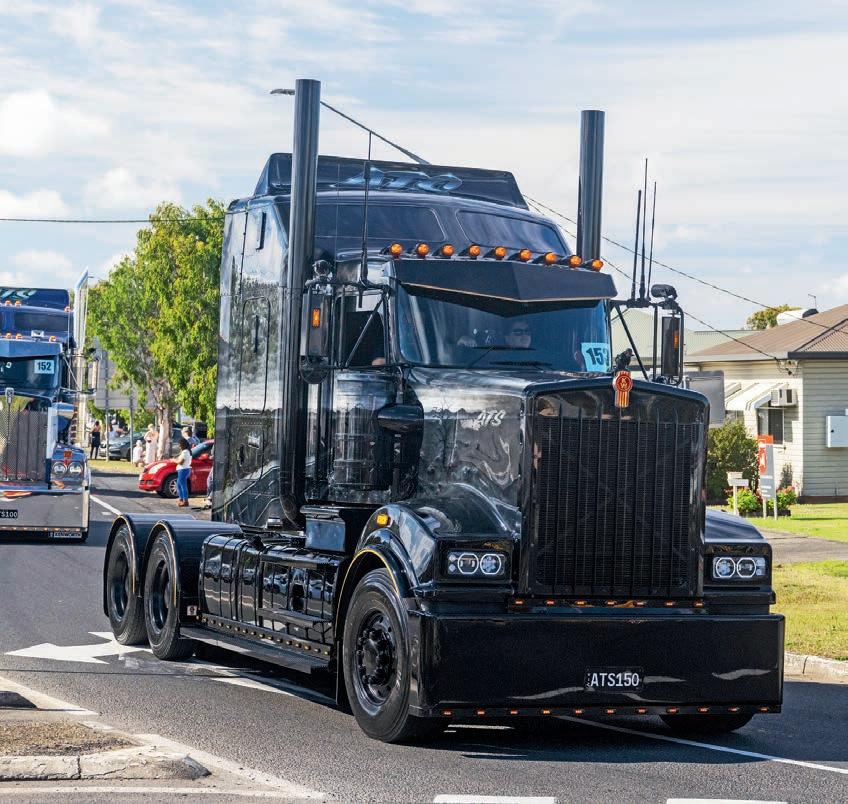
While it was a chilly start to the day there was nothing but smiles and good spirits from all those in attendance, happily perfecting their pride and joy while admiring all the rigs still rolling in.
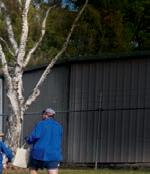


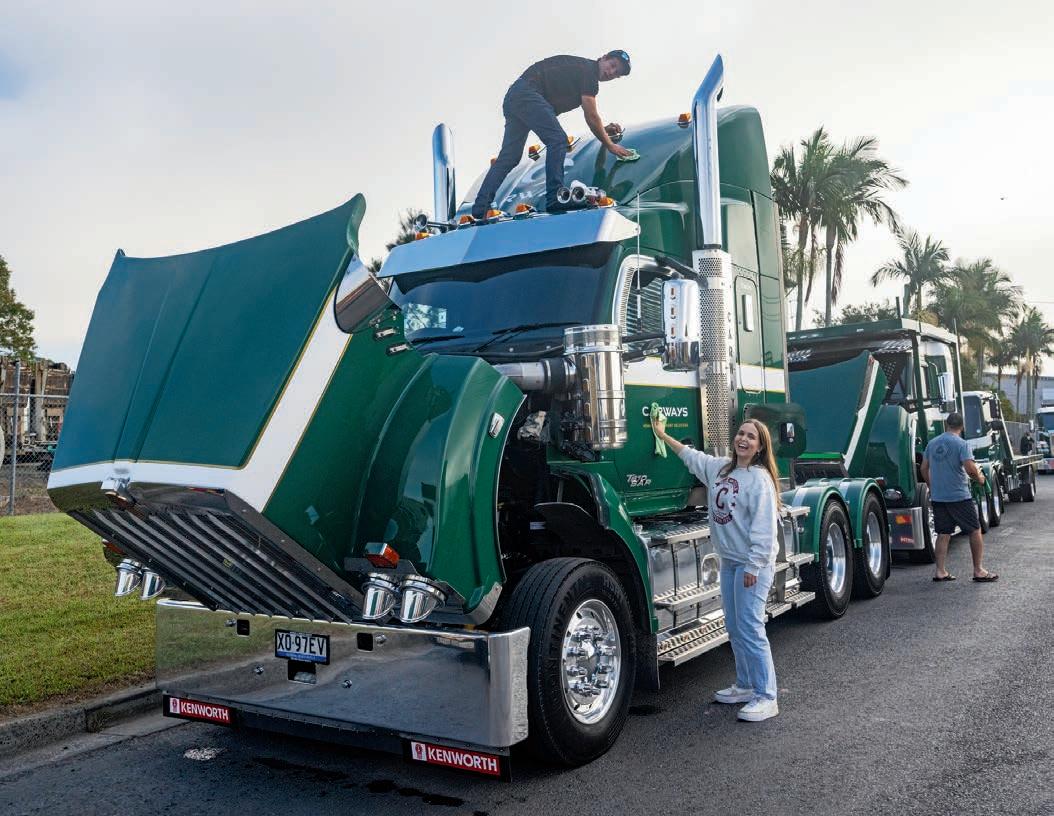

The entrance to the industrial estate was a virtual who’s who of the truck spotting game. There were almost as many photographers as there was trucks, all with their own spots catching the endless line of trucks first entering then exiting the industrial estate. Sandisk would have made a killing selling memory cards if they’d thought ahead.































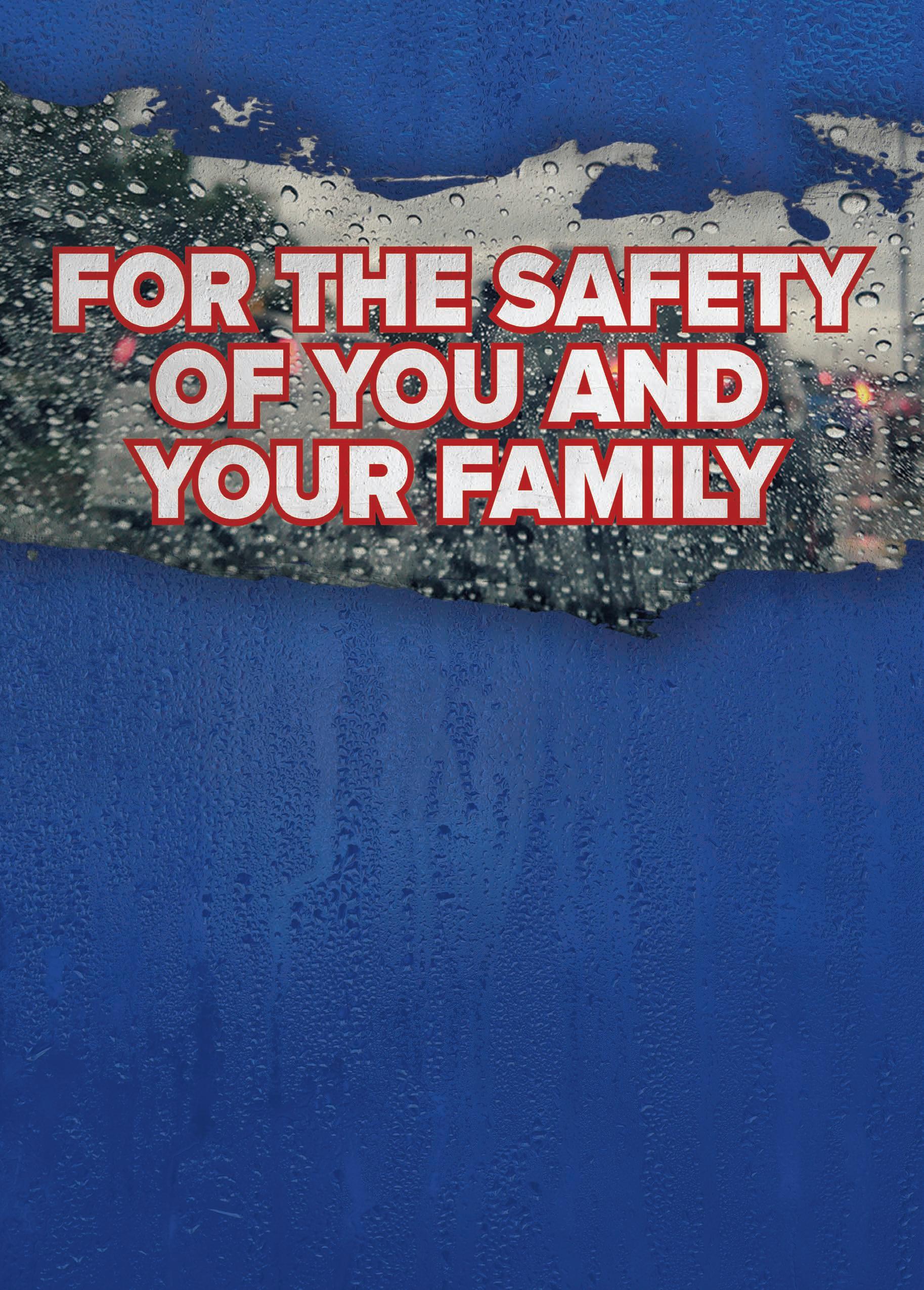



















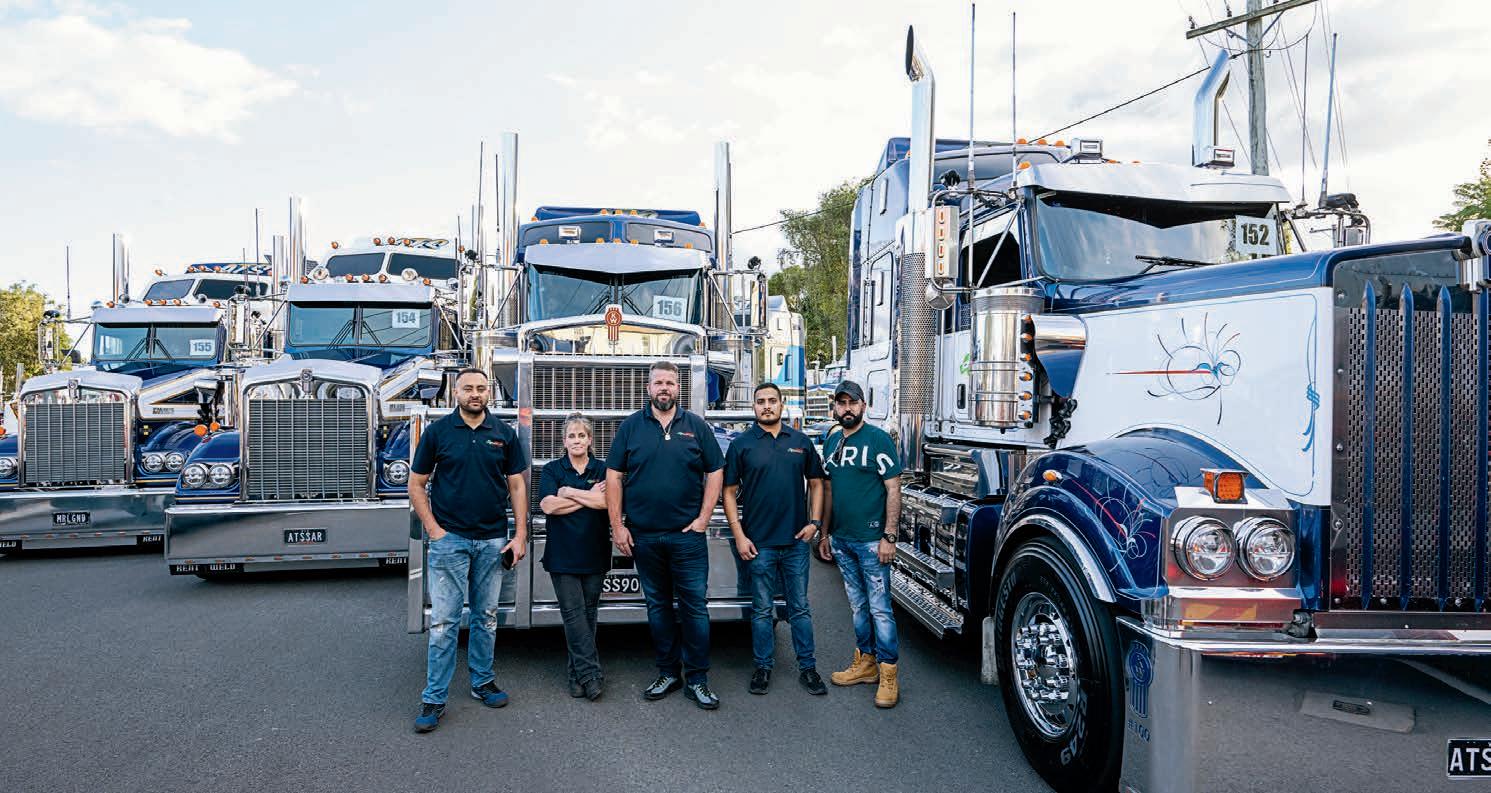


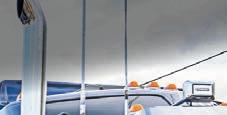










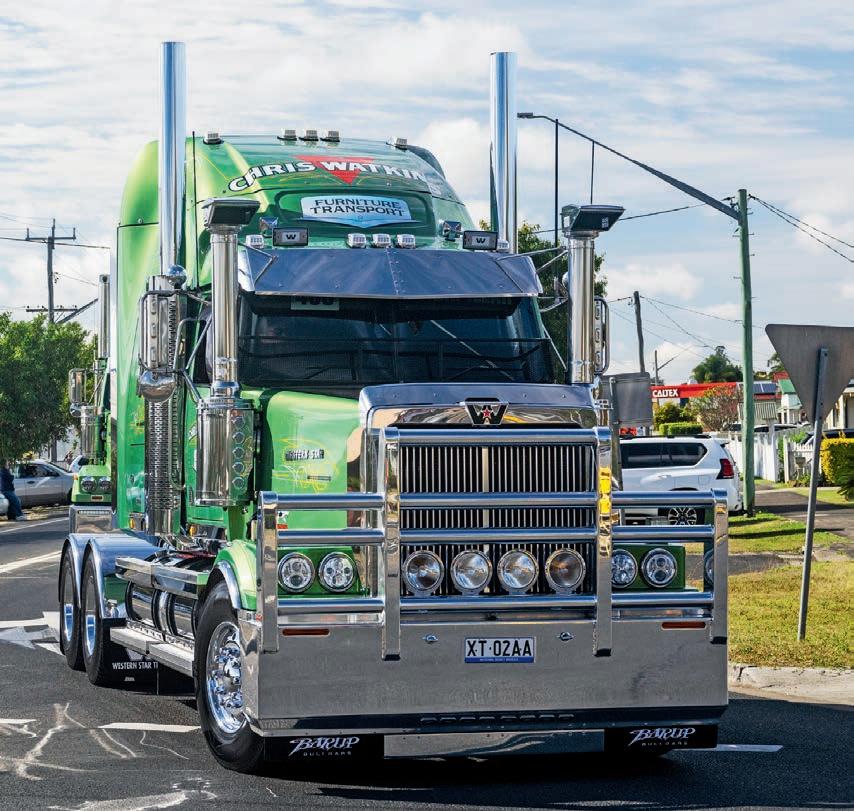





















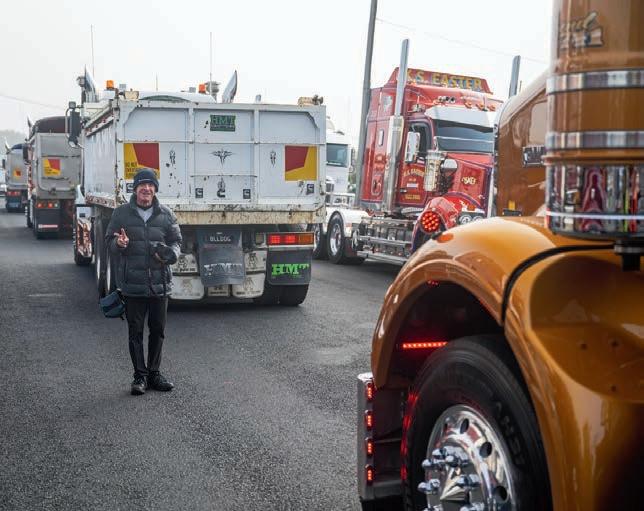






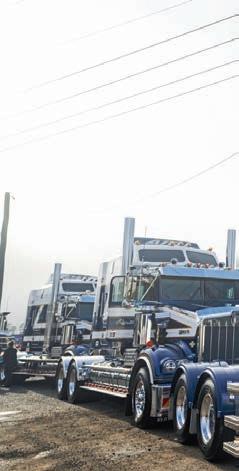
“Luke Wilson from Bulmer Transport took out the Rig of the Show with his absolutely immaculate T908.”
With the 10am convoy kick-off fast approaching, I headed back into town to find a quiet place to sit back and enjoy a couple of hours of show trucks rolling past. This was another huge challenge as there was no quiet place. The convoy route is nearly 5km long and there was barely a gap anywhere. The support for this event seems to grow as rapidly as the entrant numbers themselves. Kids of all ages were out with their arms primed for air pumping. Teens and adults had phones, cameras and tablets all charged to video and photograph the enormous line-up of trucks. Even the unappreciated traffic that slipped into the convoy was welcoming of the attention. The atmosphere was enthralling.
Obviously, there is a downside to all this community support and high out-of-town entrants, starting with having to park so far away and walk all the way into town to view the festivities. My poor feet would normally be okay but add in the fact that fitting 600-plus trucks into a small town means I had to walk down a lot of side streets to ensure I had a glance at all the trucks. My feet were killing me by the time prizegiving wrapped up late on Saturday afternoon.



It wasn’t just trucks on display though as there were activities down nearly every street, from stalls and merchandise tents selling stuff I never even released I needed until they told me. Then there was the FMX stunt bikes putting on gravity-defying shows all day. If flying upside down with a throbbing engine between your legs isn’t your cup of tea, you could go and watch the Wildlife Twins amaze the crowd with their animals. Or go for a little walk down the other end of town to catch country rock band Country Mud performing live. It was merely my tired feet, rather than my complete lack of rhythm that stopped me from getting my groove on.
Like any good truck show there will always be a few dropped lips and a few unhappy faces once the winners are announced. Even more so when you have 580 trucks in the running for only a handful of trophies.



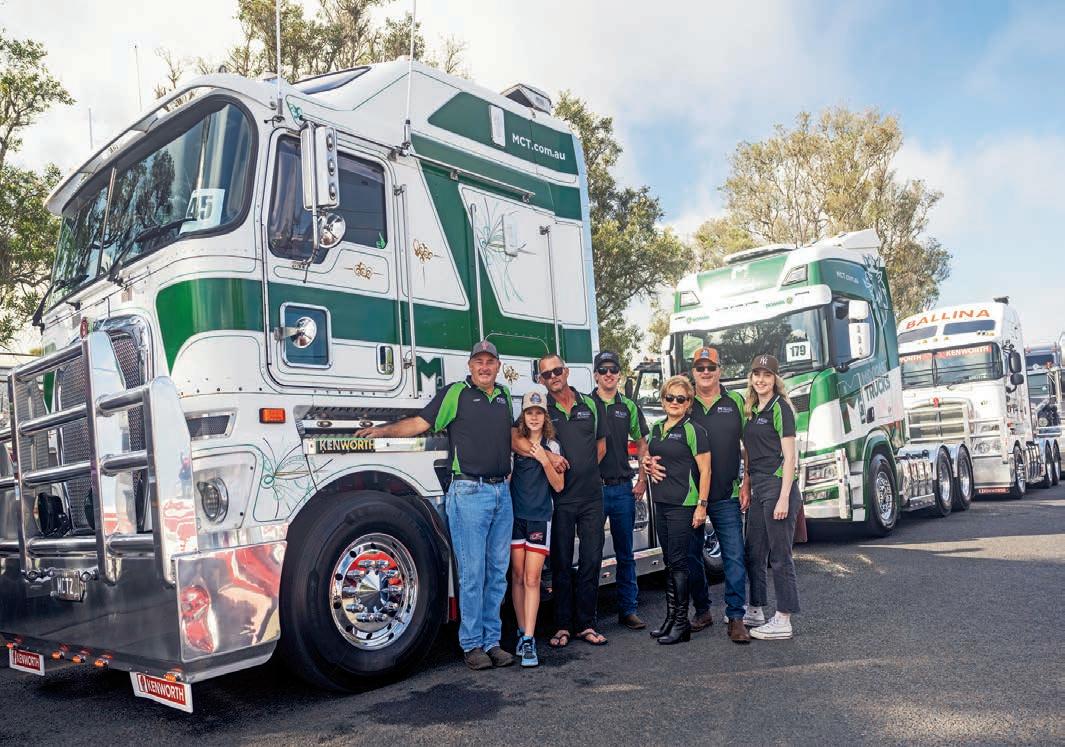




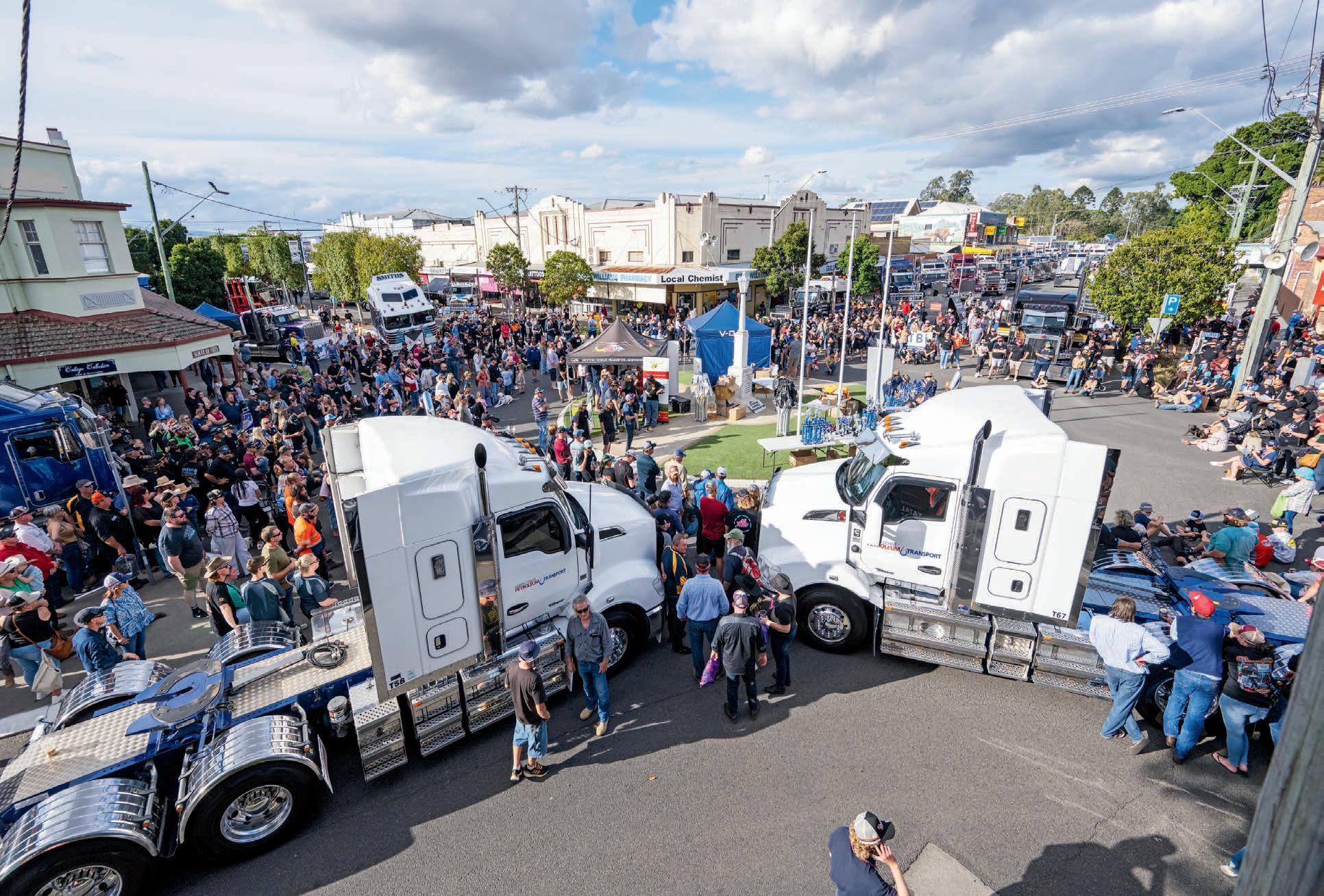


This year’s entrants also raised the bar when it came to quality and not just quantity, making the calls even harder

for the judges. Luke Wilson from Bulmer Transport took out the Rig of the Show with his absolutely immaculate T908. You could be forgiven for assuming the truck has been kept in a dustproof case all its life, but the nearly two million kilometres under its belt show that the old girl works for a living.
All in all the show was a roaring success. Millions of dollars’ worth of gear on display, more than 14,000 people in attendance and probably around the same number of drinks consumed over the weekend.






















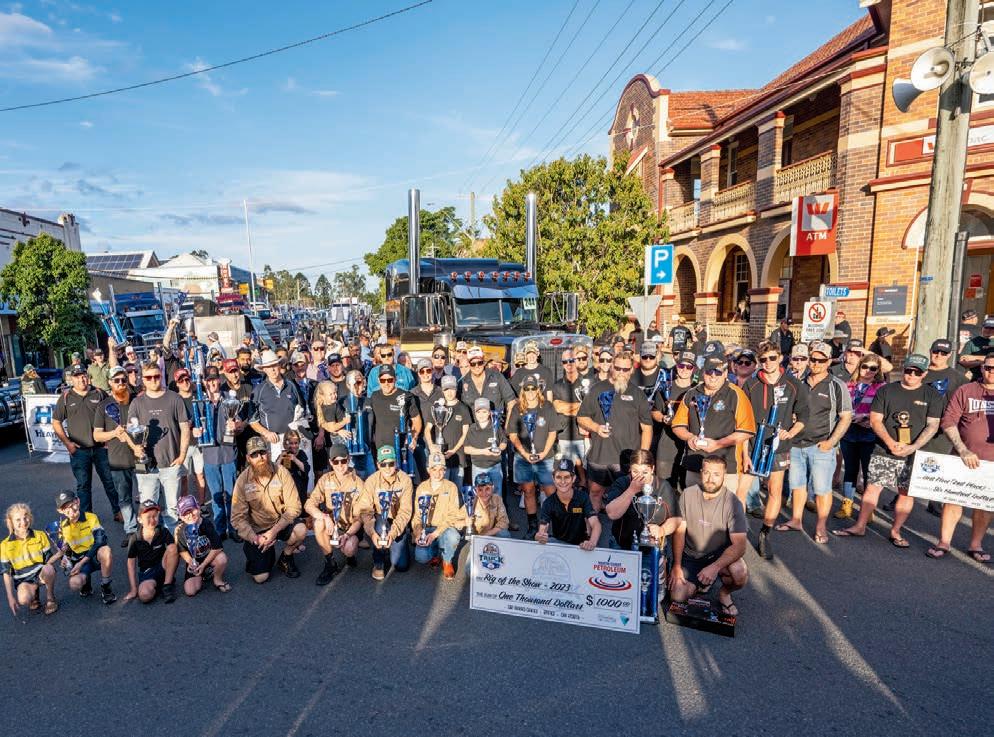






The Casino Truck Show is a major event that pumps hundreds of thousands into the local community. The numbers this year ensured the show officially became the largest truck show in the southern hemisphere and it will be extremely hard to top. Maybe suggesting to the local council that they look at building a few more streets just to fit in next year’s entrants might be a goer.
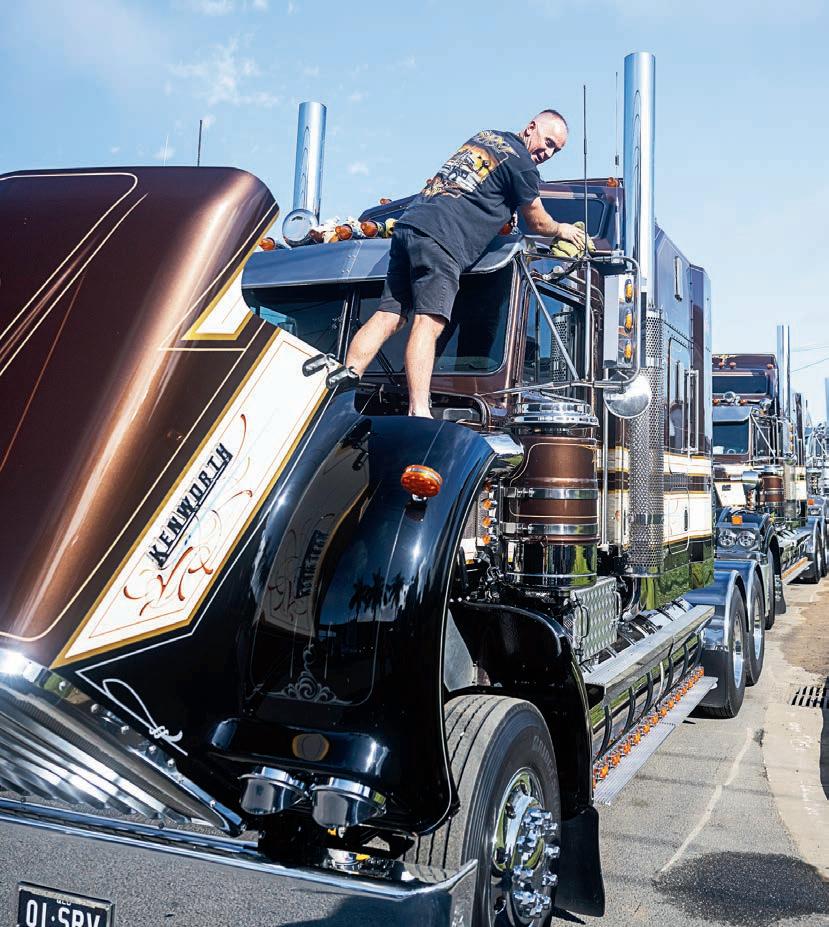

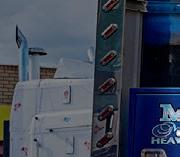
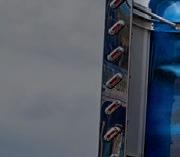
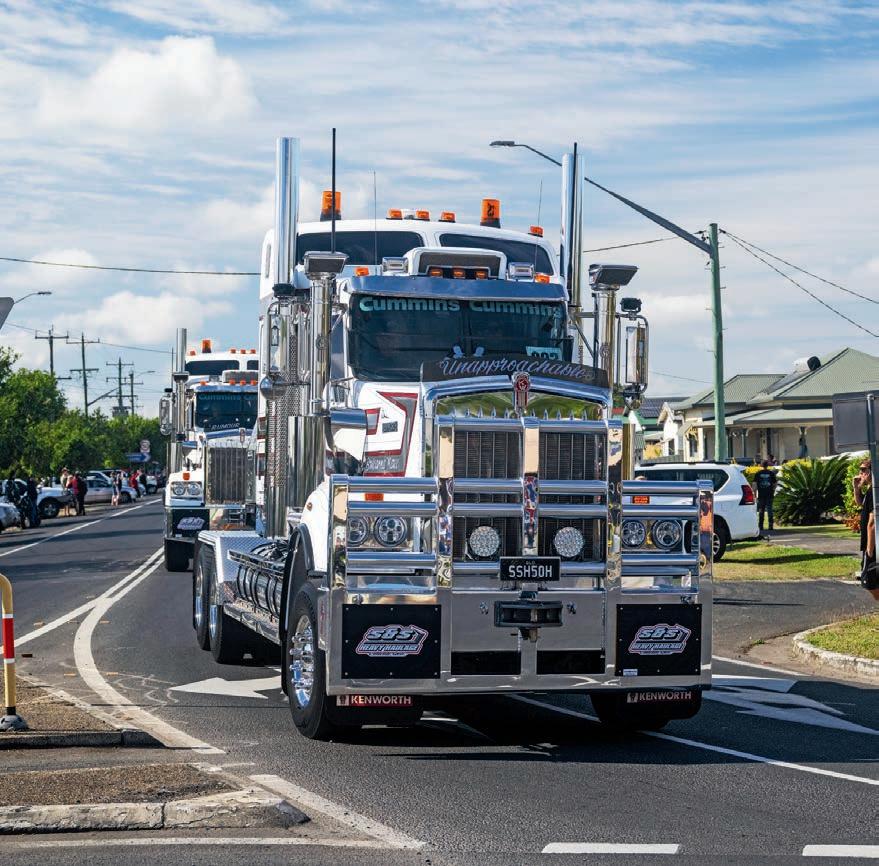
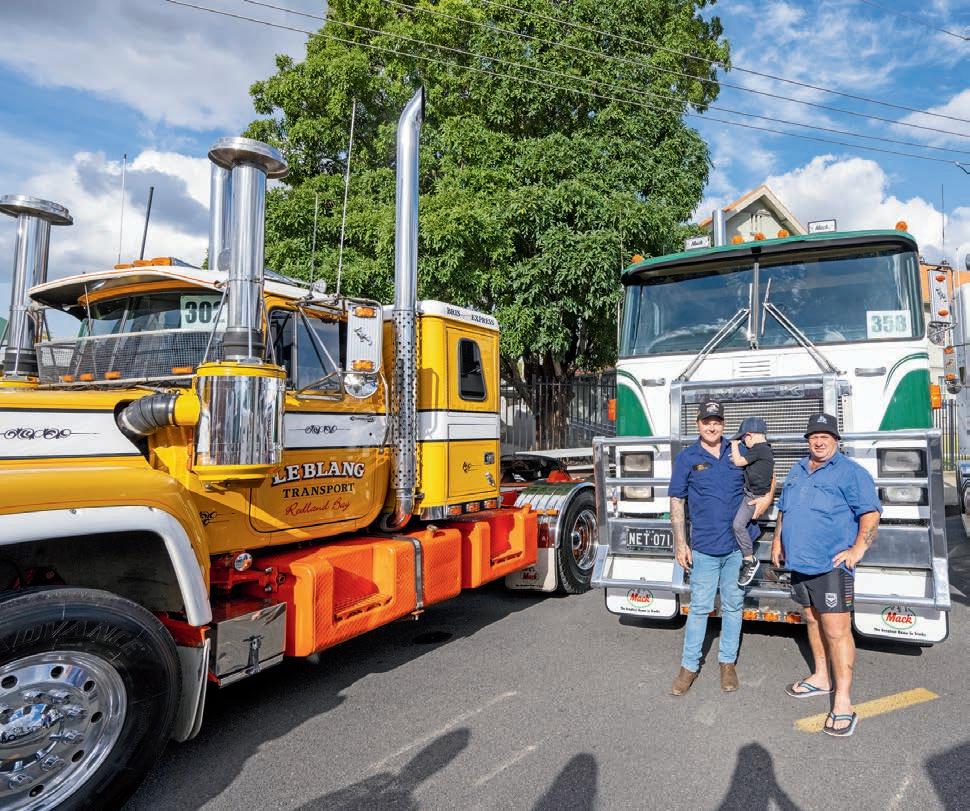
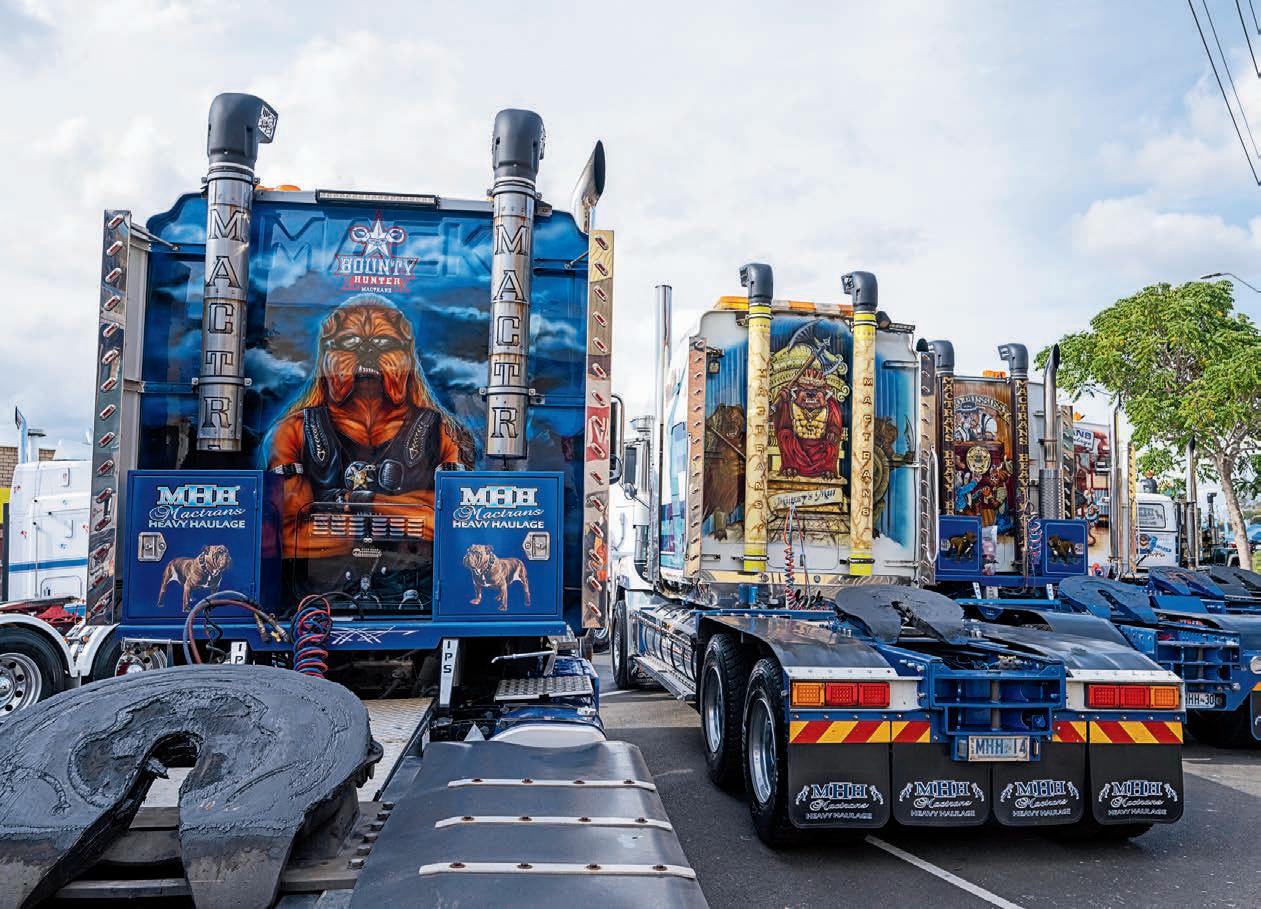
Either way, I’ve already booked my room for next year.










In the ever-evolving landscape of legal proceedings in Australia, the methods of serving court and suspension notices have undergone significant changes, driven by the need for efficiency. However, the consequences of not receiving such notifications can be dire, especially in cases involving driving offences. This article examines a recent case in Victoria that underscores the potential ramifications of inadequate notice, particularly in driving while disqualified cases, which carry the threat of a prison sentence in many cases. Individuals who inadvertently drive while their licenses are suspended, even due to medical reasons, can find themselves embroiled in legal battles that threaten their freedom and livelihood.
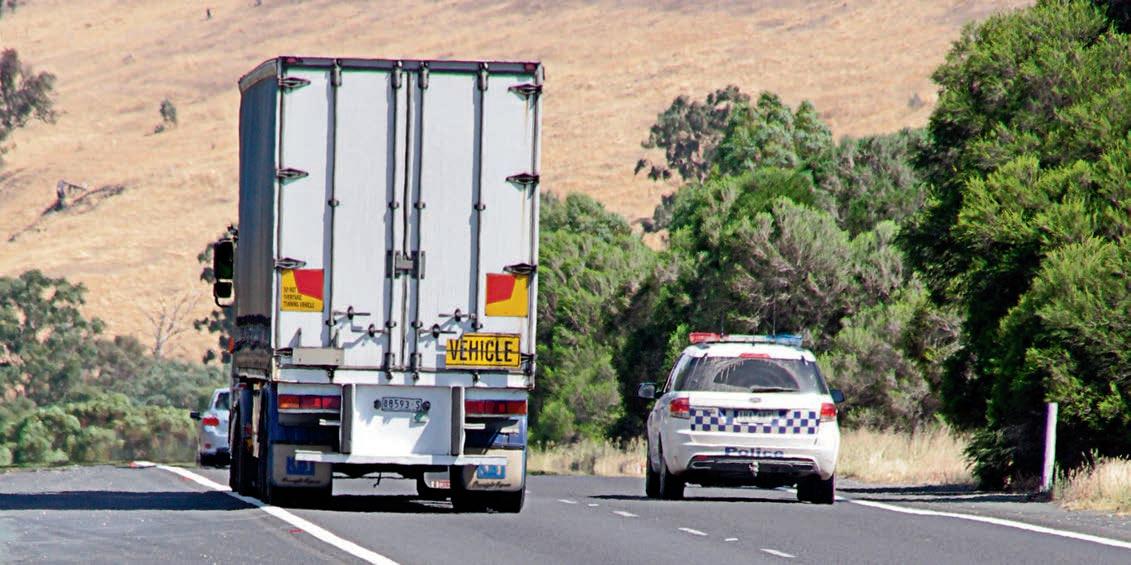
A recent case in Victoria is a stark reminder of the pitfalls of inadequate notice systems. The client, who had been medically suspended by VicRoads (now known as the Department of Transport), faced legal proceedings for driving while medically suspended. The suspension had been lifted based on medical reports, and he had resumed driving in good faith. Unfortunately, further medical reports were sought due to a policy change, resulting in another suspension.
The crux of the matter lay in the alleged service of the suspension notice. VicRoads claimed that the client had been served the notice by normal mail. However, the client vehemently denied receiving any such notification. This discrepancy highlights the critical role of proper notice in ensuring individuals are aware of their legal status and obligations, particularly in cases where continued compliance is imperative.
Highway Advocates became involved, and the case progressed to what is known as a contest mention in Victoria. Case conferencing with the Police had gotten nowhere, and they had dug their heels in. Police claimed the suspension notice had been legally served on a Post Office box. We thought this strange. How can you be served at a PO Box? One of the reasons people use this service may be that they are away for long periods.
Highway Advocates stepped in to navigate the intricate maze of legislation surrounding these cases. A crucial discovery was made within the Road Safety Act 1986 (Vic) section 93, which outlines the permissible methods of serving notices. This section delineates methods of notice delivery, emphasising that certain methods are authorised, while others are not. The case in question highlighted how improper notice could lead to false allegations and legal quandaries, potentially affecting countless others who
may have suffered a similar fate. Further methods may be used in order of ascendency, but not one of them allows a notice of suspension to be served on a Post Office box. The case was withdrawn. How many other people have suffered a similar fate?
Still in Victoria, the VicPol Heavy Vehicle Unit is fairly active in that part of the world. Many of our clients have been subject to prosecutions initiated by the unit. There are serious issues surrounding how unit members search trucks, but for now, we will focus on the service of court summons and charge sheets.
When charges are laid, a charge sheet and summons are prepared. The Criminal Procedure Act in Victoria provides that, except where otherwise expressly enacted, every summons to answer a charge must be served personally in accordance with section 391. This section dictates that:
• personal service may be effected by giving a copy of the document to the person to be served; or
• putting the copy down in the person’s presence and telling the person the nature of the document; or
• leaving a copy of the document for the person at the person’s last known or usual place of residence with a person who appears to be of or over the age of 16 years.
It seems pretty clear, doesn’t it? So why isn’t it done this way in many cases? Because it is easier and cheaper just to email it, send it by text or perhaps not bother to send it at all. We say this isn’t good enough, and many of our clients have had amazing outcomes when the lack of lawful service has been ventilated before the courts.
NSW doesn’t seem to do it any better, especially when licences are suspended for non-payment of fines. Legislation is there for a reason, and it would seem logical that some proof of service would be required if your licence was suspended or cancelled when you are unaware of why.
Over the years, the service of court and suspension notices in Australia has undergone transformations aimed at expediting legal processes. While this evolution has brought about efficiency gains, it has also introduced complexities that can have serious repercussions.
In NSW, when a licence is suspended for non-payment of fines, Revenue NSW must notify Transport for NSW who then must, without further notice, suspend any driver licence of a driver licence of a fine defaulter. However, any such notice may only be served personally.
How many of you out there have received a notice from the debt collector, Revenue NSW, telling you that your licence is suspended for non-payment of fines? This notice is never personally served as required.
Space does not permit further detail, but you may be sure of one thing. As notice systems in Australia continue to evolve for expediency, the above serves as a cautionary tale. Inadequate or unlawful notice can have far-reaching consequences, especially in driving offences with the potential for imprisonment.
Legal professionals protect their client’s rights by meticulously examining notice procedures and advocating for fairness and justice. Here at Highway Advocates, we take that responsibility seriously. As the legal landscape adapts to changing times, upholding the principles of due process remains paramount to preserving the justice system’s integrity.
“Police claimed the suspension notice had been legally served on a Post Office box.”
As the year shapes up to be a success for Isuzu Trucks despite global supply chain challenges, the brand has been innovating avenues to have even more success and continue to provide the best possible product for customers.
Last year, Isuzu Trucks sold 13,360 units, marking a new record and its 34th consecutive year of truck sales leadership. This year sees the upwards trend continue with sales increasing a further 13.7 per cent (975 units) for Isuzu through to the end of July 2023.
A great product doesn’t just begin and end at the point of sale in the dealership. Aftersales care is just as valuable a support for customers throughout their entire journey whether it is a phone call to ask about operations manual, or advice of which quality of replacement parts are best suited to the truck model.
New buyers of N Series Cab Chassis and Ready-
to-Work models* who pay for three years of Isuzu’s Total Service Agreement will receive an additional three years free of charge with the offer running through to September 30, 2023. That’s a full six years of Service Agreement coverage for the price of three years.
With a storied history delivering reliable, fitfor-purpose products and a first-class support experience to back it up, Isuzu has developed its range of Service Agreements to help customers focus more on what matters most – building their business.
Isuzu Service Agreement packages cater to a range of customers and end uses, with the aim of taking the stress out of servicing and maintenance with an upfront payment plan that covers scheduled servicing, preventative maintenance and parts replacement.
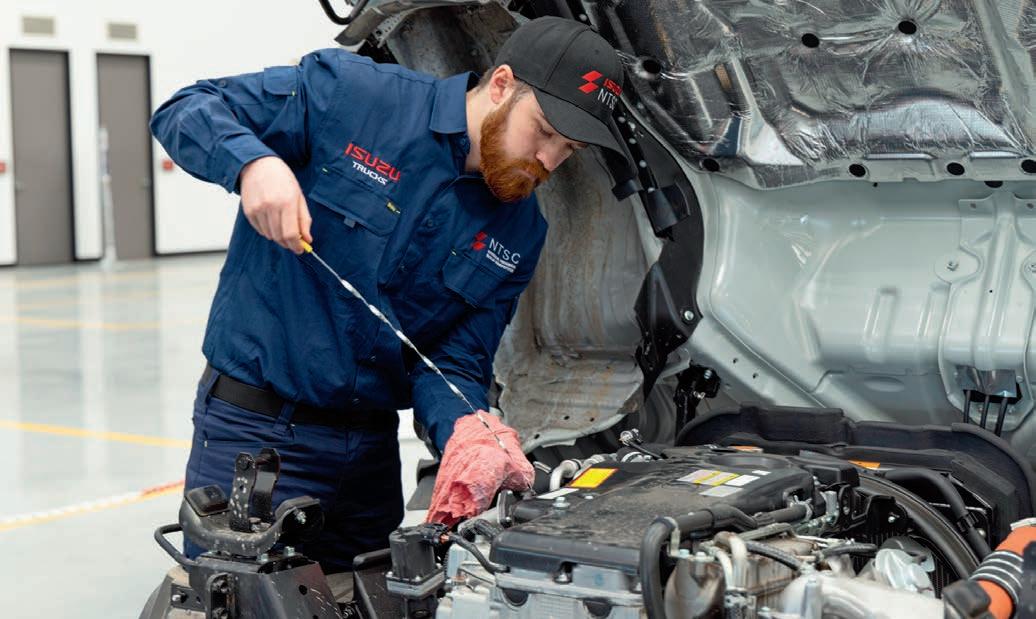
Isuzu’s Total Service Agreement Package is designed specifically for newly purchased trucks, offering comprehensive coverage on essential, high-wear componentry, ranging from
engine and transmission to brakes, suspension and electrical, with additional options available.
Further supporting customers, the Isuzu National Parts Distribution Centre has expanded to process upwards of 16,000 items per day out to the dealer network by air, rail, road and even by sea for partners throughout the South Pacific. This requires people power of just under 50 staff on rotating shifts from 5am through to 10 pm each day. Isuzu Australia Limited (IAL) receive and process an average of 450, 40-foot shipping containers every year—a number that is growing with local truck and Power Solutions sales.
The Isuzu dealer network is digitally connected to the National Parts Distribution Centre which ensures access to view all the parts inventory, including peer dealers, maximising the dealer’s ability to provide the best customer service possible.

The Distribution Centre holds roughly seven million items in the warehouse at any one time, from the smallest electrical components right up to replacement cabs, engines, and transmissions.
Isuzu Trucks offers parts and componentry under three key product ranges: Genuine Parts, Isuzu Approved Parts and its Second Tier Best Value Parts or ‘BVP’ range.
“Our Genuine Parts range is developed and manufactured to stringent Isuzu quality standards and testing, which ensures maximum productivity and a high level of performance for our customer’s trucks,” said National Parts Sales Manager, Joel Gledhill.
“This also assists them to optimise the future re-sale value for those vehicles where Genuine Isuzu Parts are used.
“Our Approved Parts range includes a number of leading brands such as Meritor, Fleetguard, Eaton, Hendrickson and Allison, to name a few, and provides a wide range of trusted products,” Mr Gledhill continued.
“This ensures the ongoing reliability of an Isuzu vehicle and in many cases the parts can
also fit other brands of trucks, which is beneficial for those dealerships and affiliated service centres who service a range of different truck brands.”

The ‘BVP’ range comprises a comprehensive selection of service parts to suit older model Isuzu Trucks. Included are starter motors, alternators, drive belts, brake components, clutch components and filters, making it one of the most dynamic product ranges in the business, and one that IAL continually expands to keep up as customer requirements change over time.
Finally, Isuzu Care can’t be forgotten, with the memorable relaunch at the recent Brisbane Truck Show held in May this year.
With Isuzu Care standing by customers are ensured they get the best possible support whether it be questions around service agreements, warranty, Isuzu roadside assistance, parts, or general questions.

Isuzu Trucks are looking to their total offerings - not just trucks on the road - to ensure customers receive the best package on offer.
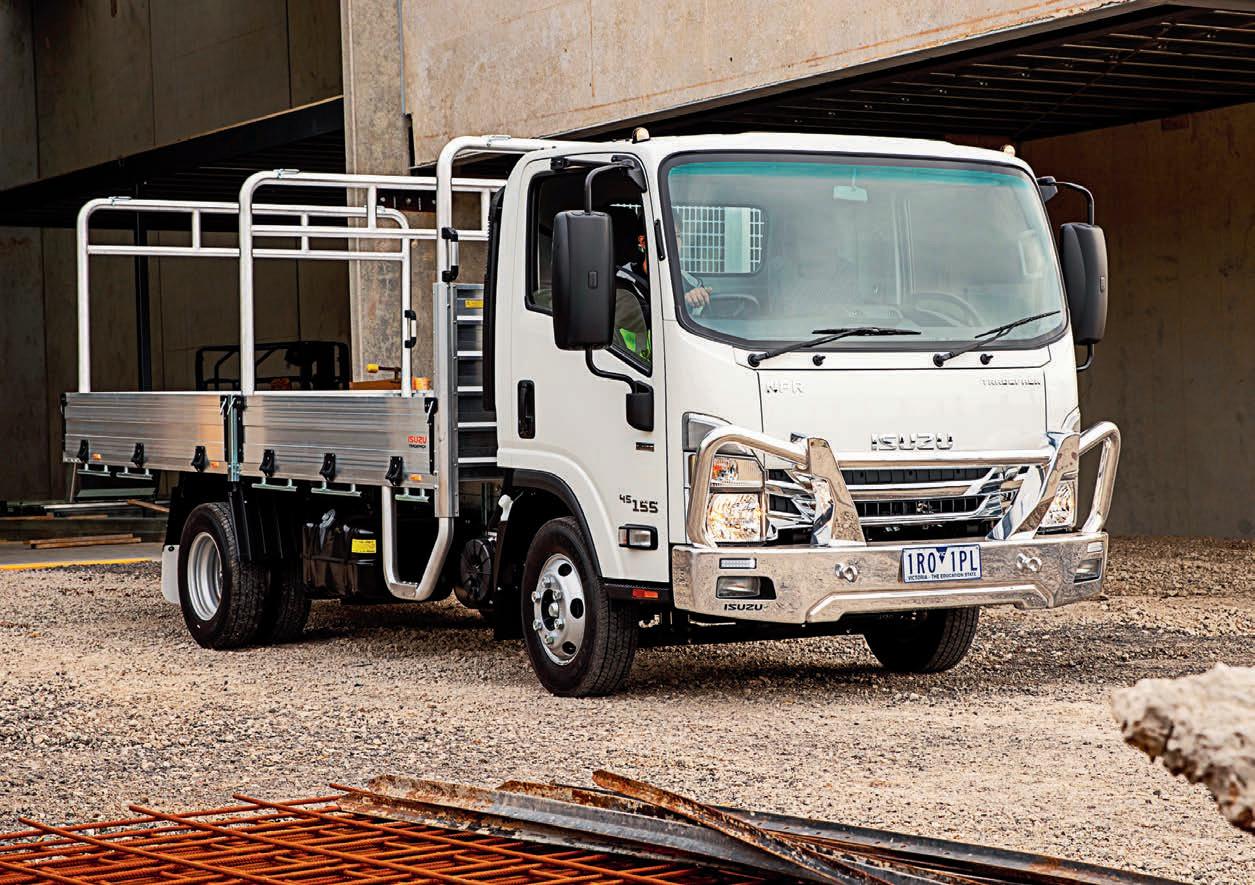
“OUR GENUINE PARTS RANGE IS DEVELOPED AND MANUFACTURED TO STRINGENT ISUZU QUALITY STANDARDS AND TESTING, WHICH ENSURES MAXIMUM PRODUCTIVITY AND A HIGH LEVEL OF PERFORMANCE FOR OUR CUSTOMER’S TRUCKS.”
Itook the opportunity of getting in touch with Greg Casey in relation to his PhD research regarding truck driver fatigue (OwnerDriver, August 2023). Greg is the second retired road transport Police Taskforce officer that I’ve had correspondence with of late. Both men obviously took their role as promoting safe operation of heavy vehicles very seriously and conscientiously.
I made the following comment to Greg – and it is a strong view that I have. A driver must manage his or her fatigue and, in addition, manage the logbook. Strict adherence to logbook requirements of itself does not and cannot guarantee non-fatigued driving.
I’m not against timeframe parameters but it must be recognised that the parameters are pretty much a compromise because humanity is diurnal in nature.
I concede that officialdom does recognise to some degree the complexities of overnight operation. Essentially operating overnight is an unnatural act. When viewed in that light, the industry has an admiral safety record though no accident, fatal or otherwise, can be condoned. Ultimately, it is a driver’s responsibility to understand his or
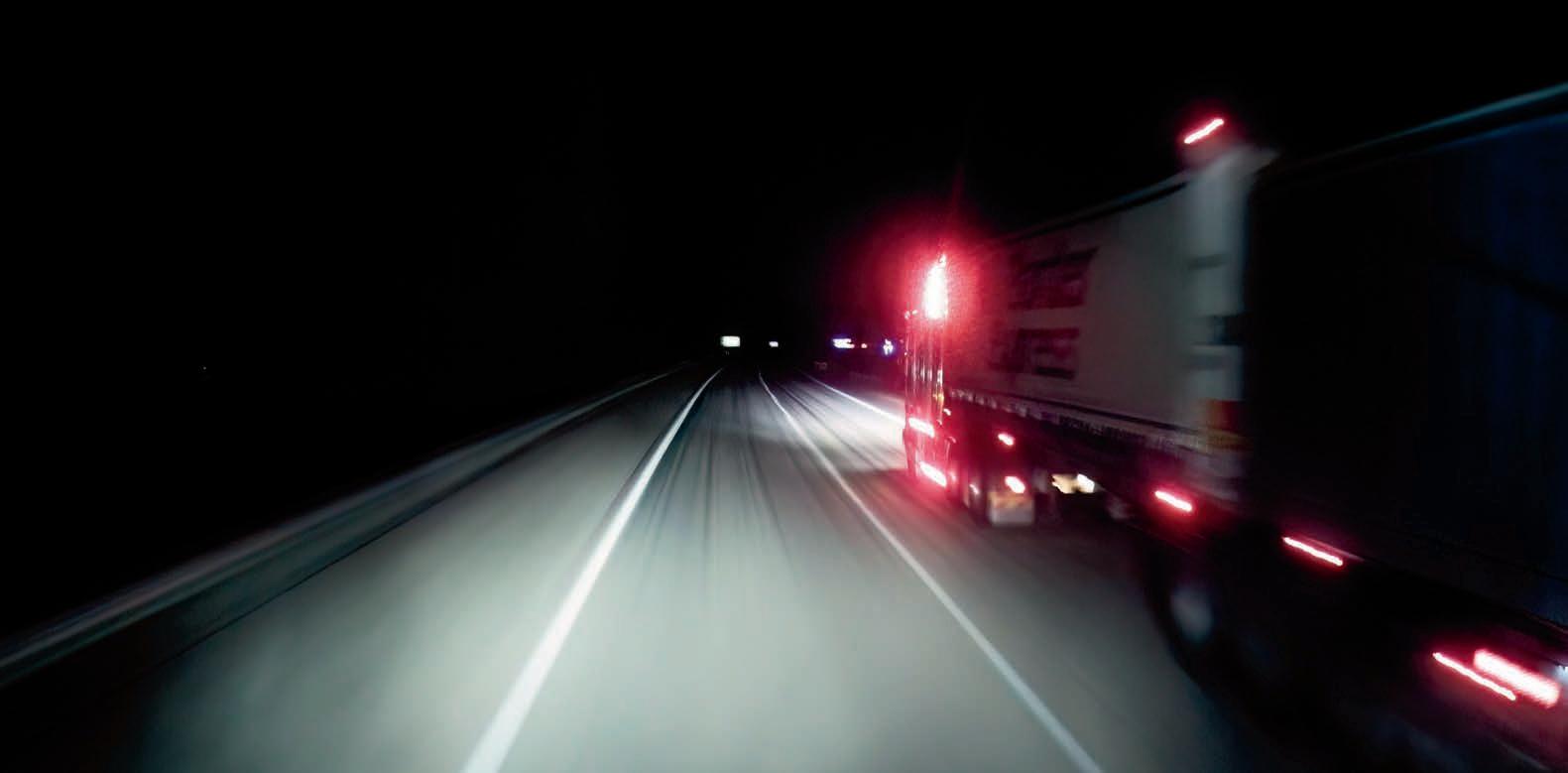

I became aware of my limitations in that area decades ago and since that time have refused to be drawn into overnight operations. Personal knowledge and the freedom to nominate hours of operation is the strongest feature to maintain safe operation. To that end, the old National Road Freighters Association’s position on fatigue suggested that all scheduled runs not be scheduled to within 10 per cent of the maximum allowable time parameters required to complete the job. Yes, I acknowledge that such a provision would make managing driver change over situations something of a challenge.
Another term that I used in my conversation with Greg was ‘change of activity’. Change of activity I understand to be a principle in Western Australia’s fatigue management program. Linehaul driving is very much a mono activity. And it is more so a mono activity with today’s generation of sophisticated auto shift and cruise-controlled trucks, combined with much better roads.
Pulling over and doing a load check while technically still working has major benefits in stimulating
KEN WILKIE has been an owner-driver since 1974, after first getting behind the wheel at 11. He’s on his eighth truck, and is a long-time Owner//Driver contributor. He covers Rockhampton to Adelaide and any point in between. His current ambition is to see the world, and to see more respect for the nation’s truckies. Contact Ken at ken@rwstransport.com.au
blood flow and refreshing the ability to concentrate. Decades ago, my friend the coach driver highlighted that aspect of managing fatigue when he related to me that after several consecutive overnight shifts interspersed with motel accommodation between shifts, he resorted to non-scheduled tyre checks to maintain alertness.
There is yet another type of fatigue that has never had much, if any, consideration. I’d describe it as burnout. For the conscientious operator, driving heavy vehicles can be very stressful. We operate in an environment very often in conjunction with incompetent and non-professional drivers.
I have been diagnosed as a type-2 diabetic for several years and frequent testing of blood glucose levels is par for the course. After a run with heavy traffic, I frequently have higher than acceptable blood sugar readings. I put it down to the stress of concentrating. I must point out that I obviously enjoy heavy vehicle driving. Why else would I still be doing it professionally (at least in the sense that I get paid to drive)? But it must be understood that the occupation is one of high risk and managing that risk can be stressful. Should the undesirable happen then the investigation of cause and fault can be daunting. So, long hours and the stress of staying safe can add up to burnout. Can this burnout be a factor in the driving population being so fluid? The pressure to keep going, even within legal parameters, might be a factor in causing accidents. The reported driver shortage cannot be helping the situation.
On a lighter note, I’m smarting a bit at present. I was programmed to do a run to near Top Springs in the Territory. Low and behold, the old project truck let me down. But wasn’t it considerate that it did so near home base.
“The reported driver shortage cannot be helping the situation.”
SEND YOUR LETTERS TO:
Letters to the Editor need to be typed or clearly handwritten and be no more than 500 words. Letters should include name, title (e.g. owner-driver, manager) and city for publication, unless otherwise requested. Letters may be edited for clarity or space. Please be concise, so we can offer more people an opportunity to express themselves.
Greg.Bush@primecreative.com.au or 379 Docklands Drive, Docklands, VIC 3008








We prefer letters by e-mail, but handwritten letters will be accorded the same opportunity to be published.
Due to increasing vehicle productivity and inherent driver visibility requirements, long flat bonnetted prime movers and rigids will go the way of the dodo bird. Consistent with European and Japanese manufacturer sales figures, cab-overs are the future. Furthermore, specifically for productivity benefits, twin steer units will become more popular.
However, one significant problem is faced.

How can 6x4, 8x4 and 10x4 cab-overs exhibit cab, driver seat pad and steering column vibration levels comparable to or in fact superior to a long bonneted normal control 4x2? The latter vehicles inherently attract the advantage the payload centre of gravity always leads the rear axle, thereby they exhibit greatly reduced extent of vehicle pitching and cab vibrations. Simple. Each axle group, whether steer or rear, must exhibit dynamic load sharing as is readily achieved by adopting proper designed and detailed air suspensions.

Another extremely pressing problem is the fact local trucks operate some of the tallest combinations in the world. Doesn’t it therefore follow that local vehicle suspensions exhibit the world’s largest magnitude in service roll resistance.


anti sway bars. The use of suspension anti sway bars is consistent with most European and Japanese manufactured products (here be extremely careful, due to commercial compromises, not all makes and models). In comparison, to the writer’s knowledge, only one US manufacturer drive suspension incorporates an anti sway bar/s. Here opportunity is also taken to mention by way of comparison the 4x2 6.5T 2006 Mitsubishi Canter tipper, owned by the writer, has anti sway bars complementing the front and rear grossly over specced (especially unladen) mechanical suspensions!
As the age old adage goes, ‘you can lead a horse to water but you cannot make it drink!’. What does it take to make local heavy vehicle operators and governing road/regulator authorities wake up? The facts are simple: excessive numbers of drivers are on workers compensation for back injuries or needing physiotherapy to ease musculoskeletal discomfort.

Again,


utilising the proven inherently higher in service roll resistance exhibited by proper designed and detailed dynamic load sharing air suspensions. Another obvious in-service stability gain is to utilise axle group suspensions which incorporate
Furthermore, how many drivers do you know who have required shoulder reconstructions? Enough said!
Arnold McLean Wheel Focus ETC Wollongong, NSW

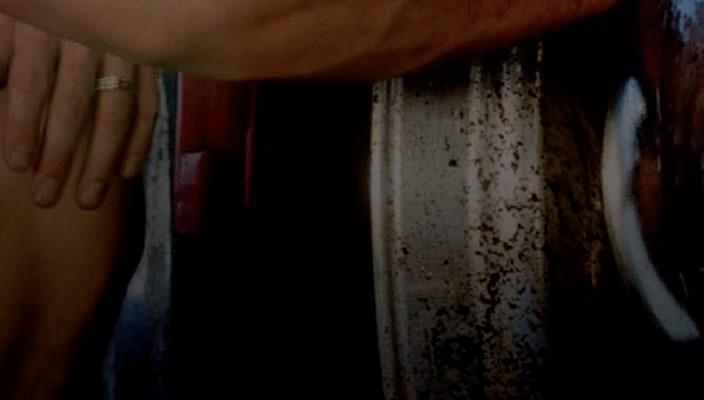
Driving the highways in NSW you would have seen the signs countless times, underneath an illustration of a truck: ‘Please Limit Compression Braking’. Or the sign might say something like ‘Avoid Compression Braking in Residential Areas’.
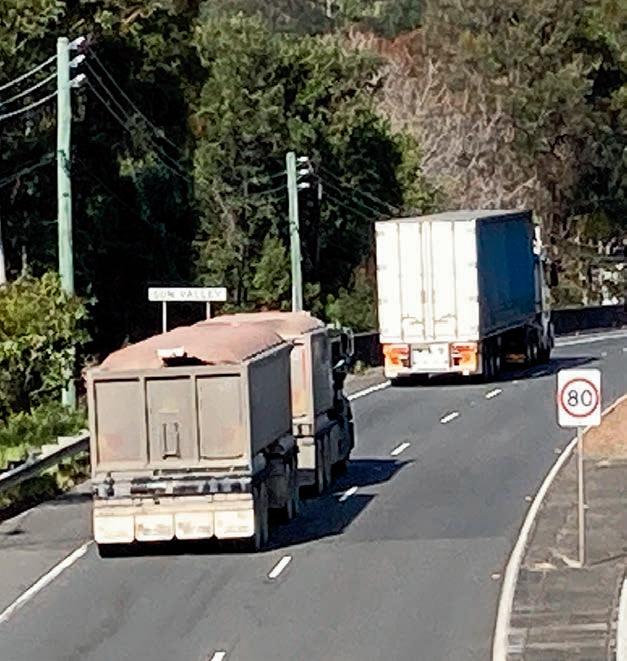

Unfortunately, many truck drivers ignore these signs. It’s not against the law – the signs are advisory only – but the consequences for residents nearby can range from mere annoyance to disturbed sleep at night, with all the implications that brings for normal human functioning.
It seems to me that it’s often a grey area as to whether it’s better to have engine brake noise near someone’s house, or the increased risk of a truck parking in their lounge room.
We’ve all heard the funny prank call from a radio host to an understandably cranky truckie who thinks it’s a government official telling him not to use his engine brakes. But let’s face it -- some truck drivers really are totally inconsiderate, including towards their own colleagues.
I’ve known them to drive past what were obviously our driver bunk rooms in a transport
Engine brake technology has resulted in reduced noise in recent years, but older trucks are still having a negative impact in residential areas. Jake B. Rake offers his view of the commotion in motion
depot with their engine brakes on. Sometimes they do the same coming into truck rest areas and truck stops, or just in the yard while others might be trying to sleep in their trucks. They are not the type who will weigh up whether they really need to use the engine brakes in ‘built-up’ areas, including approaching a set of lights on perfectly flat road at midnight.
Some sort of compression braking is obviously essential for trucks going down steep hills with speed limits of 40 or 60km/h. But for short stretches in 80 or 100km/h speed limit areas, I’m not so sure.
The basic dilemma is that while American-style engine brakes help slow down a truck on a downhill stretch of road, their ‘bark’ can often make a hell of a lot of noise.
There’s not much information on this huge issue for residents who live near a highway on a hill. And there’s not much information for us truck drivers either. So here’s an amateur explainer from what little public information is out there, and the experience of myself and some other old-timer mates.
There are three main types of compression braking I’m aware of that are used in trucks in Australia. One is exhaust braking, which is fairly quiet, and also fairly weak, but good enough for smaller trucks.
Another is the transmission retarder, using oil and the gearbox to slow down the drive wheels. The Scania and Isuzu transmission retarders are so strong you don’t need to use the foot brakes at all, but they have potential downsides including extra weight, cost and maintenance.
The third type – and by far the loudest – is the trusty old engine braking system (but which I’ve been told can be hard on diff bushes).
I drive a Kenworth T610 built at American parent company Paccar’s manufacturing plant at Bayswater in Melbourne, and it’s a beauty, but it’s got (legally) loud engine brakes which I have a love/hate relationship with.
These are called ‘Jake Brakes’, or more accurately ‘Jacobs Brakes’, named after a fellow US company.
The Jake Brake in the Cummins motor operates when your foot is off the accelerator pedal. When the Jake is on, it allows highly compressed air to be dumped into the exhaust rather than powering the pistons in the cylinders.
Normally the 15 litre Cummins sits on a little over 1500rpm at 100km/h while powering on the open road. That’s in the top gear of 18 in the Eaton gearbox.
The Jake Brake works best near the high revs mark of 2000rpm – any more and you might blow up the engine.
To achieve the maximum engine braking effect, at 100km/h you need to be in 17th gear. Better still – but also louder still – is 16th gear. To keep the truck at lower speeds, you need to be in lower gears.
The advantage of all this is that you don’t have to rely on the foot brakes.
For the uninitiated, in big trucks when you put your foot on the brake pedal, compressed air forces brake pads against either a disc or a drum in the wheels of both the prime mover and trailers.
If you rely too much on the foot brakes on a long steep hill, you could run out of air. When that happens, the truck doesn’t career out of control, it just stops, with the brakes locked on. That risks someone running up the back of you. This once happened to a mate of mine who was riding the foot brakes too much down the old Toowoomba Range.
More dangerous is what truckies call ‘brake fade’, which is when the brakes heat up so much from overuse over a short time, they don’t work properly. You don’t hear about this so much these days, but I’ve heard mechanical experts say this is especially the risk with the older-style drum brakes.
That’s why trucks going down very steep hills, such as Victoria Pass in the Blue Mountains and Mount Ousley near Wollongong, are limited to 40km/h, and you are only allowed to tap the foot brakes twice. This rule forces the driver to be in a low gear and using some type of compression braking.

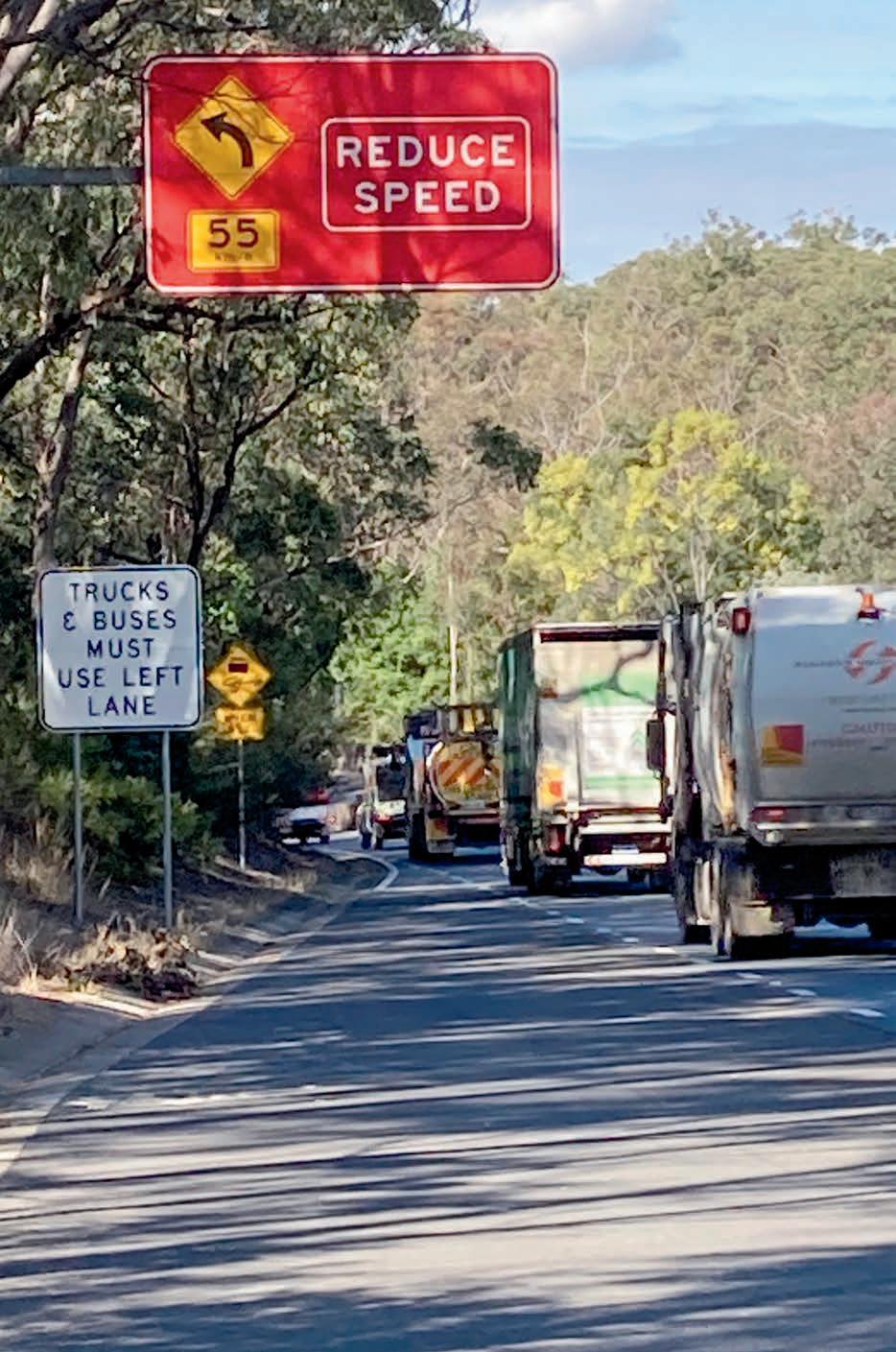
On less steep and shorter grades at 60, 80, or 100km/h, depending on the situation, I don’t think engine brakes are essential for safety, but they are very handy for saving brake pad wear and therefore money. They are also handy for bleeding off speed to avoid being booked.
At times it’s simply just easier to leave the engine brakes on rather than lifting your foot onto the brake pedal. So there can be a bit of laziness involved near residential areas. (By the way, you have to be really careful using compression braking in the wet, because the trailers might want to come around in front of the harder-braking prime mover.)
No matter the situation for the truck driver, the common problem for nearby residents is there are nearly 20-year-old
“The constant use of noisy engine brakes hurts the industry’s image.”Left and top: Trucks definitely need some form of compression braking down hills and slopes such as these
This article first appeared as Silence On Engine Brakes on www.underratedenterprises. com.au/info
noise decibel limits on truck engine brake systems which can’t be directly checked during annual mechanical inspections.
Old trucks are the main culprits and there are apparently some shonky truck operators out there who even muck around with the mufflers to get more power, at the cost of more noise, with the seemingly low risk of getting caught during a random weighbridge inspection.
Noise camera
Back in 2019 Wollongong then-Opposition state Labor MP Ryan Park complained to the Illawarra Mercury newspaper that a noise camera in place on long, steep Mt Ousley for a decade had not resulted in a single fine.
“The government continues to hide behind the excuse that no jurisdictional powers exist to enforce non-compliance with brake noise standards in NSW,” Park was quoted as saying.
In response the newspaper quoted a government spokesman as saying: “Transport for NSW has been working with the National Transport Commission and other states on developing a national in-service standard to detect excessive engine compression brake noise.”
What’s Ryan Park’s view on the issue now that he is actually part of the Government in NSW?
I spoke with one of his staff who said the last they heard, use of noise cameras needed the updated national standard on engine brake noise, which still hasn’t arrived, years later.
I contacted the National Transport Commission which is supposed to be coming up with the new standard, and they
did not reply.
Meanwhile in 2021, Wollongong Council sent a letter to the NSW Government asking for a review of the controls, limits and enforcement of engine brake noise in residential areas. A council spokesperson told me they didn’t get a response to the letter, and haven’t heard anything from the current Government either.
In addition, Transport for NSW says on its website that it “strongly advocates tighter vehicle noise standards”.
“The worst problems occur when drivers use their engine brakes unnecessarily near built up areas, especially at night when residents are trying to sleep,” says the website.
“Trucking is an important business. But the constant use of noisy engine brakes hurts the industry’s image.”
However, there’s good news on the website too: “This noise source has however been progressively reducing over the years partly due to quieter technology on the newer generation of heavy vehicles and fleet renewal that occurs with time.”
For those truck owners who might be doing the wrong thing: “Transport for NSW completes periodic inspection of heavy vehicles at testing stations to ensure that silencers and emission systems are fitted and maintained. Inspections are also carried out during yearly or half yearly vehicles registration.”
And an National Heavy Vehicle Regulator (NHVR) inspector told me recently that in NSW at least, if a truck that would wake the dead is reported to the NHVR or Environment Protection Authority twice, it is called in for an inspection.

Boiling it all down, I reckon I’ve worked out the engine braking grey areas, in NSW at least.
This is just my theory but if there is a 40 or 60km/h trucksonly limit – and no sign urging engine brake restraint – the authorities reckon you need engine brakes. (That’s the situation at the bottom end of Ryde Road in Sydney. So to avoid waking people up in the early hours, I go down the less steep bottom end of Pennant Hills Road instead, only touching the foot brakes occasionally.)
But if there is a ‘Please Limit Compression Braking’ sign somewhere, I reckon the authorities figure you don’t really need the engine brakes – but they also don’t want to be liable if you end up in someone’s front yard.
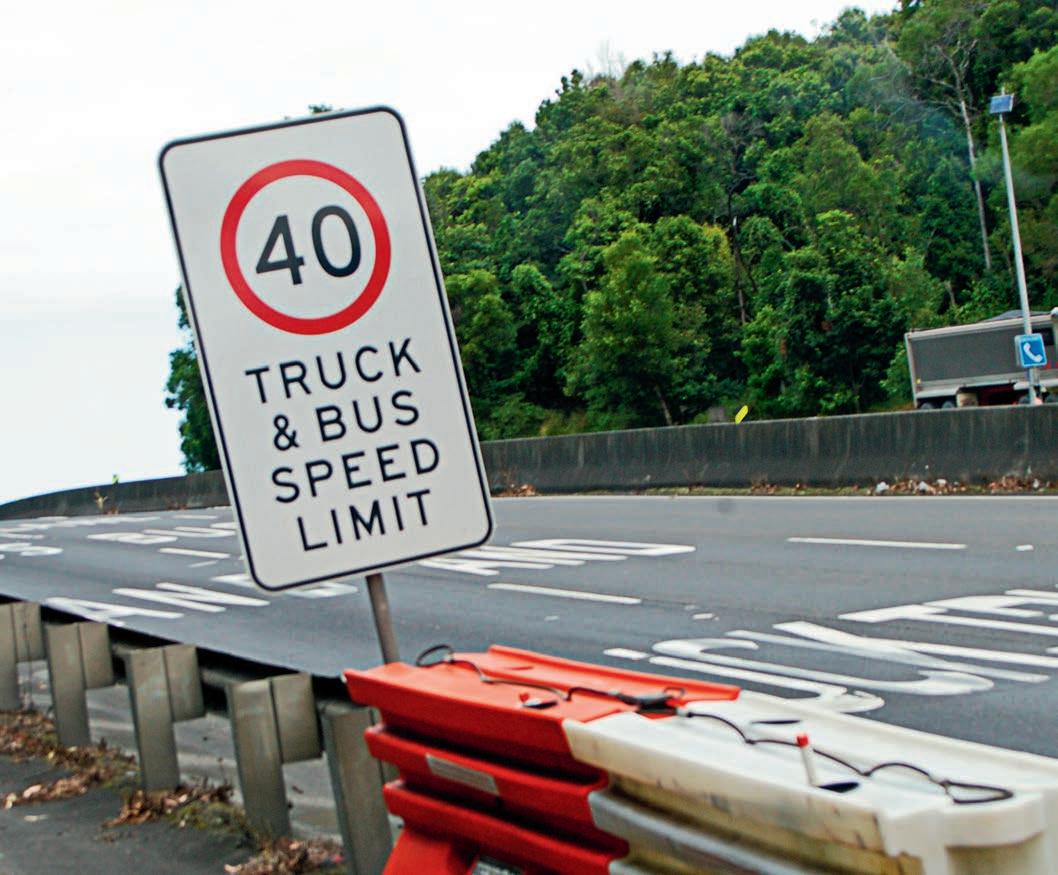
“Transport for NSW completes periodic inspection of heavy vehicles at testing stations.”




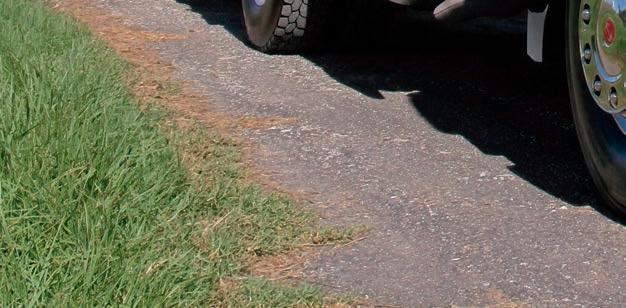



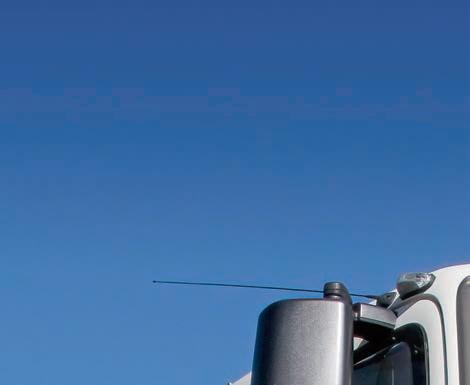

Sure, Hino may be the perennial bridesmaid to market master Isuzu but nothing, not even an occasional foible by its Japanese parent, changes the fact that Hino Australia is today equipped with the best product range in its long history here. High on the heap is a versatile 9.0 litre line-up capitalising on the modern-day brilliance of Allison automatic shifters. Through the ’burbs and beyond, Steve Brooks takes two for a run


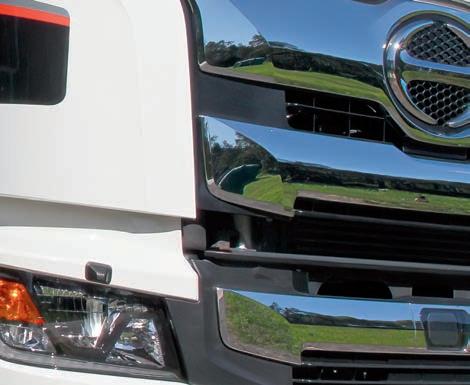
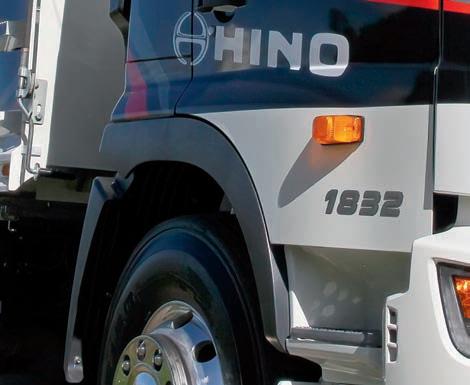
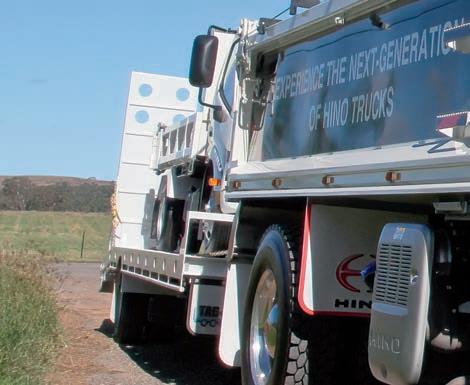
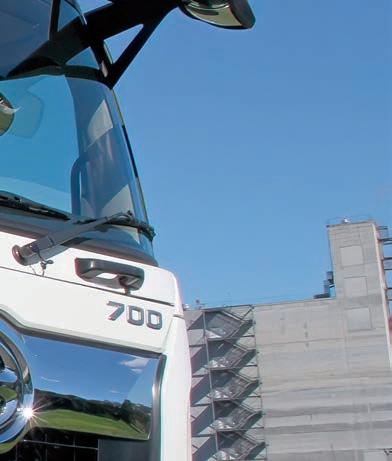
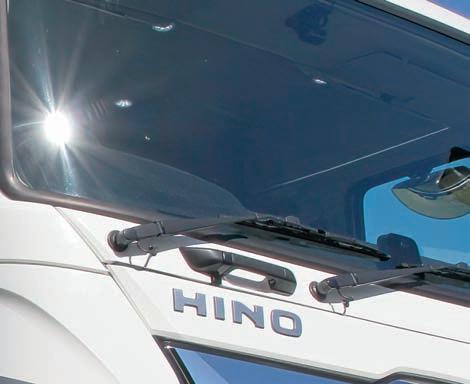

Through no fathomable fault of its own, Hino Australia hasn’t had the easiest time over the past year or two. Corporate indiscretions in Japan on emissions data, COVIDinduced production issues, and most lately, news that Toyota’s Hino and Daimler’s Fuso are set to become stablemates in coming years have to some extent impacted the brand’s competitive stability.


To what extent exactly is anyone’s guess but more to the point and with little alternative, Hino’s local leadership has simply powered on, working extremely hard to keep an entrenched customer base satisfied. In a nutshell, doing its best with what it has.
Fortunately, what it has is the best model range in the brand’s Australian history and better still, arguably the best in the business on many model-to-model comparisons with its main competitors.
There’s no question that with the launch of its new wide cab 500-series in 2017 and introduction of the much-acclaimed 700-series trucks during the difficult heights of COVID-19 in 2020, Hino’s medium and heavy-duty product range reached a new peak in almost every department.
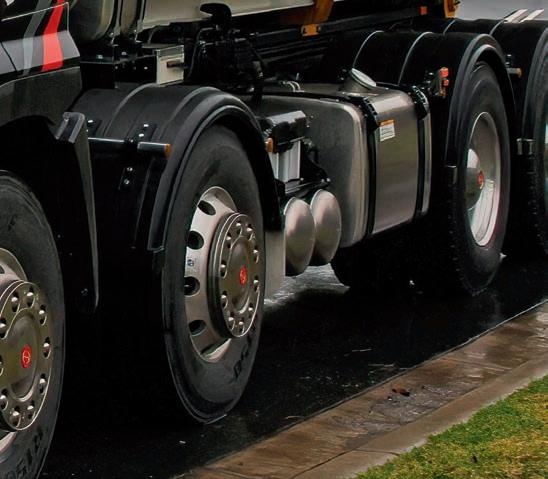
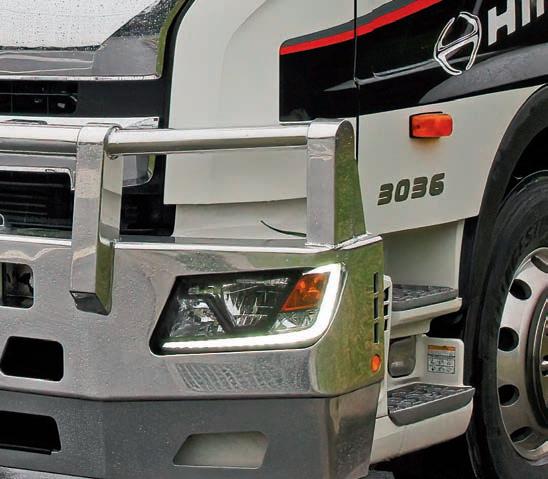
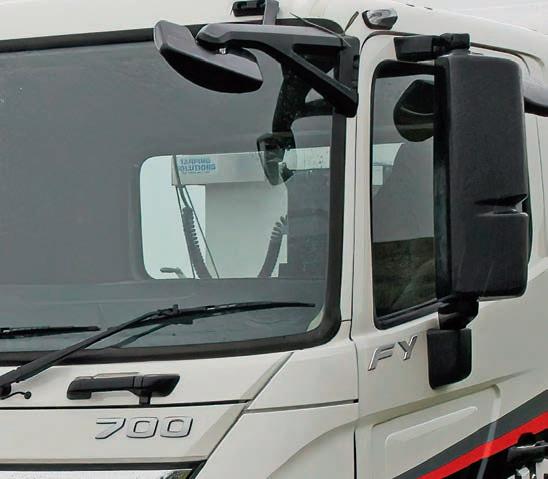
In many ways, 500-series laid the foundation for a revitalised Hino assault but it was unquestionably the arrival of the 700-series which put the brand on a broader and significantly higher pedestal. True,
the absence of a flagship 700-series model with 500hp or more was a disappointment in some estimations (including this one) but nonetheless, Hino’s local team was intent on making the most of an altogether safer, smarter and downright more appealing range of trucks.

Indeed, in casual discussions with the likes of sales and marketing chief Richard Emery and product strategy manager Daniel Petrovski, ongoing acceptance and customer demand have remained bright lights despite the unforeseen gathering of darker clouds in recent years.

For a forthright Richard Emery, however, 2022 was a memorable year for good and not-so-good reasons. A 35-year veteran of the automotive business with a self-professed capacity to roll with the commercial and corporate punches, he joined Hino at the start

of 2022 in what he insists was “… a long-term decision to take this role. I’m not here for just a two-year fling.
“Nor,” he adds sharply, “am I a panicker.”

Even so, he’d barely warmed the executive chair before being confronted with many months of production stoppages and component shortfalls which had harsh impacts on critical models in the Hino range. Asked for an estimate on how many potential sales were lost during 2022, a candid Emery put the number at around 800 units. All lost, he emphasised, “due to events completely outside HMSA’s (Hino Motor Sales Australia) control.”
In almost the next breath though, he contends 2022 was also, “… a successful year given the cards we were dealt (and) we’ll go close to reclaiming that 800 in 2023.”
No question, this year seems guaranteed to
“It was unquestionably the arrival of the 700-series which put the brand on a broader and significantly higher pedestal.”
deliver an all-time Australian record for truck sales and providing supply lines flow smoothly from Japan and local bodybuilders are able to keep pace with a booming market, Hino also has its sights set on a record result.
“There’s definitely no lack of demand for our trucks right across the range,” says a typically passionate Daniel Petrovski, ever ready to cite the features and versatility of the 700-series as major factors in Hino’s appeal. Despite being launched in the middle of Covid constraints, “700-series,” says an upbeat Petrovski, “has been the success we aimed for and not only meets but exceeds our expectations.”
“Like Daniel said,” Richard Emery chimes in, “there’s no shortage of demand and we keep asking Japan for more simply because we can sell more.”
As for continuing the ambitious and somewhat naïve hopes and dreams of previous Hino administrations to knock Isuzu Australia off its historic perch and claim top rung on the overall truck sales ladder, both men are quick to dismiss the subject. Isuzu has, after all, nothing short of an insurmountable lead.
Equally though, the threat of an aggressive Fuso taking second slot in the overall market stats obviously doesn’t sit well with the Hino faithful. Not at all, but it’s an emphatic Richard Emery who asserts, “We have a very loyal market, especially in things like small tippers, tilt trays and various niche applications.”
The goal, he insists, is to meet customer demand and maximise every opportunity. “We don’t try to be all
things to all people but what we do, we aim to do well.”
Two of a kind
Justifiably confident in its modern line-up, Hino certainly hasn’t been tentative in offering various models for road test runs over the past year and more, notably 700-series trucks in various truck and trailer configurations punched by the brand’s long-serving 13 litre engine with up to 480hp. For whatever reason though, 9.0 litre versions seem to have largely flown under our radar. Until now!
Simply stated, the 9.0 litre range may be something of a quiet achiever in the 700-series stable but even so, it has the versatility to cover a diverse range of applications and loses nothing in terms of advanced safety, comfort and appointments compared to its bigger bore brothers. Yet whereas 13 litre models are equipped with ZF’s acclaimed Traxon automated manual gearbox, all 9.0 litre models in the 700-series range come standard with the stunning smoothness, ease and operational intuition of an Allison fully automatic transmission.
Consequently, the opportunity to sample two trucks from each end of the 9.0 litre line-up was easy to accept, starting with a regional run in an FH 1832 4x2 model configured as a rigid tipper towing a single axle trailer. Then a few weeks later, a day-long stint steering an FY 3036 eight-wheeler hook-lift tipper outfit through the bowels of Sydney and its western suburbs.
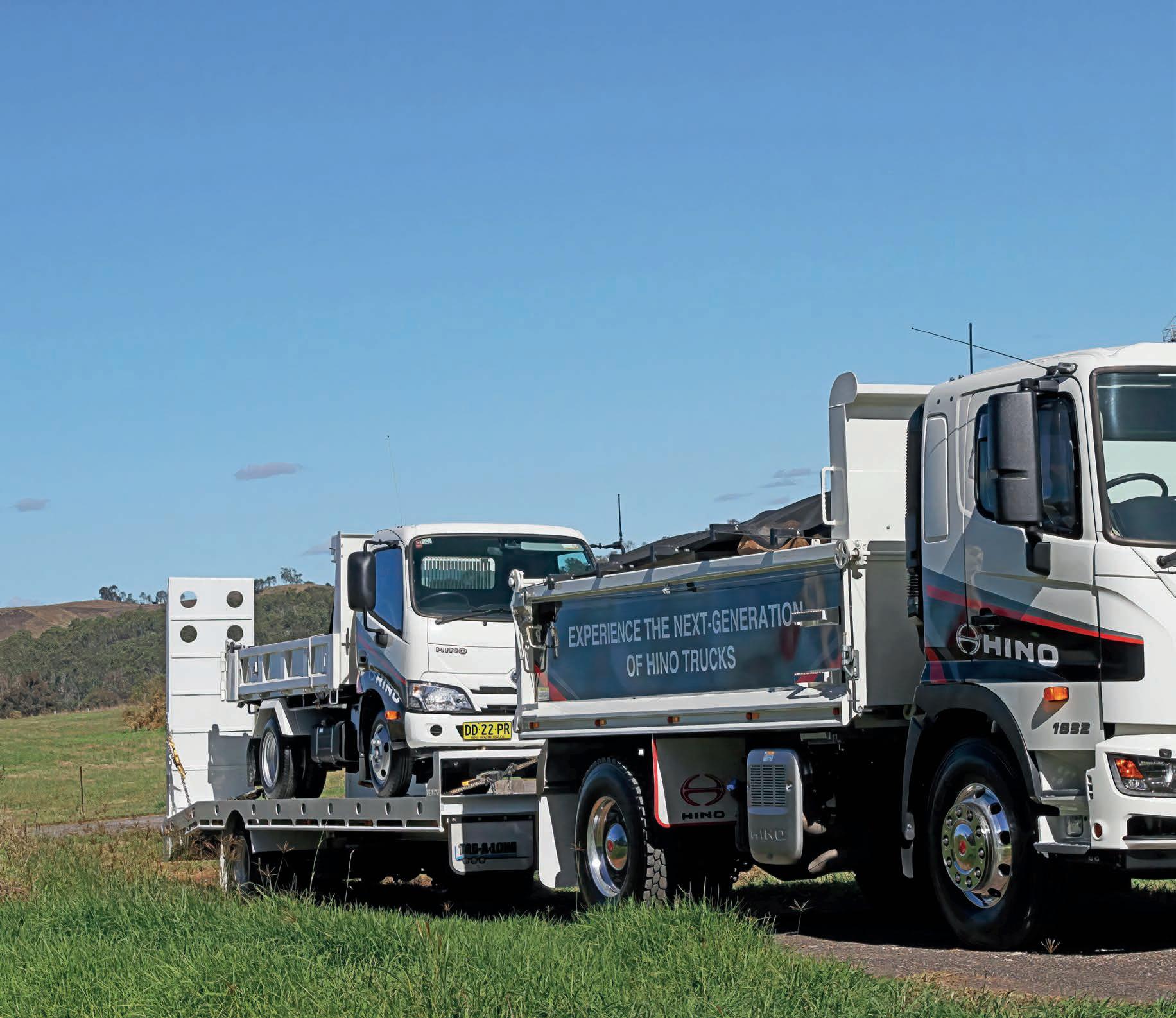
Different as they are, the two trucks also share much in common, not least Hino’s A09C turbocharged and intercooled six cylinder engine sporting a Euro 6 emissions standard derived from a diesel oxidation catalyst, particulate filter and SCR system.
Likewise, they share the same functional, airsuspended and stylish 700-series cab, and vitally, an impressive level of standard safety functions under what Hino calls its ‘SmartSafe’ system. By any measure, it’s a comprehensive and commendable package led by autonomous emergency braking and pedestrian detection as well as vehicle stability control, ABS antilock, adaptive cruise control, lane departure warning and effective auxiliary retardation through an engine compression (Jake) brake and exhaust brake.
Yet despite the extent of the safety package, the Japanese maker has stuck rigidly to drum brakes rather than discs.
Obviously enough, powertrains of the two models reflect their differing demands. In essentially rigid 4x2, 6x2 and 6x4 configurations where gross vehicle mass (GVM) ranges from 17.4 to 26 tonnes, the 9.0 litre delivers 235kW (320hp) and 1275Nm (940lb-ft) of torque, feeding through an Allison 3000-series six-speed double-overdrive automatic shifter and 5.25:1 final drive ratio.
However, it’s only in the FY 3036 8x4 model with its GVM of 30 tonnes that 9.0 litre outputs are pushed to 265kW (360hp) and 1569Nm (1157lb-ft), requiring the heavier capacity of an Allison 4000-series doubleoverdrive six-speeder with a marginally deeper 5.428:1 diff ratio.
Primarily offered as a 4x2 rigid and with wheelbase options stretching from 4.2 to 6.0 metres, the FH 1832 is the baby of the 700-series family but it also has a 500-series close relative in the guise of the GH 1832.
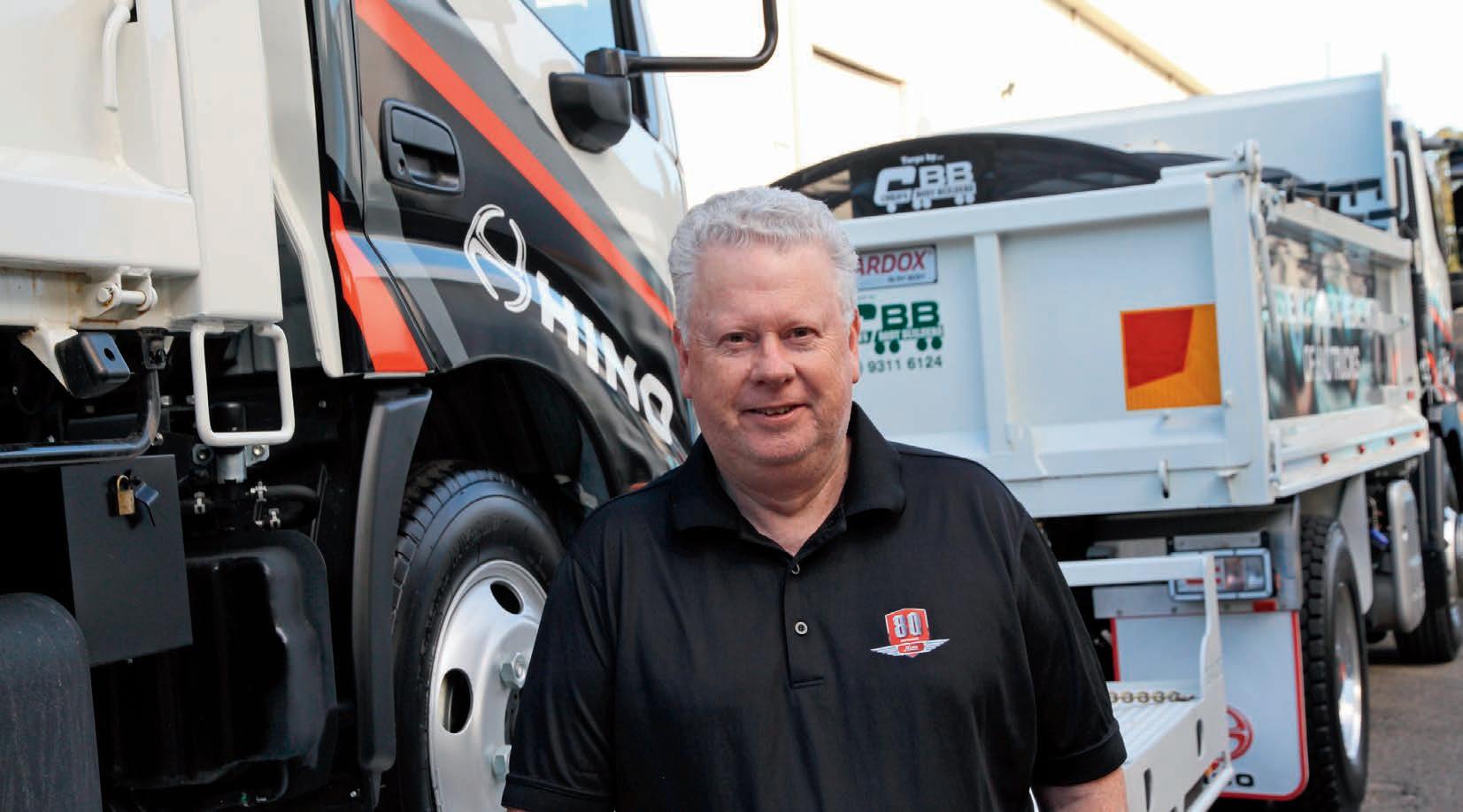

“We don’t try to be all things to all people but what we do, we aim to do well.”
So what makes the 700-series FH different from the 500-series GH? For starters, the 9.0 litre engine in the GH runs a Euro 5 emissions system but more to the point according to Daniel Petrovski, the GH cab stands around 125mm higher than its FH sibling. That, he says, is one of several reasons that despite a higher price tag, there’s a distinct customer preference for the lower entry of the FH version with its more comprehensive safety package.
One of many 700-series configurations used in Hino’s expansive demo fleet over the past year and more, our FH test unit had notched more than 18,000km and was perhaps an ideal showcase for the model’s likely workloads in construction and landscaping roles where a rigid tipper might be coupled to a low-slung trailer hauling an excavator, backhoe or the like. For this exercise, a loaded Hino 300-series tipper was a suitable substitute for a small earthmover and combined with a load of stone in the Hardox steel body of the 700-series, the outfit grossed 22 tonnes.
It didn’t take long to be reacquainted with the neat, appealing and functional layout of the 700-series cab. All controls and switchgear are easily understood and ideally placed while ride comfort, steering and overall road handling were equally impressive on a day where the combination was run through suburban streets, country backroads and fast freeways. All up, a tad over 200km of widely different conditions and traffic flows with a couple of sharp climbs in the mix.
Throughout it all, the ease, smoothness and intuitive
‘smarts’ of the Allison shifter made the most of the 9.0 litre engine’s outputs. In strict performance terms, the FH 1832 is not a barnstorming powerhouse but with the aid of seamless shifts and the entirely appropriate timing of the Allison auto, the six pot’s willingness to dig deep and use as much as possible of the torque band delivered a stoic effort. At times, surprisingly stoic.
On freeway stretches cruising through the Allison’s tall 0.653:1 overdrive top gear, 100km/h is notched at a twitch over 1600rpm.
As for fuel consumption, the truck’s return of 2.8km/ litre – or 7.9mpg for us more mature types – seemed more than reasonable over a day of vastly different demands.
All up, the 9.0 litre FH 1832 in this configuration simply showed another dimension to the diverse abilities of a highly functional 700-series model range.
Even so, it was a day behind the wheel of the FY 3036 eight-wheeler which arguably did most to highlight the attributes of Hino’s 9.0 litre line-up and in the process, demonstrate the ease and absolute suitability of the modern-day Allison auto in heavy-duty metro work.
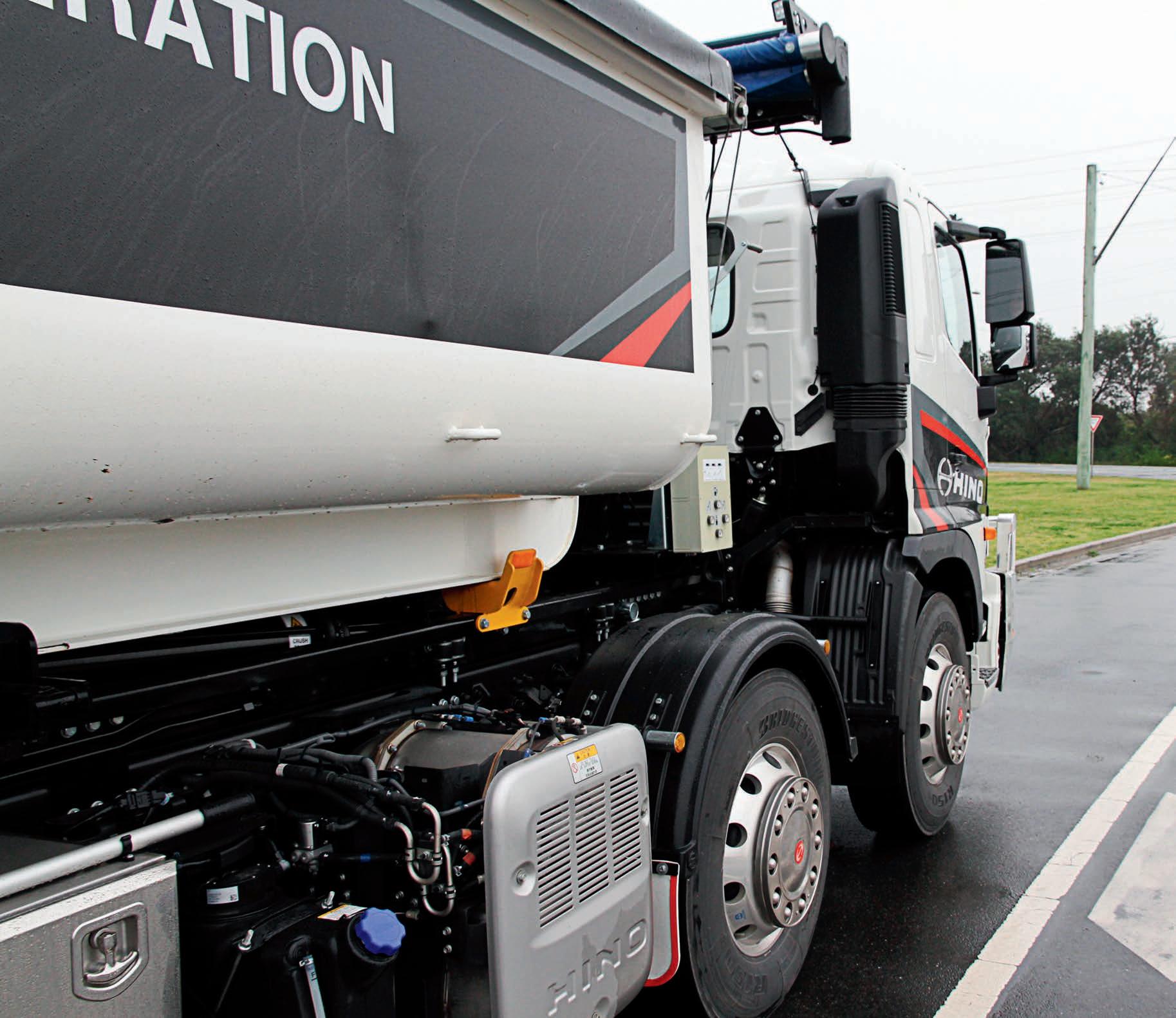
After all, and let’s be blunt, the daily demands of piloting an eight-wheeler rigid through city streets and suburban snarls are for most people, probably about as appealing as a nail through a big toe. To coin David Bowie, ‘It ain’t easy.’
Fortunately, an Allison’s attributes make the job less gruelling and combined with a truck which has
comfort and operational ease as inherent traits, mixing with mindless metro traffic on narrow city and suburban lanes is at least made more tolerable, and safer
Like the FH model tested a few weeks earlier, the eight-legger had also done its fair share of demo duties, with more than 21,000km on the clock when we drove out of Hino headquarters on a busy mid-week morning. Again, like the FH model, the 8x4 was loaded with large stones to also gross around 22 tonnes.
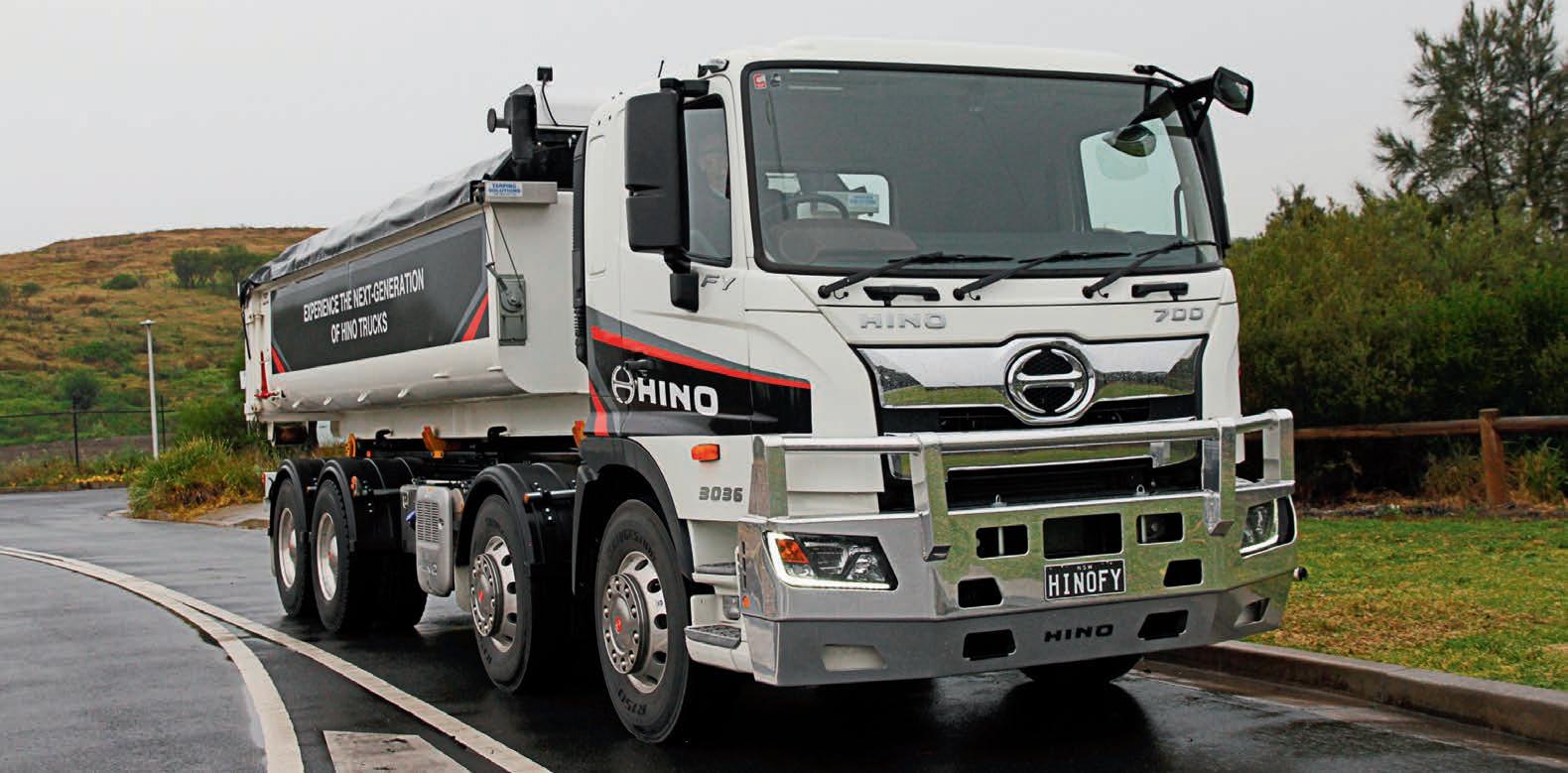
With Hino Australia’s likeably pragmatic Barry Noble along for the ride, it was an easy decision to run the truck through the sort of city and suburban conditions where hook-lift tippers make their living. Typically, almost six hours of driving resulted in little more than 120km of travel through Sydney’s main thoroughfares and inner western suburbs.
Still, and despite the relatively light weight of the test unit, it was more than enough to form the opinion that Hino’s 9.0 litre FY has the features to at least make it a respectable competitor to its Japanese rivals, namely UD, Isuzu and Fuso.
Admittedly, Hino was slow to introduce a factory-fitted twin-steer assembly with load sharing suspension and will subsequently have its work cut out to infringe on the established acceptance of its chief competitors. However, there’s no question it has the qualities to make a mark, eventually.
For starters, the 360hp version of the 9.0 litre engine is a lively and responsive performer, made all the more appealing
by the superb synergy with the Allison automatic. On the face of it, and taking into account the relatively modest gross weight, the day’s fuel return of 2.2km/litre (6.2mpg) may not seem particularly favourable but again, the truck was toiling in teetering traffic flows for the whole exercise.

Likewise, ride and handling were extraordinarily good in tight traffic and on a few surprisingly broken suburban roads, showed none of the choppiness that can afflict some twin-steer designs. It was, quite simply, a smooth performance throughout but like all eight-wheelers, don’t expect a tight turning circle.
In areas of heavy traffic, however, the FY reaffirmed our opinion that the large mirror housings on Hino’s 700-series can obstruct the driver’s field of vision, particularly on traffic emerging from the right at roundabouts and the like.
All up though, the FY 3036 demo truck provided a smooth and comfortable workplace for workloads that are often difficult, demanding and congested.
As for the powertrain, there’s a lot to like about a responsive and surprisingly spritely 360hp 9.0 litre rating working in concert with the seamlessly slick smarts of the modern Allison transmission. For city and suburban work, Hino has been wise to make the auto shifter standard on all its 9.0 litre 700-series models.
To recall the words of Hino’s Richard Emery, “We don’t try to be all things to all people but what we do, we aim to do well.”
“All 9.0 litre models in the 700-series range come standard with the stunning smoothness, ease and operational intuition of an Allison fully automatic transmission.”
In Australia’s energy transition, the road transport sector will play a crucial role. With the industry responsible for around one-fifth of the country’s total CO2 emissions it needs a clear path to renewable alternatives if Australia is to reach net zero.
Lex Forsyth, CEO and co-founder of Janus Electric, points out that the solution to achieving net zero in the road transport sector is not simply about replacing all the current diesel trucks. Forsyth says manufacturers cannot supply that many new electric trucks.
“Electric trucks currently only make up 5 per cent of all new trucks built.
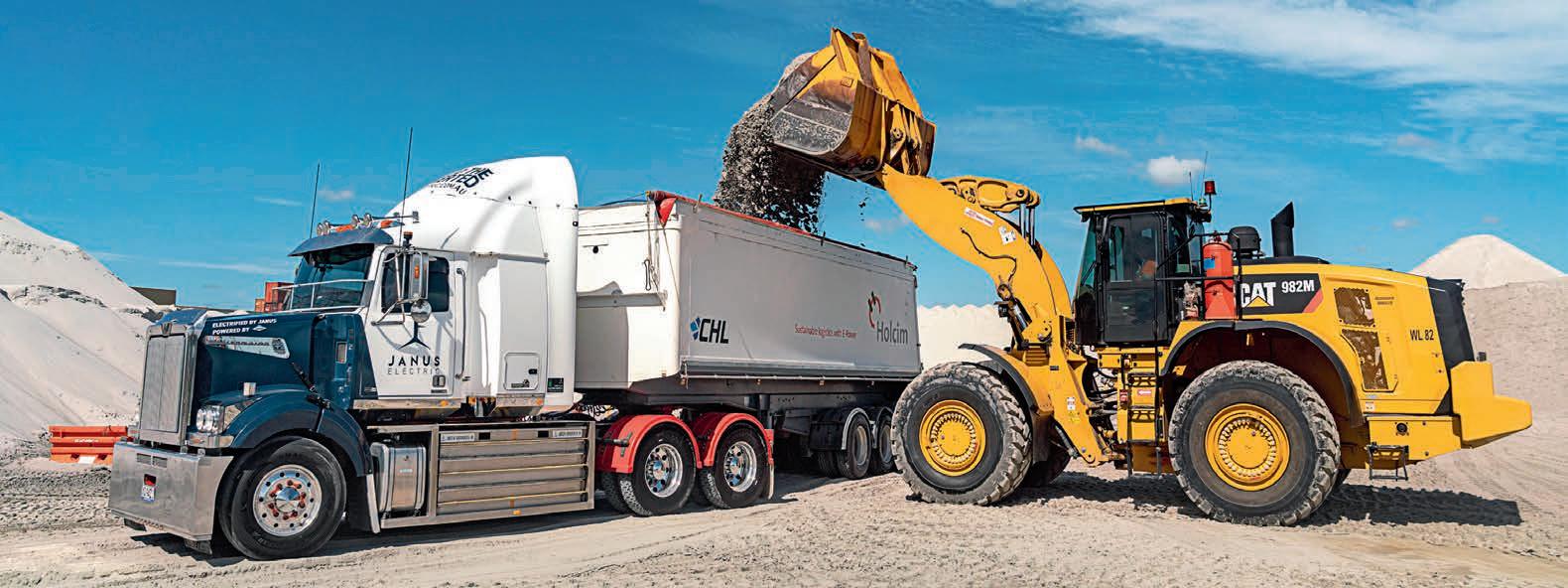

“These are fixed battery solutions that usually only work within a manufacturer’s own ecosystem. Australia needs a more holistic approach to the energy transition,” Forsyth says.
Janus Electric’s solution is to offer conversions of existing diesel trucks to battery electric, allowing operators to make the switch to renewable energy without
having to order a whole new fleet.
The Janus Electric Team first started experimenting with electric truck conversions around 2019 when they successfully converted a Kenworth T403 prime mover. This was followed by more research, alterations to the design, and converting more vehicles. Forsyth and his co-founder Bevan Dooley soon realised that they had a viable business opportunity for the Australian market. Janus Electric is now the first company to offer commercial truck conversion in Australia.
Janus Electric’s conversions are designed to be as seamless as possible, keeping most of the original truck body unchanged. A new electric drivetrain and electric engine simply replace the old diesel one and a set of swappable batteries is in place of the fuel tanks.
The exchangeable battery design is a key point of difference to Janus Electric’s trucks compared to the fixed-battery option. Instead of being fixed onto the truck chassis the batteries sit on rollers and can be removed
The shortage of electric trucks can be overcome with a conversion from diesel. Julian Daw chats with Janus Electric’s CEO Lex Forsyth about energy transition and emissions reduction in road transport
with the use of a forklift and easily replaced. This makes ‘refuelling’, as it were, much faster.
One of the biggest complaints of current electric trucks is the charge times, with most trucks taking several hours to fully recharge — that’s if the truck is first in line at the recharge station.
With a ‘swap and go’ system, however, recharging the electric trucks becomes as quick as refuelling with diesel from the pump.
Forsyth says there are many benefits a fleet manager stands to enjoy when they’re running electric trucks as opposed to diesel.
“You can be looking at a 50 to 70 per cent reduction in maintenance costs overall, not to mention a 20 to 30 per cent reduction in fuel costs.
“In addition to that drivers can enjoy trucks that produce less heat and vibrations which reduce fatigue and make use of quiet regenerative braking which opens up new delivery window times,” Forsyth says.
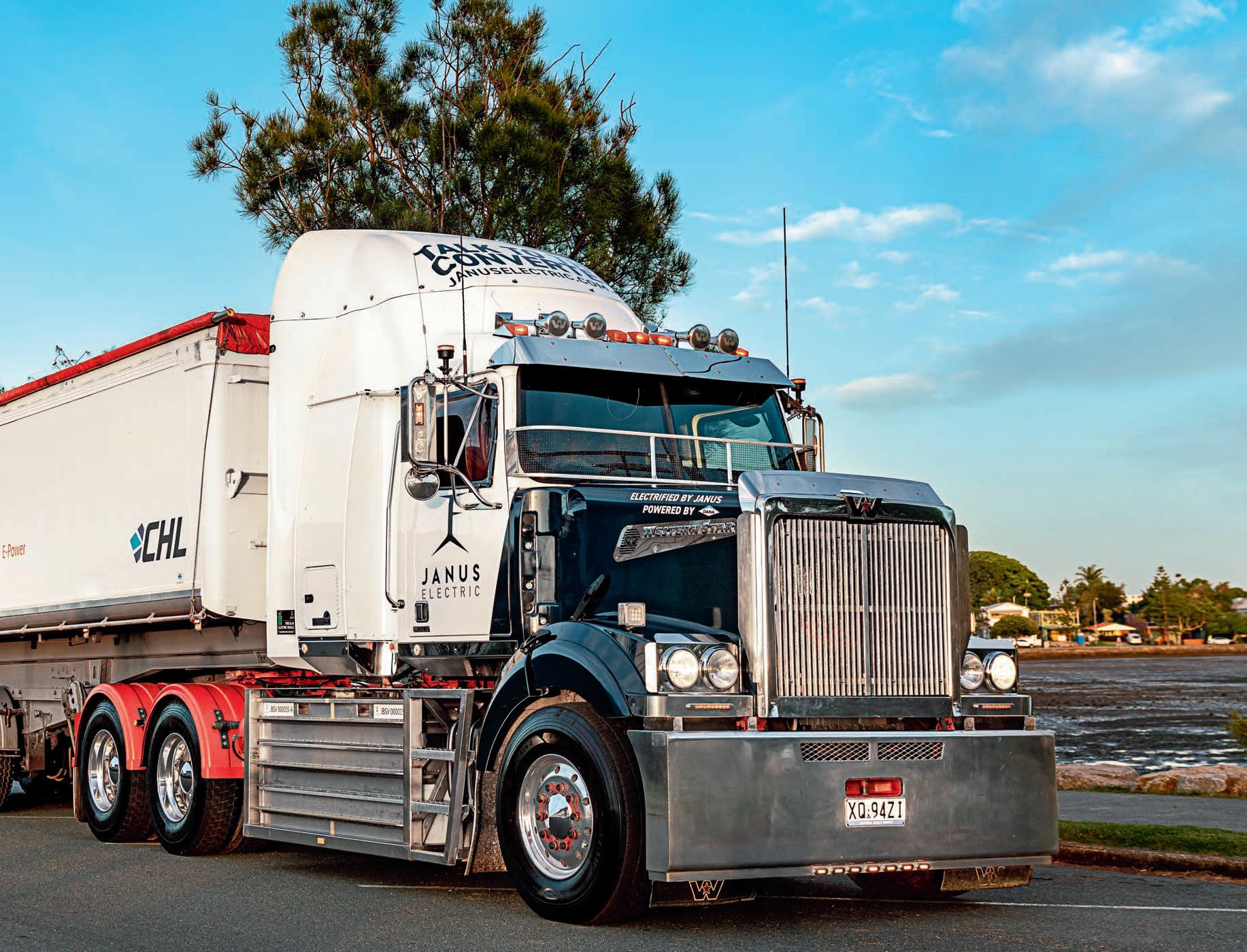
Forsyth says Janus Electric positions its conversion as an option for fleet owners that is comparable in price to a regular diesel engine rebuild.
“Our conversions costs around $175,000 per truck which is compared to around $100,000 for your regular engine rebuild.
“Most operators will find the conversion will make up that extra $75,000 difference in one to two years due to the lower running and maintenance costs.”
So, how does it work? Forsyth says 80 per cent of the current truck models are convertible with trucks up to 10 years old accepted.
First, Janus works with the client to analyse their freight task needs and look at possible charging infrastructure options for them. Janus can install charging stations onsite for companies and they also operate public swap and go recharging stations. Janus Electric will be launching the Solar Highway, opening charge stations between Brisbane and Sydney, then Sydney to Melbourne.
From there Janus will begin work on the conversion and can return the fully converted electric truck back to the customer around four weeks. Janus can also train a company’s staff on how to carry out future services on the trucks, though Forsyth says that once converted the trucks require much less servicing and maintenance than their diesel counterparts.
“These trucks, once converted, can be maintained in their existing workshops, or taken anywhere for a service really. The electric drivetrain is much simpler to look after.”
And it’s as simple as that. The beauty of Janus Electric’s conversion process is that it leaves most of the truck exactly as it was before, only the drivetrain is now electric. The drivers are just taught a few simple changes to their driving styles to take advantage of the regenerative braking, and they’re good to go.
As well as reduced operating costs, fleet owners will also have access to much richer telematics data with an electric truck.
“We have had great feedback from our clients. A forestry client has clocked up over 30,000 kilometres on the truck and is really
pleased with its performance.”
The long-term sustainability of the batteries is also a consideration for Janus Electric which is why all of their truck batteries will be repurposed for stationary battery storage at the end of their lives, usually around 7 to 10 years.
Janus Electric says it also runs a very tight supply chain with good oversight. The battery cells are imported from China and then assembled here in Australia.
Forsyth says making the move to electric vehicles is all about preparing one’s business for the future and about mitigating risks.
“Diesel fuel is already expensive, and it is only going to be further penalised.
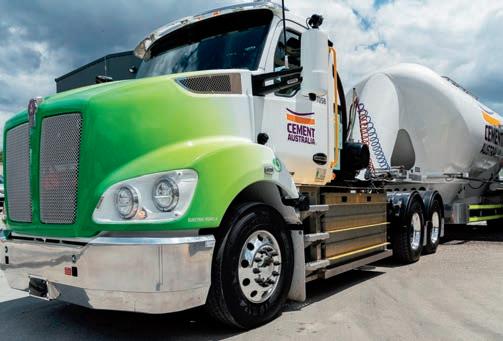
“Having electric vehicles as an option is also about preserving Australia’s energy sovereignty. As a country, we cannot continue to rely on foreign, imported fuel supplies.
“Australia has huge potential for renewable energy, and we need to start taking advantage of it,” Forsyth says.
The Truck Industry Council (TIC) and the National Heavy Vehicle Regulator (NHVR) have released the findings of the latest research project investigating the impacts of the next evolution in tyre development – wide tyres, also referred to as ‘super singles’.
Wide single and ultrawide single tyres have been available for decades internationally, however until now, there has never been a substantial study focussing on Australian road construction, in particular sprayed seal unbound granular pavements.
This knowledge has always been a barrier to the adoption of next generation wider tyres in Australia.
To address the knowledge gap, a large-scale testing program using the National Transport Research Organisation’s (NTRO) Accelerated Loading Facility was conducted.
Nine identically designed pavements were constructed, with each loaded repeatedly to determine the relative rate of pavement wear for each tyre.
The results showed the pavement
deformation rates for both the dual tyres and single tyres were within a similar range, and the 255/70R22.5 dual tyres caused the highest deformation rate.
The comparative pavement wear of super single tyres was not as sensitive to modest variations in inflation pressure, when compared to duals.
“Taking a real-world perspective on the comparatively small differences in pavement wear found, the pavement damage exhibited by the commonly used 11R22.5 dual tyre configuration was notably influenced by inflation pressure, with the highest damage observed when these tyres were over-inflated – a common occurrence in practice,” TIC technical officer Paul Caus explains.
“In addition to the finding, dayto-day use of single tyres make it easier for drivers to check tyre conditions, monitor inflation pressures, and inspect brake components reducing the risk of overheating brakes and wheel end fires.
“It can be expected that in real world conditions, the wider adoption of wide tyres would not cause a discernible increase in road pavement wear.
“TIC’s view is that there is no justification in limiting axle masses when using appropriate wide single tyres given the improved vehicle stability and efficiency they bring. They should be permitted to operate at the same mass as equivalent dual tyred axles.”
NHVR’s chief safety and productivity officer David Hourigan welcomed the report’s findings.
“The findings of this report will be of great importance to equip road managers and the NHVR with the knowledge needed during consideration of vehicle load limits and the benefits provided by super single tyres,” Hourigan says.
The project was funded by the NHVR’s Heavy Vehicle Safety Initiative, supported by the Australian Government, and was led by TIC, the peak industry body representing truck manufacturers
and importers in Australia.
TIC says it would like to acknowledge project partners the NTRO (formerly ARRB), and tyre suppliers Goodyear and Michelin for their expertise and efforts to deliver the important research.
Volvo Trucks Australia (VGA) and waste management contractor, JJ’s Waste and Recycling, have joined forces to trial the Volvo FE Electric in waste applications.
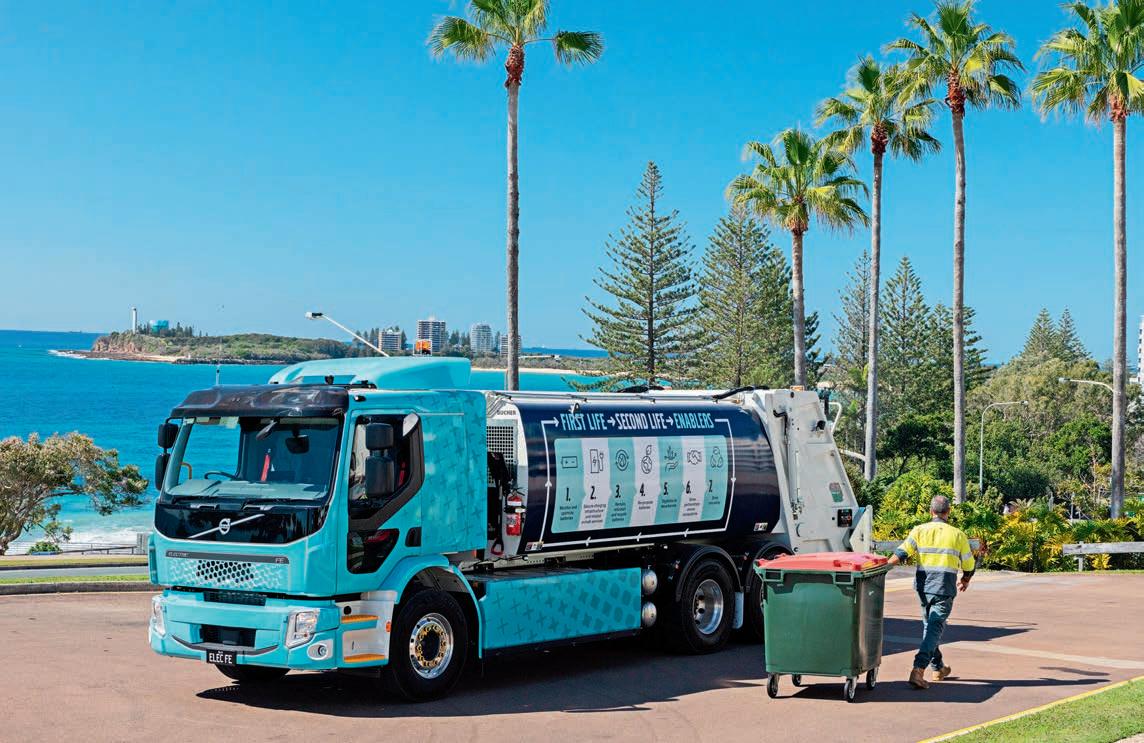
Affectionately dubbed ‘Oscar’ by VGA staff, the 6x2 FE Electric featured on the Volvo Group Australia stand at the 2023 Brisbane Truck Show. The truck has been fitted with a rear loading; 16 cubic metre waste body ideally suited for urban operations.
The three-month trial will take place on Queensland’s Sunshine Coast and will provide insights into the impact of electric PTO use on range and productivity.
Utilising four Gen 2 batteries with a capacity of 265KWh the dual motor FE Electric has a potential range of up to 220 kilometres.
“The electromobility and waste management really do go hand in hand,” says Gary Bone, vice president Volvo Trucks Australia.
“The stop start nature of this application in densely populated urban areas should prove to be a promising zero emissions solution for our cities.
“I look forward to seeing the results of this trial which will prove invaluable as we continue
on our decarbonisation journey.
“Recent developments in battery technology, which will flow down to Volvo’s medium duty electric range have seen significant increases in both range and charging performance which will only add to the attractiveness of electric vehicles in waste applications,” Bone says.
With the rear loading waste
body, the FE Electric has a potential payload of up to 7 tonnes depending on body positioning and the corresponding front axle load.
Joe Branagan, operations manager, JJ’s Waste and Recycling also shared his enthusiasm for the trial.
“This is the perfect opportunity for us to understand how we
can decarbonise our fleet over time,” Branagan says.
“Clearly we can’t just switch to electric overnight so partnerships like the one we have with Volvo Trucks are vital to see what applications we can put electric trucks to work in now as well as what the future of zero emissions waste management could look like.”
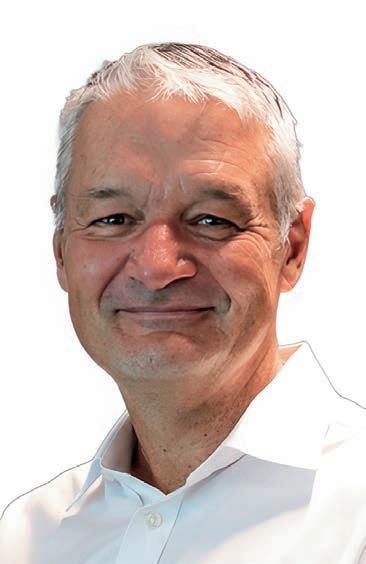
One of the problems with wiper blades is that they pick up road grime, which lifts the rubber of the blade off the screen and causes streaking or in the worst case, lack of operation.

on the market, is providing a solution to the problems of streaky windscreens during rainstorms and snow conditions, therefore improving safety for all road users.
Volvo Group has unveiled Australia’s first zero-emissions battery electric truck, supplied to the ACT Emergency Services Agency (ESA), at the Australasian Fire and Authorities (AFAC) conference at the Brisbane Convention and Exhibition Centre.

ACT Minister for Police and Emergency Services, Mick Gentleman MLA; Acting Commissioner of the ESA, Jason Jones; ACT Fire & Rescue chief officer, Matthew Mavity; Deputy head of Mission at the Embassy of Sweden, Per Linnér, and guests joined Volvo Group Australia president and CEO Martin Merrick in the handover of the inaugural e-vehicle.
The purchase is said to be a significant milestone in the partnership established between Volvo Group Australia and the ESA in July 2022.
The vehicle is a Volvo FL Electric, which Volvo explains is a solid and nimble truck designed for urban and city environments. With a
superstructure designed and made in New Zealand, the FL Electric will be used for important tasks including operational support for Fire & Rescue teams.
Martin Merrick, president of Volvo Group Australia, says transport accounts for 19 per cent of Australia’s carbon emissions, with 38 per cent of that from road vehicles.
“With this project, government and the emergency services are leading by example in moving to net-zero vehicles.
“Early adopters like the ESA and ACT Government should be commended and Volvo is proud to be supporting their work to shape a more sustainable world,” Merrick says.
Following initial Volvo driver development training and vehicle implementation processes, this first vehicle is expected to go into operational service in and around the ACT in early 2024.
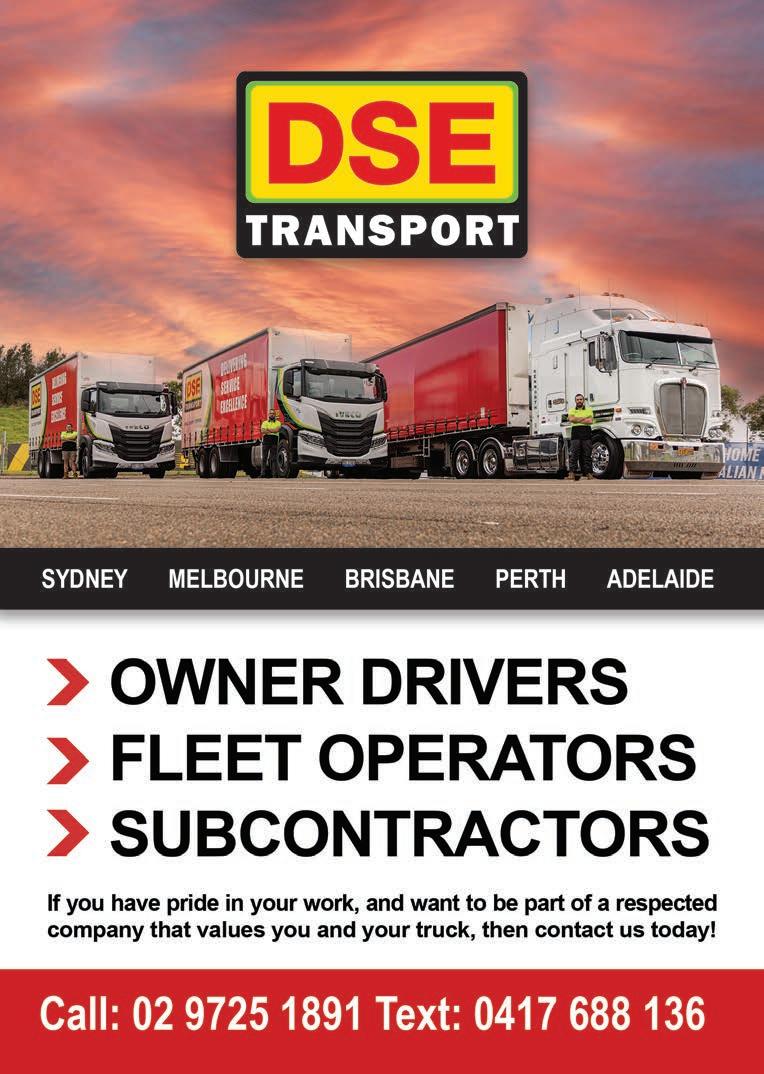
Narva has announced the release of a new range of LED headlamp globes which it says provides a major increase in light output particularly for vehicles fitted with older halogen globes.

A key benefit of the new Surefit GEN II LED globes is that they feature the same dimensions as the halogen globes they’re designed to replace, which Narva says ensures easy and hassle free installation in the workshop or for owners who prefer to DIY.
The Surefit GEN II LED globes offer a 5000 Lumens per pair of crisp white light (5700 deg. K), which more closely resembles daylight, reducing eye fatigue especially for owners who spend long hours driving at night or in low light conditions.
Another feature of the
new range is its precise beam cut-off, this ensures sharp cut off on low beam applications, directing the light to the road where it’s most needed, reducing stray wasted light. And when high beam is engaged, the globes offer increased beam width and distance combined with an extremely even pattern.
Narva says, aside from lighting performance, the Surefit GEN II LED globes excel in their longevity and reliability. The globes feature a reinforced housing with no filament and are equipped with low-draw LEDs which produce less heat. An in-built IP65 rated fan also assists cooling, and together this delivers an operational life that’s up to 25 times higher than halogen counterparts.
Suitable for many truck, car and motorcycle models, the new globes are available in a range of fitments: H4, H7, H8/9/11 and HB3 for standard headlights and H7 for projector style headlights.
However, the Clear Vision Strip removes road grime from the wiping section of the blade enabling the wiper blade to present clean rubber to onto the screen, resulting in the operation of the wiper blade in an as new condition for a very long time.
Test wiper blades have operated in this fashion for up to four years. The reality is the Clear Vision Strips claim to pay for themselves in a short time.
Clear Vision Strips, a new product
Clear Vision Strips were originally conceived in 1997 and, after 12 years of development, the product received Patent Pending approval by the Australian Patent office. It has since undergone 23 years of modifying, testing and perfecting to be ready for use today on trucks, buses, and any other vehicle that experiences the danger of streaking, smearing and water sheeting on the windshield.
For further info on Clear Vision Strips, see the website at www. clearvisionstrip.com.au


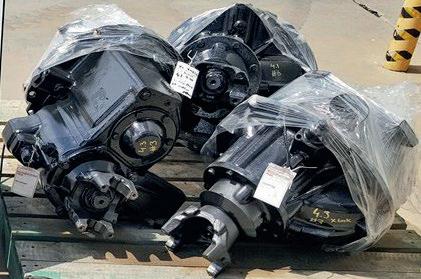


means the driver will get a restful night’s sleep. The GigaSpace can also be fitted with an additional second fold down bunk bed for those who need to double up.
While the GigaSpace cab is taller, it is no longer than the standard Actros cab, maintaining its versatility regarding overall length regulations.

Mercedes-Benz Trucks has also taken the opportunity to introduce an improved version of its optional MirrorCam system. The Actros was the first truck manufacturer to replace traditional mirrors with cameras relaying the footage onto screens in the cabin in Australia and New Zealand in 2020.

Apart from reducing drag, the cameras also improve visibility by removing the traditional mirrors from the driver’s field of view.

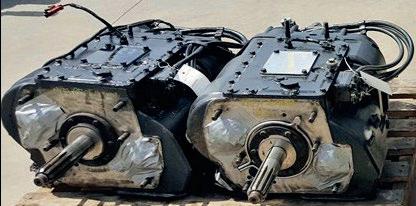
The exterior camera wing has been redesigned and is now 100mm shorter, while the screen resolution has been improved along with the low-light visibility.





Mercedes-Benz Trucks has announced the addition of new tall GigaSpace cab to its options list. The new cab, which made its public debut with the Actros 25 Driver Edition at the Brisbane Truck Show in May, is now an ongoing fixture in Australia and New Zealand.
The ‘home away from home’ features 2.13 metres of interior height, measured from the floor between the seats to the ceiling, providing ample room for the tallest drivers. Other benefits of the GigaSpace
include the increased storage with three large cupboards built into the front of the truck, sitting above the windscreen. An optional microwave can be installed in the centre cupboard.
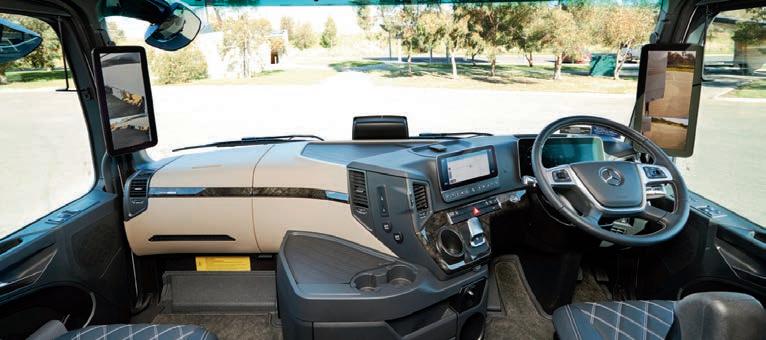
These cupboards are in addition to the space under the bunk, which can include two pull out fridges that are within arms’ reach of the driver.
The standard Actros fixed bed provides a width of 750mm (without any foldout sections) and the locallysourced thick inner-spring mattress

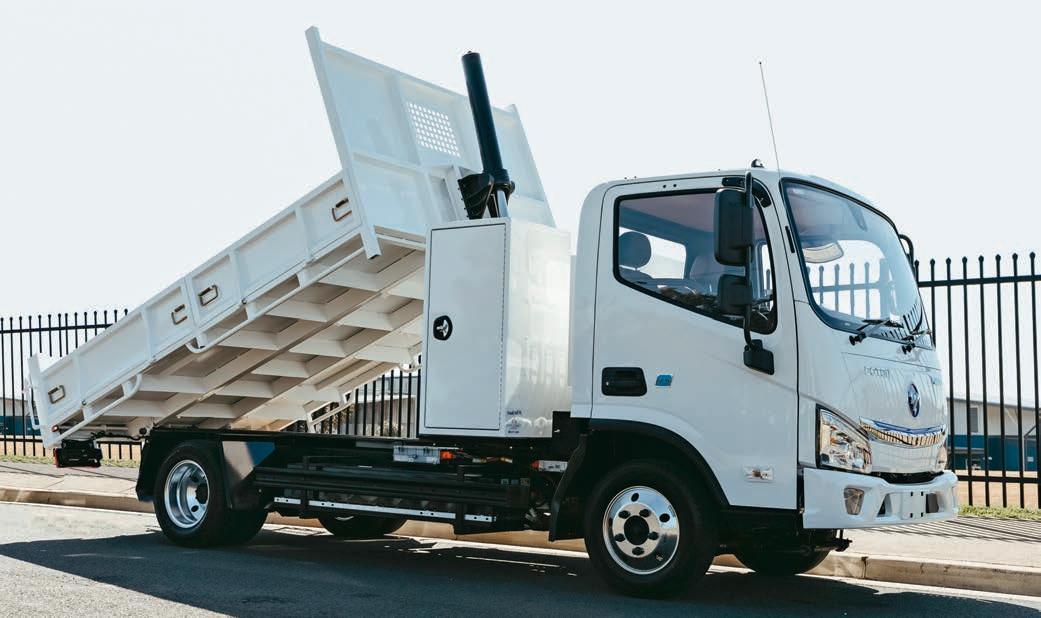
Foton has launched what it says is an Australian first with the T5 EV Tipper, the first all-electric ready-to-go tipper, combining peak sustainability with real-world performance.
Foton says the model’s leading point of difference is its unique for EV 3500kg braked towing capacity, making it a practical alternative for municipalities, landscape companies, infrastructure support, construction specialists and more.
Another reported strength of the package is its adaptability, with the model available with a rated GVM of 4,500kg for car licence operation, or 6,000kg for light rigid licenced drivers, with either option allowing for towing.
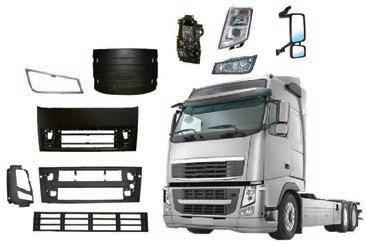

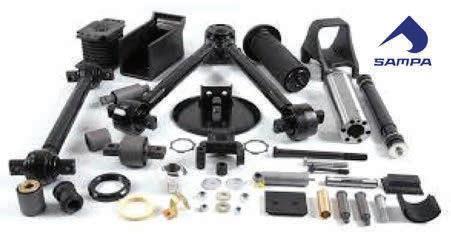
Featuring an Australian-made steel tipper body, Foton says the T5 EV is available for quick delivery from Foton Mobility Distribution’s nationwide network of dealerships.
“Here at Foton Mobility Distribution, we are particularly proud of the T5 EV Tipper, as it combines the positive attributes of going all-electric, while also providing the performance and towing capabilities that are required in the real world,” says Bill Gillespie, Foton Mobility Distribution’s general manager – Light Duty Vehicles.
“From a financial standpoint, it makes a lot of sense, as the model allows for a genuinely affordable entry into the EV tipper market, with 20 per cent lower upfront and operational expenditure costs.
“While Foton Mobility Distribution’s EV truck offering is new to Australia, it comes with impressive credentials from markets around the globe.
“Last year alone, Foton led the world in producing over 22,000 new energy commercial vehicles, and
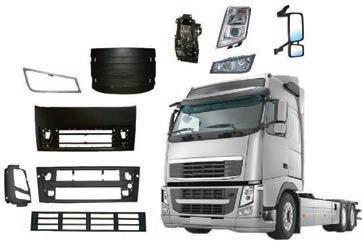
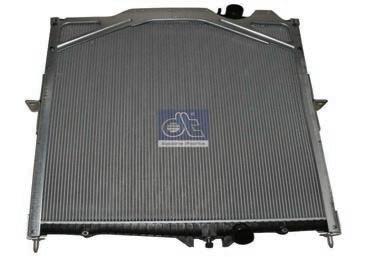


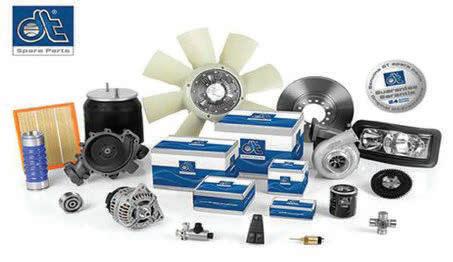
with that number continually growing, purchasers can be confident that they are receiving a proven package,” Gillespie says.
“In the short time that we have been on sale here in Australia, we have claimed leadership in the pure-EV truck sales race, and with the T5 EV Tipper, we are looking to continue that growth.”
Outside of the tipper application, Foton says the T5 EV can be configured for practically any final application in the light-duty field.
The DC fast charging claims to allow for full recharging in 1.5 hours, or alternatively, the standard 11kW AC onboard charger can fully recharge the drive battery in just 7.2 hours, allowing for overnight turnarounds.
The T5 EV has a fully loaded range of 180km, while also offering a full safety suite, including a LowSpeed Pedestrian Warning System, a comprehensive electronic braking and stability support package, dual SRS airbags, as well as reversing radar and buzzer.


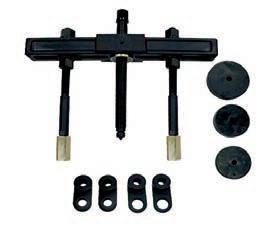
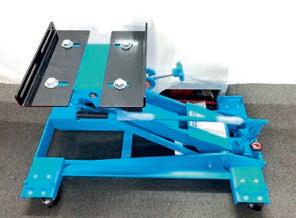










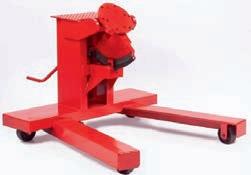



The East Gippsland Heritage Truck Display has announced that the dates for its 2023 event are Saturday, November 18 to Sunday November 19.
The organisers wished to advise that the event is open to all trucks of any age reflecting the history of transport in Australia.
There’s also live music, kids entertainment including a jumping castle and model trucks.
Catering is provided plus show attendees will be able to purchase American Truck Historical Society Club merchandise.
Admission for adults is just $10 per day or $15 for a two-day pass. Children under 16 can enter free of charge. There’s also a Saturday night dinner with free camping for exhibitors.
Organisers advise that dogs brought to the event must be on a leash.
For further info contact John Burley on 0413 516 233 or Terry Whelan on 0408 516 144.
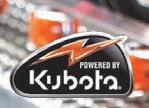
The BP Roadhouse in Clermont, Queensland has had a stylish update with a new retro themed dining area, ideal for the seasoned truckies out there.
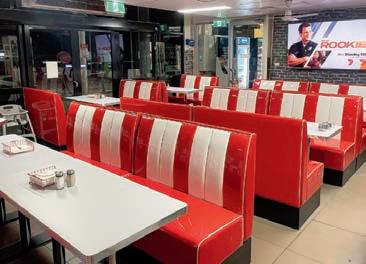
For those with aches and pains after a long haul, there’s also a massage chair. An arcade game adds to the retro feel. The big jumbo breakfast is another reminder of the good old days.
There’s also an 80-inch TV, although it’s doubtful that TV’s that size were around in the ’50s and ‘60s.

Also for truck drivers, there’s the newly renovated truck parking area, plus shower and laundry facilities.

Castlemaine calls for sponsors


Organisers of the HHA & Larsen’s Castlemaine Rotary Truck Show are putting the call out for sponsors and exhibitors for this year’s big
Victorian event on November 25–26.
Planning is underway for an even bigger and better show this year and organisers are looking for more involvement from the industry to be part of the action.
“This (Castlemaine) show produces


the best trucks in the country and the people who support it set the benchmark in trucking,” says HHA’s Jon Kelly.
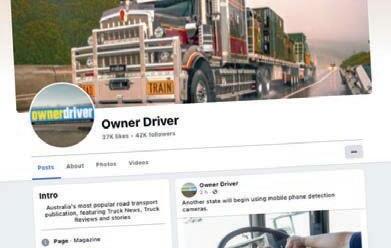


For further info, see the website at https://rotarycastlemaine.org.au/ page/truck-show.

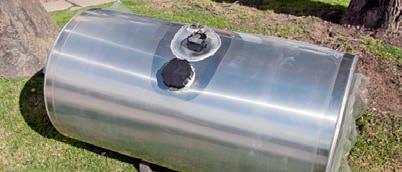


Any experienced truckie will tell you that one of most important parts of the role is actually rest management. Safety is such an integral part of the job because, as we know, this is the profession which sees the highest amount of fatalities in Australia.
A big concern that myself and a lot of other drivers have is there just aren’t enough suitable rest stops, especially within the metropolitan areas for drivers to rest up and get refreshed. I’d like to see an increase in the amount of rest areas around city outskirts as well as facilities within them, like toilets and showers.
Relying on service stations to supply such facilities isn’t working. This, coupled with the fact that quite a few local operators are using these parking areas as a depot, makes it just about impossible to find a spot within the city limits.
The reality is operators should be making enough money to fund their own parking. If you’re running a business you should be able to afford a yard or some form of premises where you can base your vehicles. If this is not something that is sustainable or manageable, perhaps one needs to look
at what’s happening in their business. People should be able to afford to lease, buy or rent a place to park their trucks. It all goes back to the ones at the top of the supply chain, who are making all the money, needing to pay us enough to afford what we need to drive safely and make a decent living.
This is not just an issue facing owner-drivers; I see trucks from big companies parked around suburban streets in every state, so I think it would be safe to say this is an issue that affects many of us in the trucking industry. Of course we have regional operators who have large blocks of land, or farms, so for them parking isn’t an issue. But for the majority of us this something that we face regularly. This also causes problems for the general community as who require street parking, as well as other businesses.

I’m hopeful that at some point, the Heavy Vehicle Rest Area Steering Committee, chaired by Senator Glen Sterle, could examine the possibility of better rest areas around the outskirts of the big major cities, as well as larger regional towns like Albury-Wodonga. This would alleviate some of the pressure of finding suitable rest areas within cities. Personally, I think that state or local governments could look at establishing mini truck cities with services leased to related businesses and facilities, and parking managed by councils.
Rest areas are one of the big things that would make our lives easier as ownerdrivers and operators, and a crucial part of why we’re calling on Federal Parliament to back change in this industry. On August 5 it was great to see so many people turn out at national industry-united convoys reinforcing to government the need for reform for the transport industry.
I participated in Adelaide, one of many convoys taking places around the nation. The aim was to send a message to Federal Parliament that truck operators, owner-drivers, as well as drivers from other sectors like the gig economy and taxi industry, and industry associations and employers, all want urgent reforms passed to make the industry safer and fairer.
I was proud to stand alongside transport workers around the country, as well as business owners, in calling for safer and fairer conditions throughout the industry. After Glenn Sterle’s two-year Senate Inquiry set out 10 recommendations to fix the crisis in the industry, we’ve had 100 truck driver deaths. We want Federal Parliament to pass reform to act on those recommendations. With safer driving conditions for truckies and more rest stops for drivers I feel confident that future generations will experience a safer, fairer and more sustainable industry, which is good for everyone.
I had a read of Andrew Hammond’s ‘Letter to the Editor’ in the July edition of OwnerDriver where he responded to my article in the prior month.

While I appreciate that he hasn’t had the misfortune of authorities being overzealous and heavy-handed, this is not the experience of either myself, or other truck drivers that I’ve spoken to.
With regards to his comment querying the accuracy of my remark on truck drivers being penalised for minor infringements, in the particular case of spelling errors, the instances are based on anecdotes that have been provided to me and I have little reason to doubt the veracity of those I spoke to.
However, the main overarching issue, which I don’t want to get away from, is this is just one part of the unnecessary heavy-handedness experienced by drivers at the hands of authorities.
I also want to reemphasise that this isn’t about me complaining about my lot as a truck driver as it is wanting a fairer and safer experience on the roads for all road transport workers.

“I was proud to stand alongside transport workers around the country.”
D'ANGELOUNKNOWN 2012,2012DANGELOagitatortrailer.York triaxleondrumbrakes,bowltakenoffcleanly.Repairable38ATM.
KENWORTHT403 2012,CumminsISME5engine,Eatonultrashiftplus FO-16E310C-LAS,MeritorRT40-145diffswithX-lock,cabparts,DPF, Adblue,Alcoas.W2557. TA1188114. POA

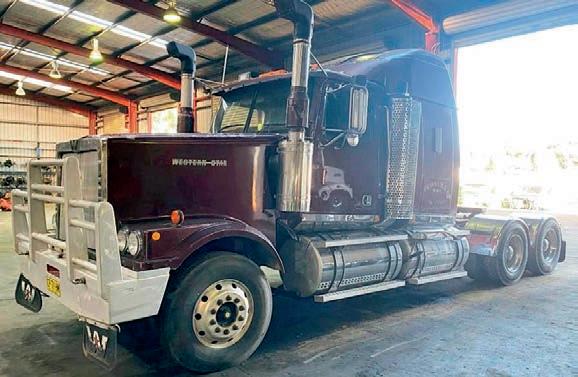



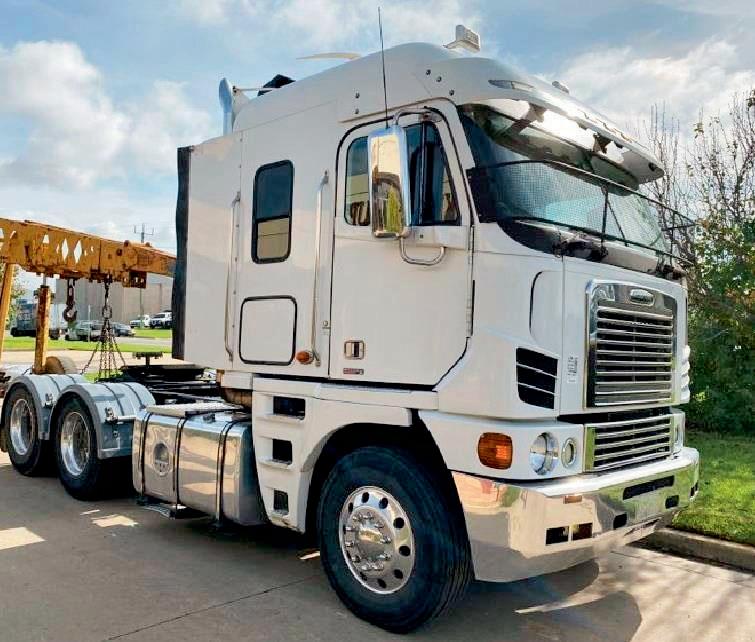


FREIGHTLINERARGOSY 2019,DD15engine,ultrashiftgearbox, MeritorRT46-160diffsonairlinersuspension,cabparts,Alcoas. Wrecking.W2550. TA1176464. POA
FREIGHTLINERC120 2000,RTLO20918Bgearbox,MeritorRT46-160 diffsonairliner,aluminiumbumperbar,cabparts,Alcoas.Wrecking.
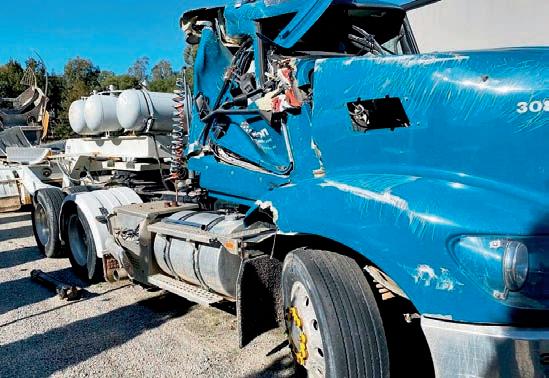
MACKTRIDENT 2013,engine,Mdrivetransmission,MeritorRT46-160 diffsonHendricksonsuspension,cabparts,hydraulics,aluminium tipperbody.Wrecking.W2547. TA1170122. POA
WESTERNSTAR4900 1999,primemover,CumminsGen2 engine,RTLO20918Bgearbox,MeritorRT46-160diffsonhas, aluminiumbullbar,cabparts,Alcoa,jostfixedturntable.Wrecking. W2553. POA


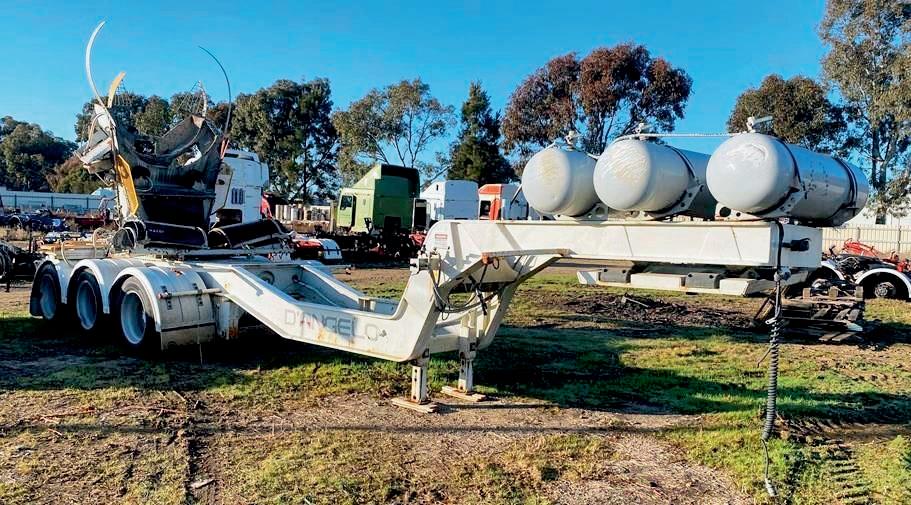
MACKVISION 2007,CCRSenginepartsonly,RTLO20918Bgearbox, MeritorRT46-160diffsonhassuspension,droponcab/sleeper,drop onbonnet,hydraulics,Alcoas.Wrecking.W2551.
FREIGHTLINERARGOSY 2013,DetroitDD15engine,RTLO20918B gearbox,MeritorRT46-160diffsonairlinersuspension,aluminum fupsbullbar,cabparts.Wrecking.W2540. TA1158892. POA
MANTGA26-480 2007,480HPengine,ZFautogearbox,airbag suspension,cabparts,bullbar.Wrecking.W2544. TA1170116. POA



FREIGHTLINERARGOSY 2010,Detroit14LEGRengine,RTLO20918AS3 gearbox,MeritorRT46-160diffsonairliner,cabparts,fueltanks, alcoas.Wrecking.W2527. TA1137354. POA
KENWORTHT408 2008,CumminsEGRengine,RTLO20918Bgearbox, SpicerRT46-170diffsonairglide460,cabparts,fueltanks,alcoas. Wrecking.W2528. TA1137355. POA
FREIGHTLINERCORONADO 2013,DD15enginepartsonly, RTLO20918Bgearbox,MeritorRT46-160diffsonairlinersuspension, droponcab/sleeper,RTSA/Cunit,Alcoas.Wrecking.W2552. TA1176470. POA

































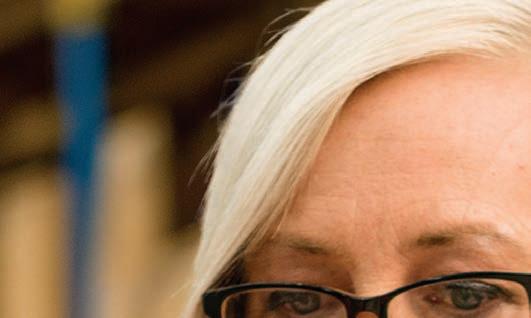





































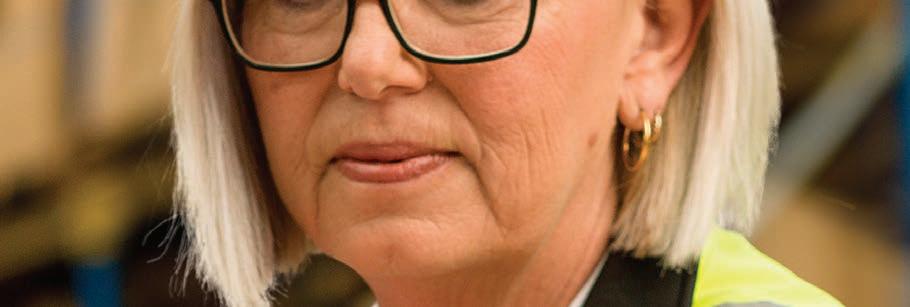
At Isuzu, we’ve always taken great care of our customers.
We’re Australia’s number one truck… an honour we’ve held for over three decades. That means more businesses put their trust in us than any other truck brand. We understand that reputations are riding on us and that’s why Isuzu Care is more than just an aftersales service package.
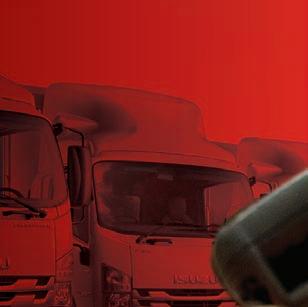

It’s part of our DNA.

















From day one, we support customers and demonstrate that reliability is everything. We pride ourselves on being proactive and always going the extra mile. And as we look to new frontiers, we’re finding new ways to help our customers exceed their goals.



Isuzu Care is what sets us apart. Always has, always will.



































